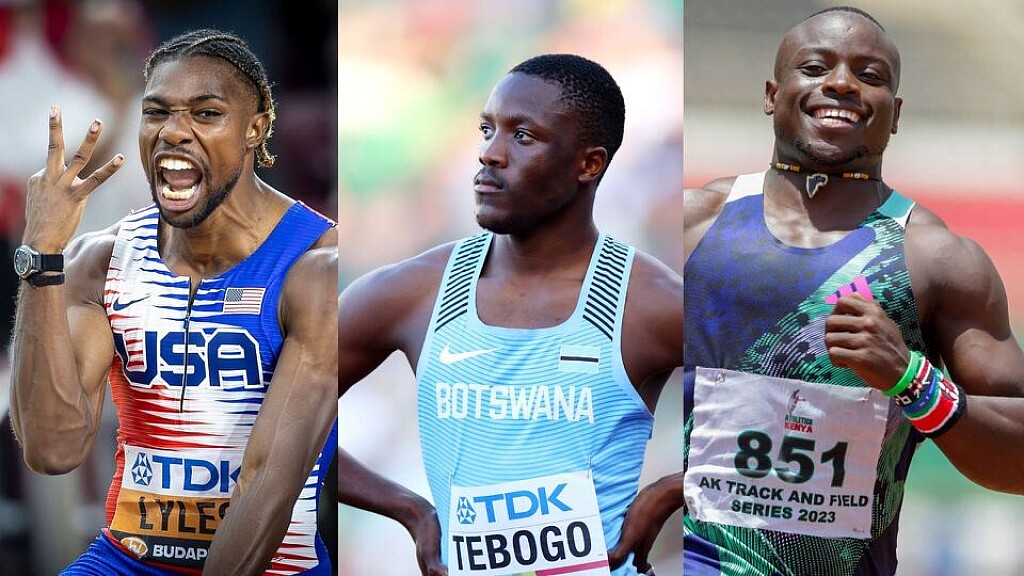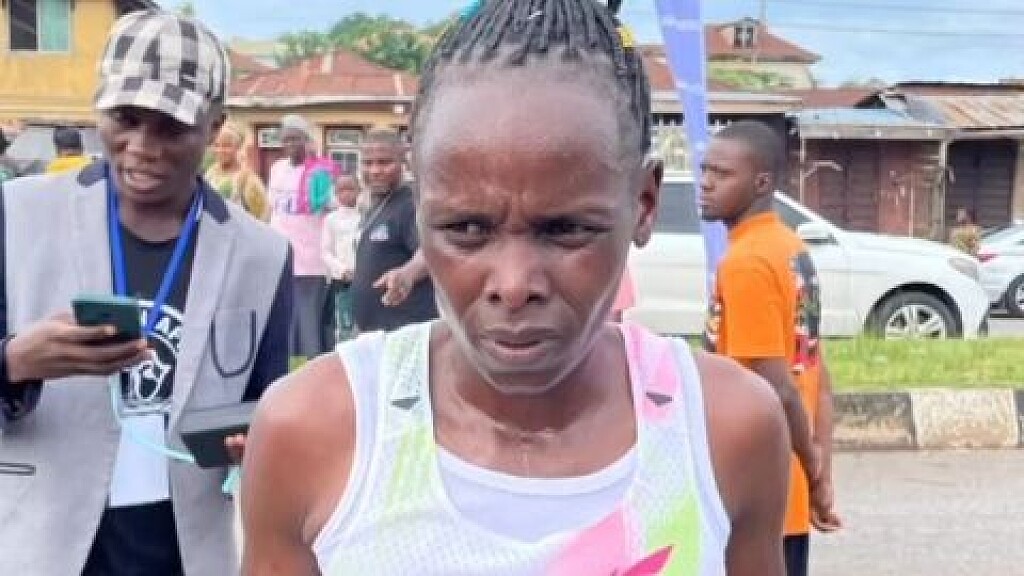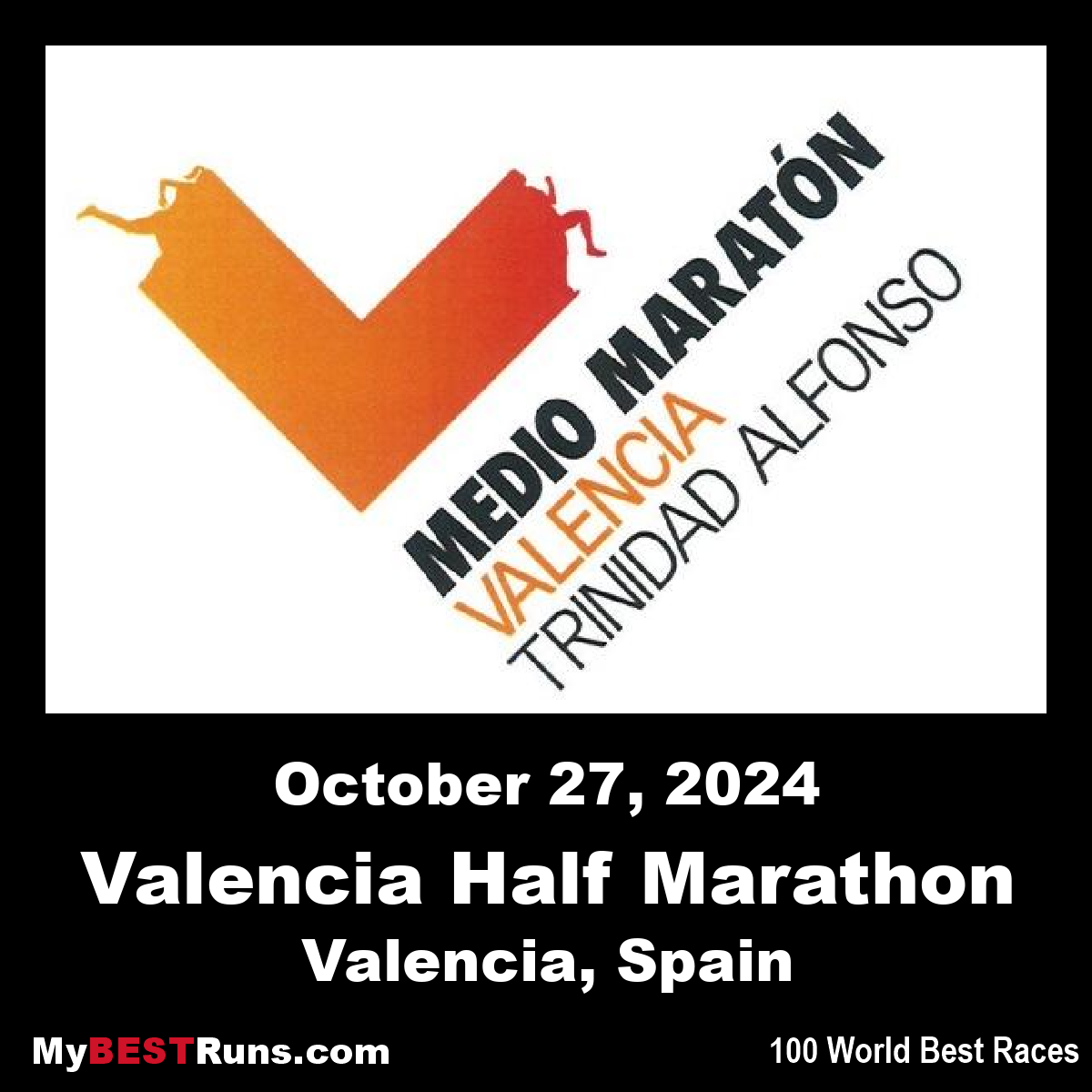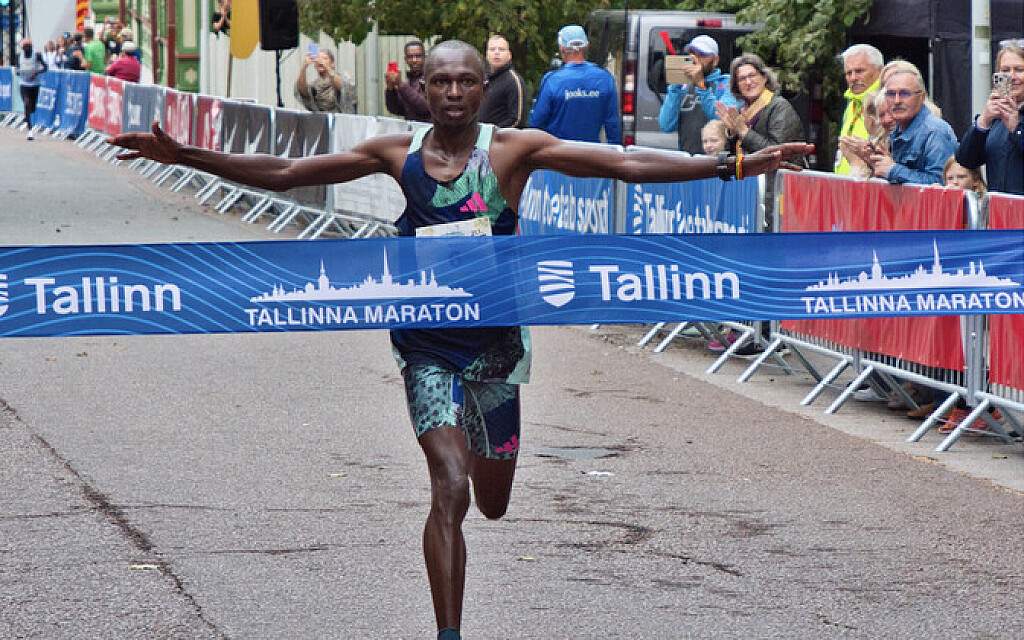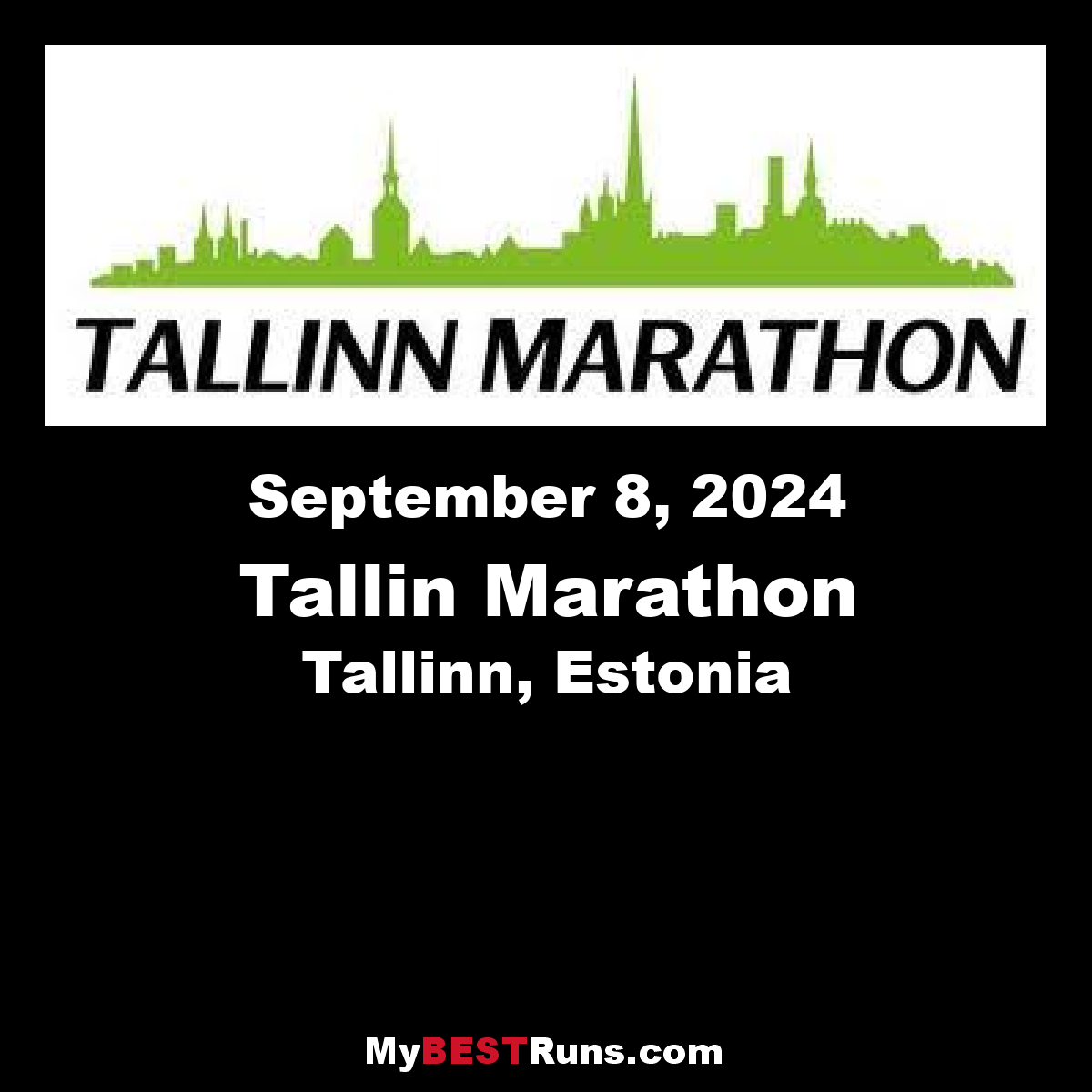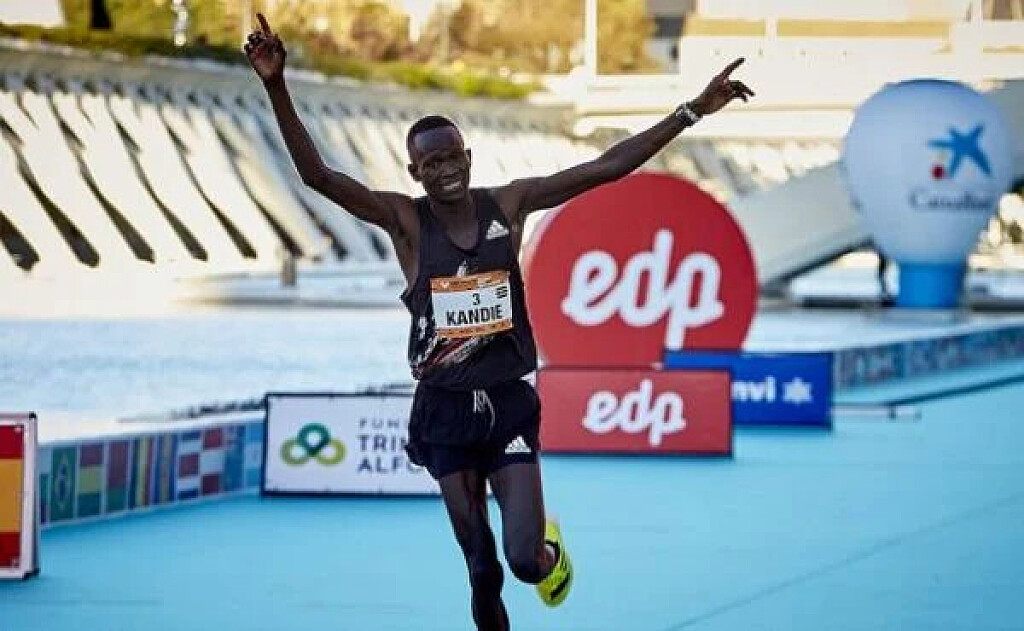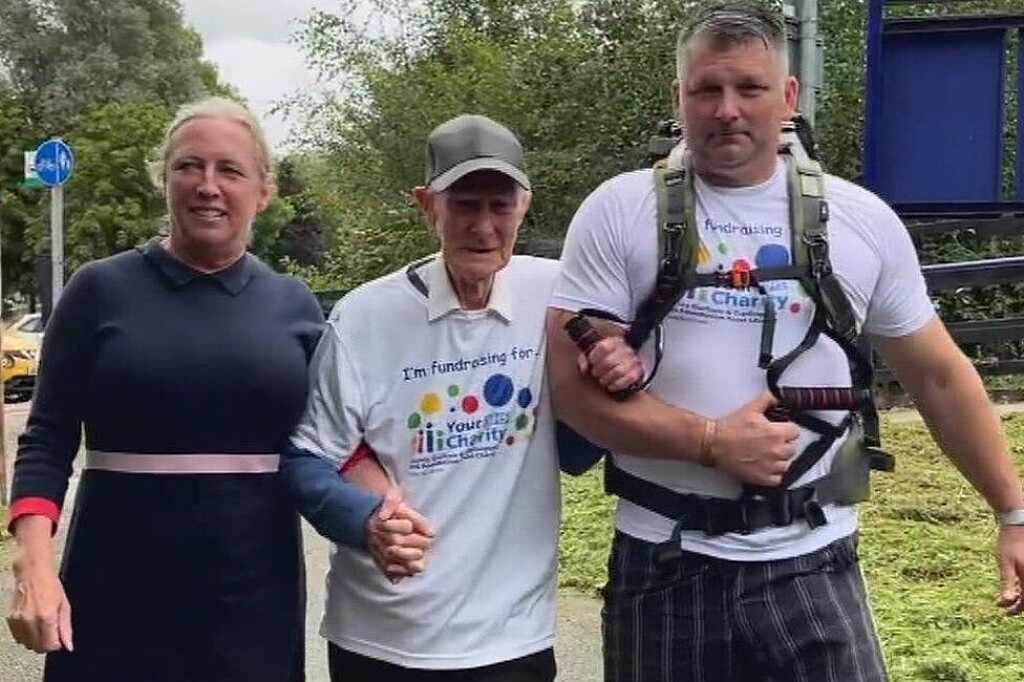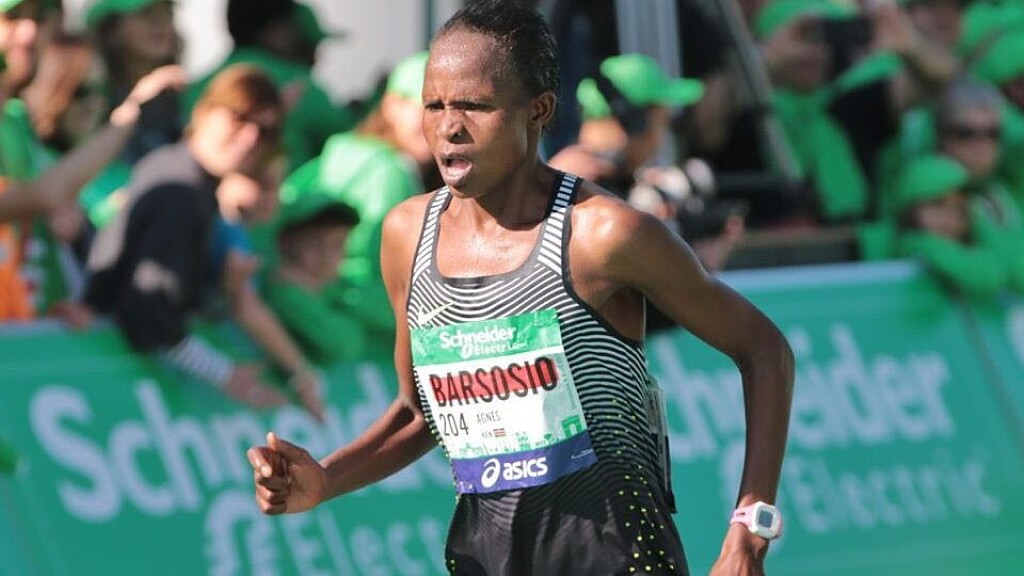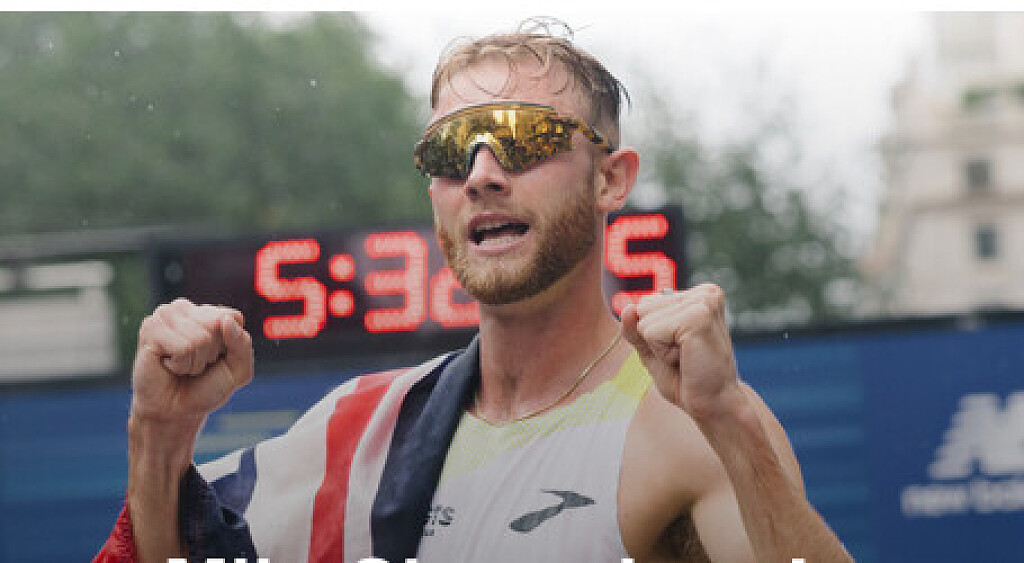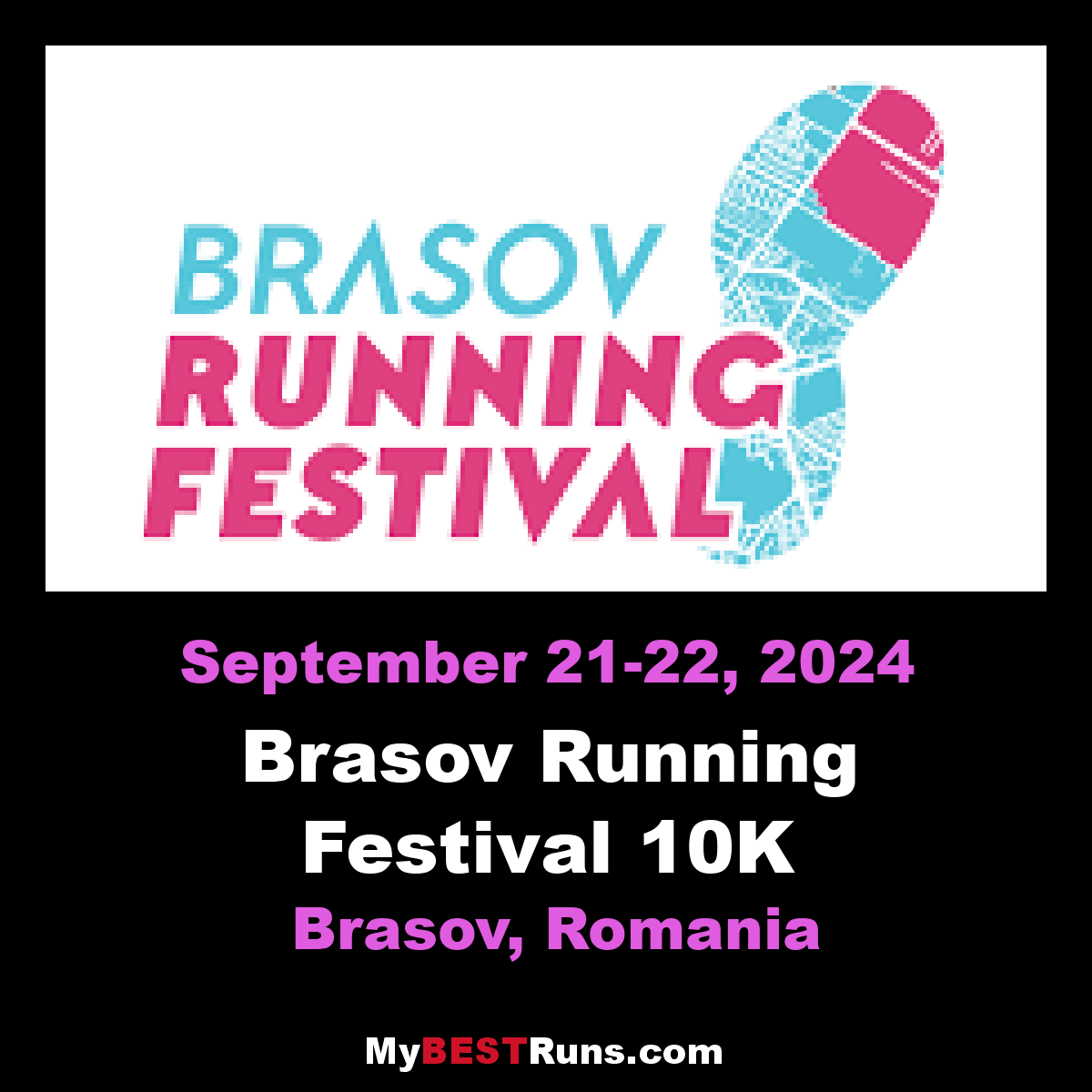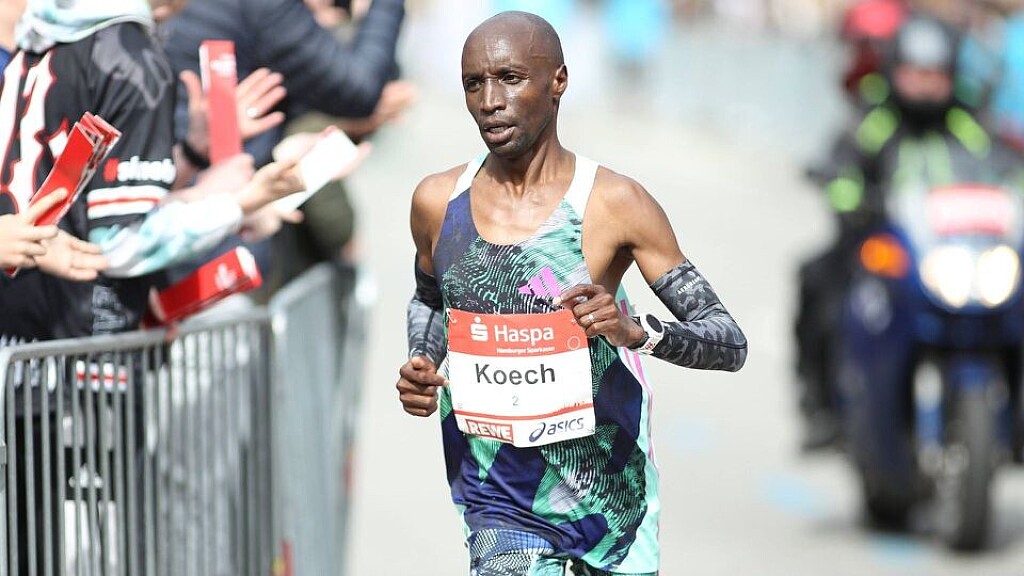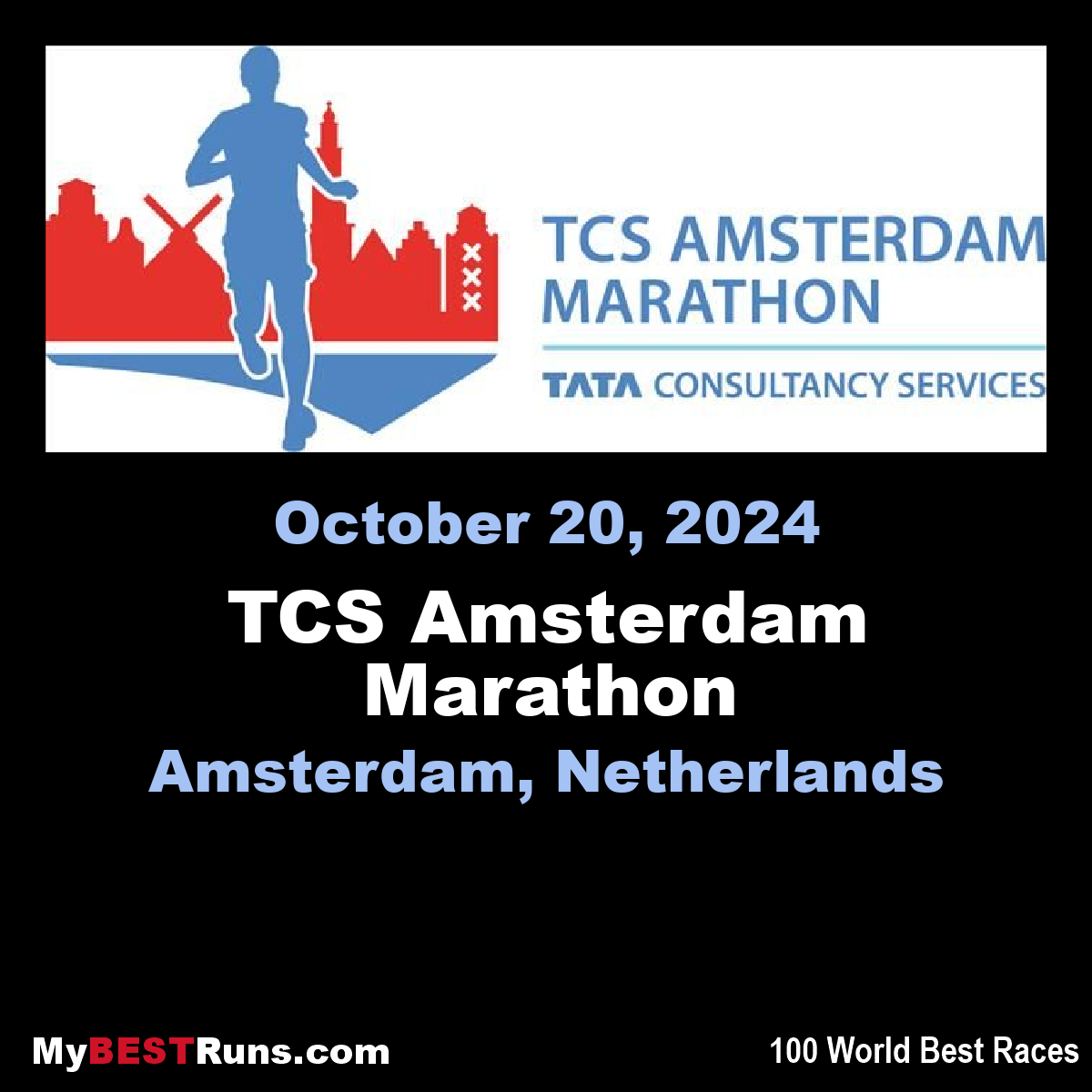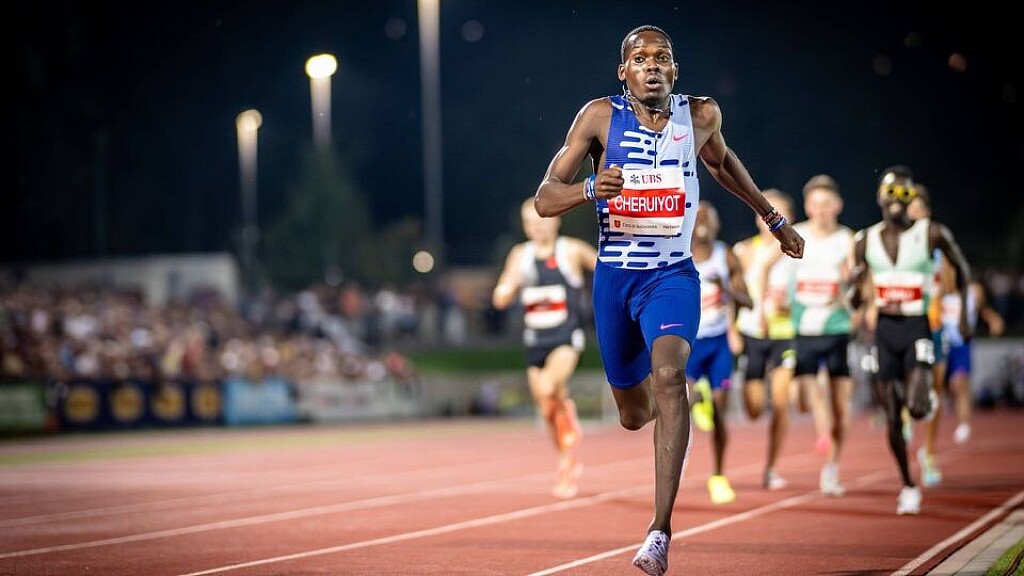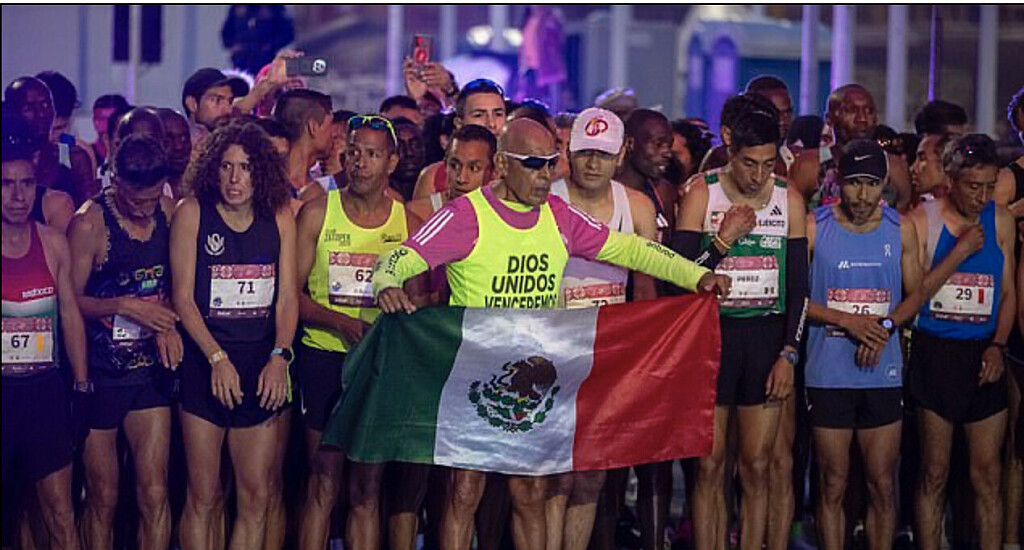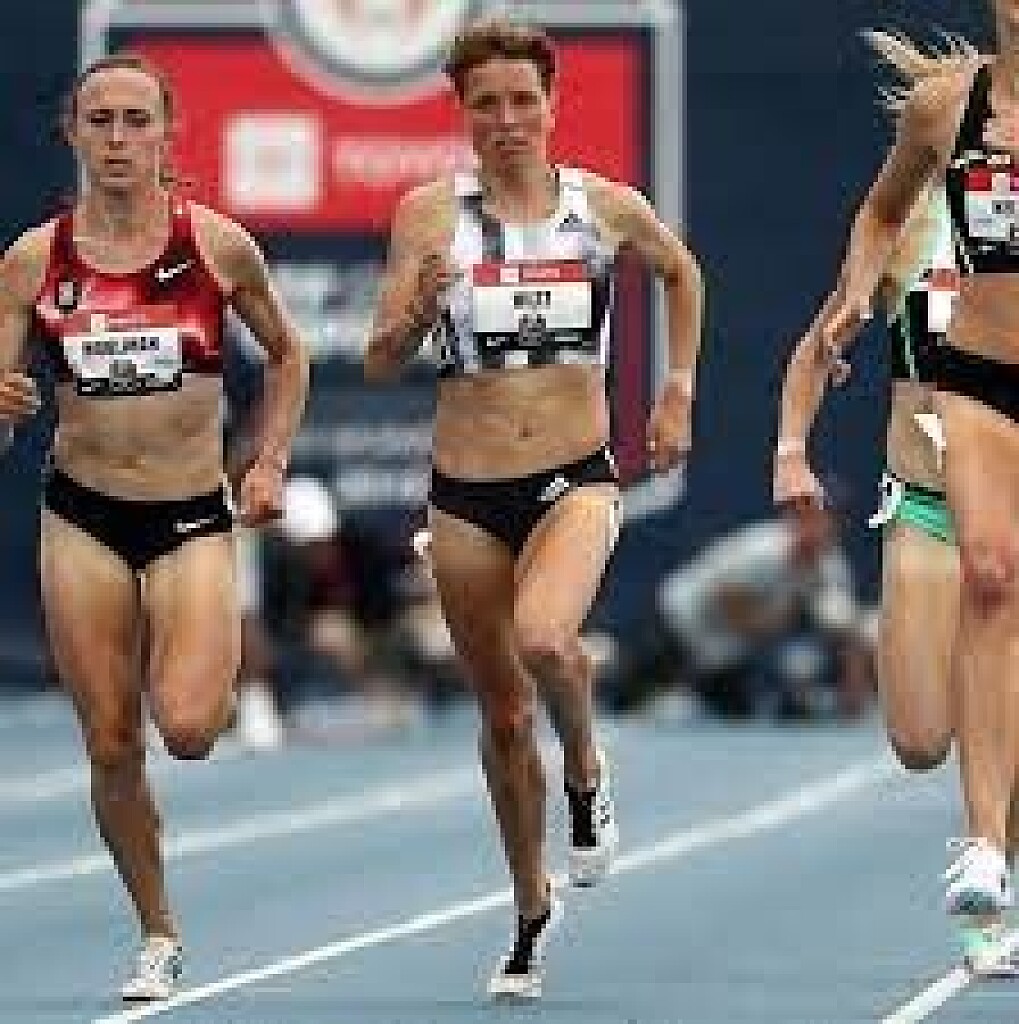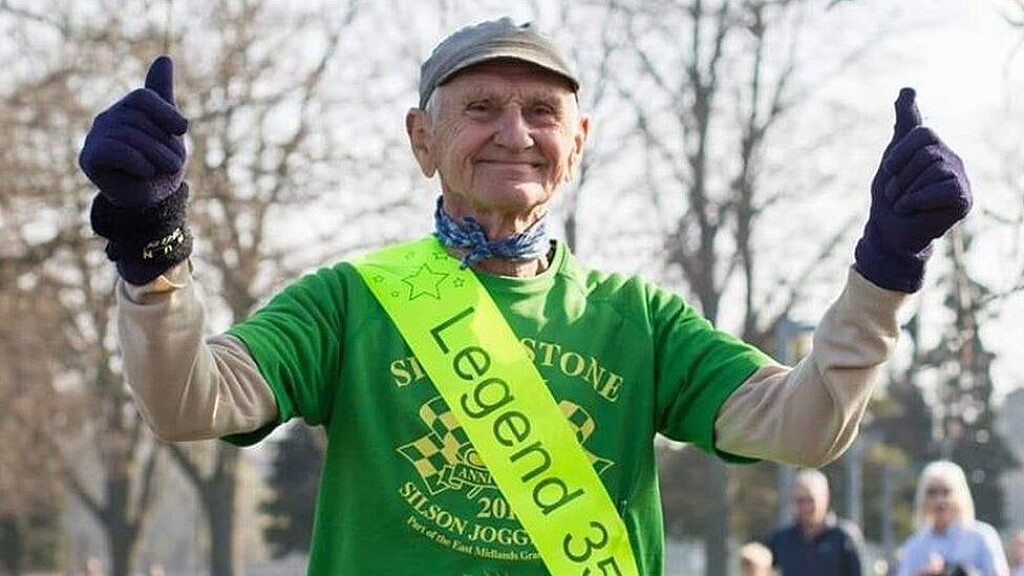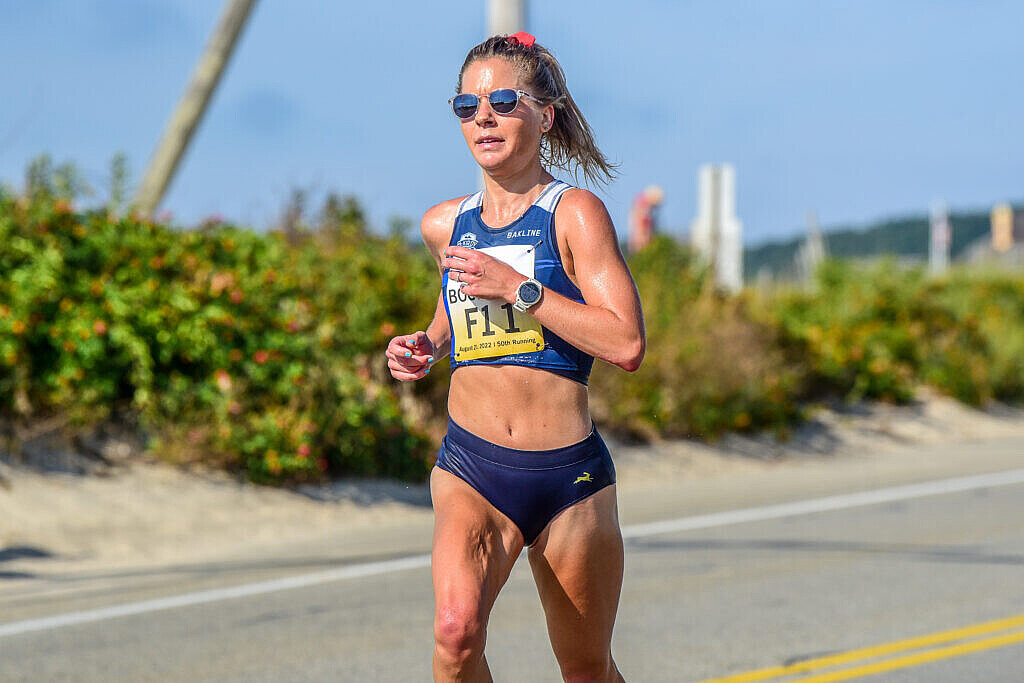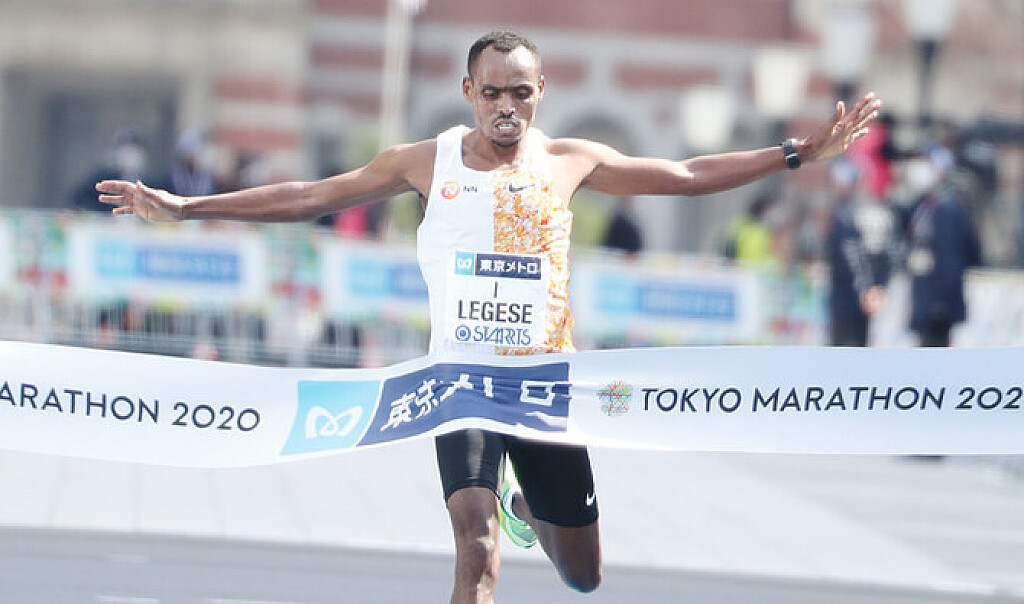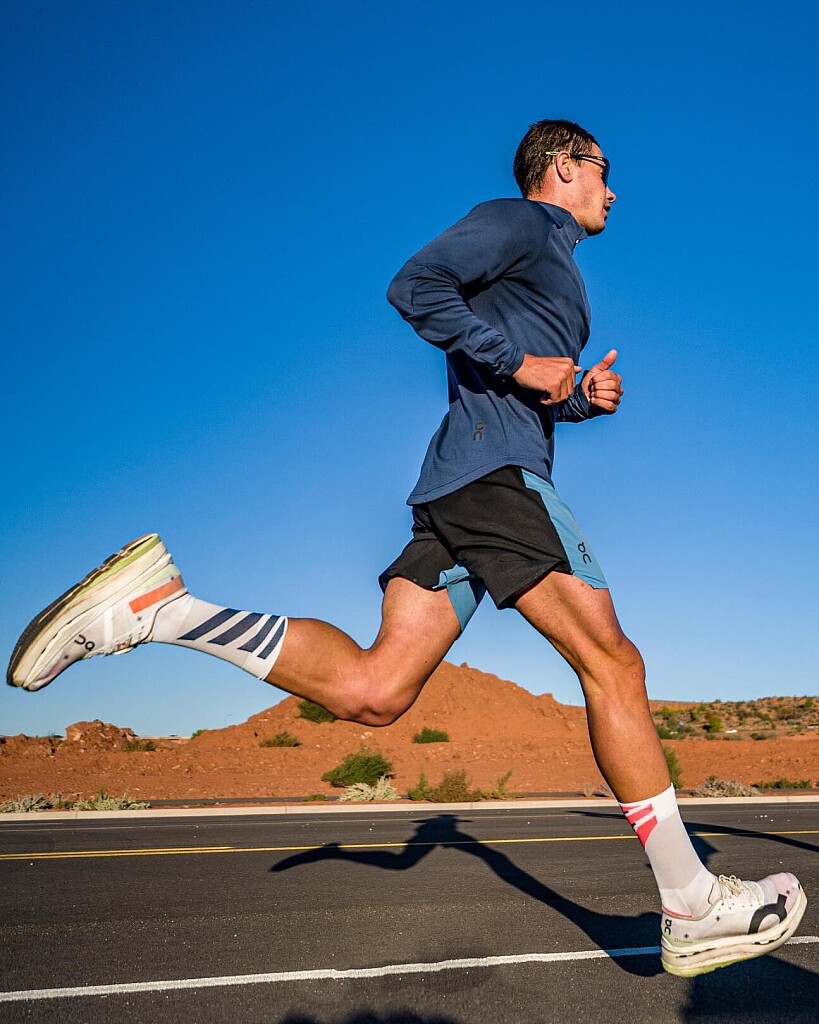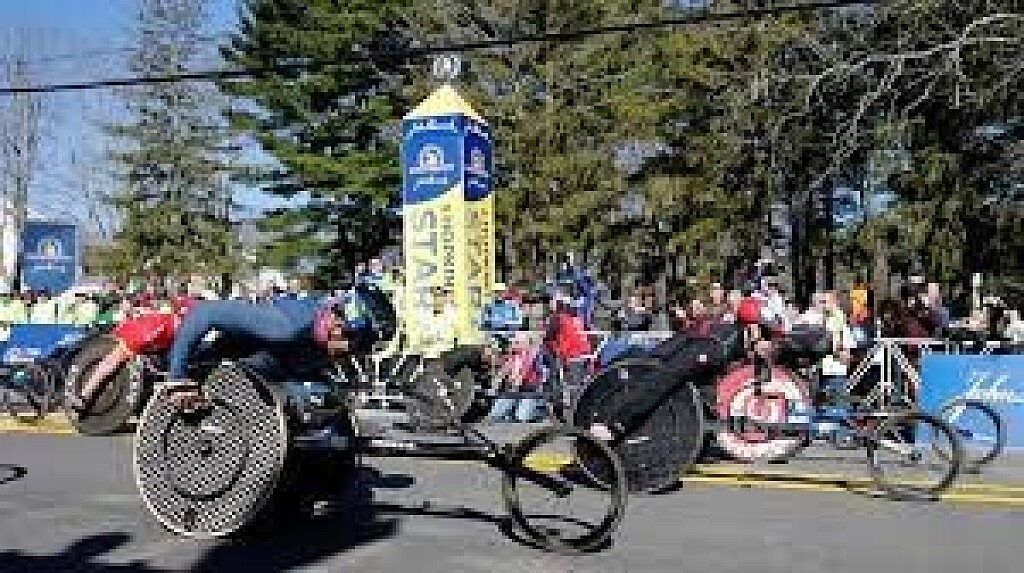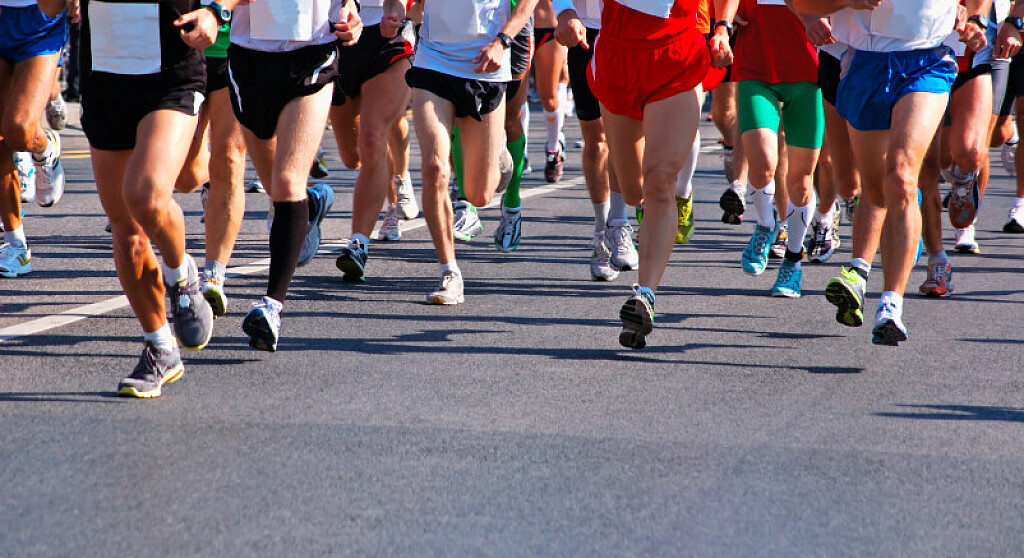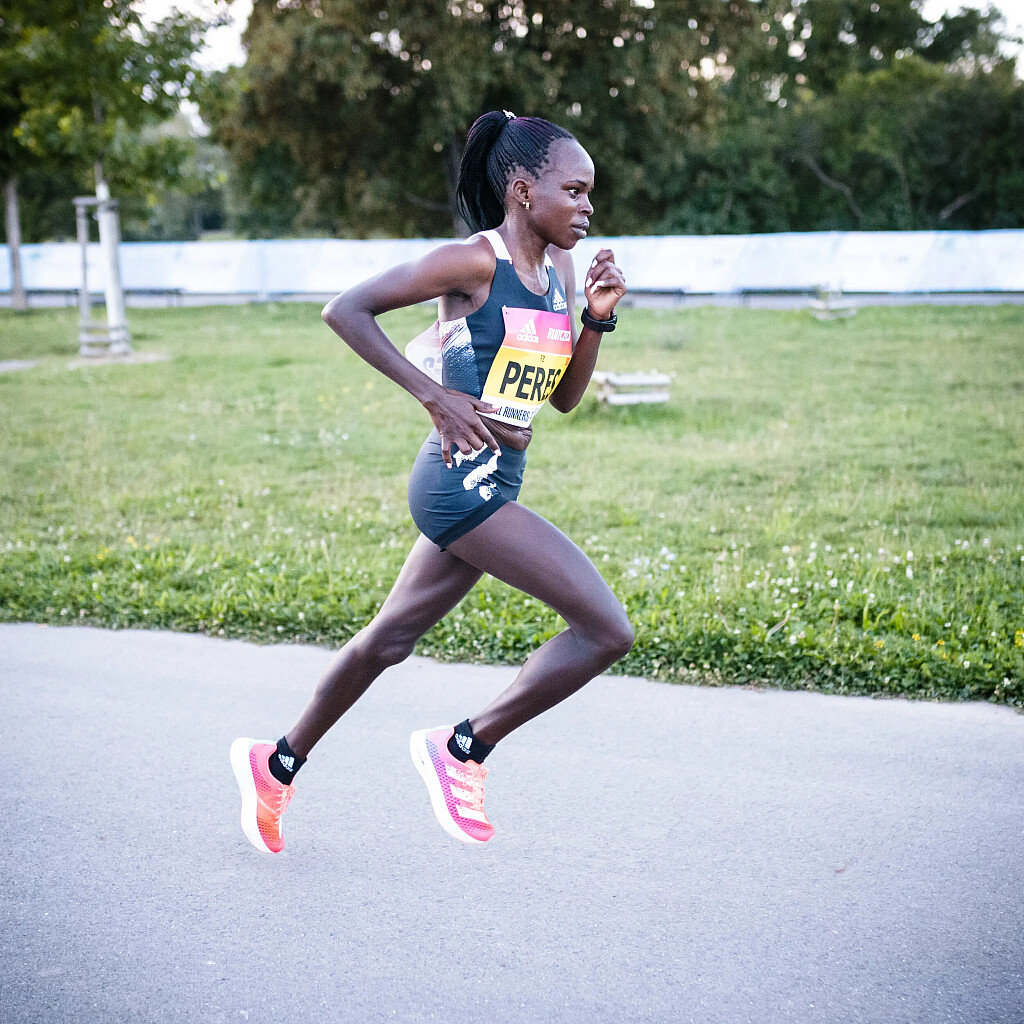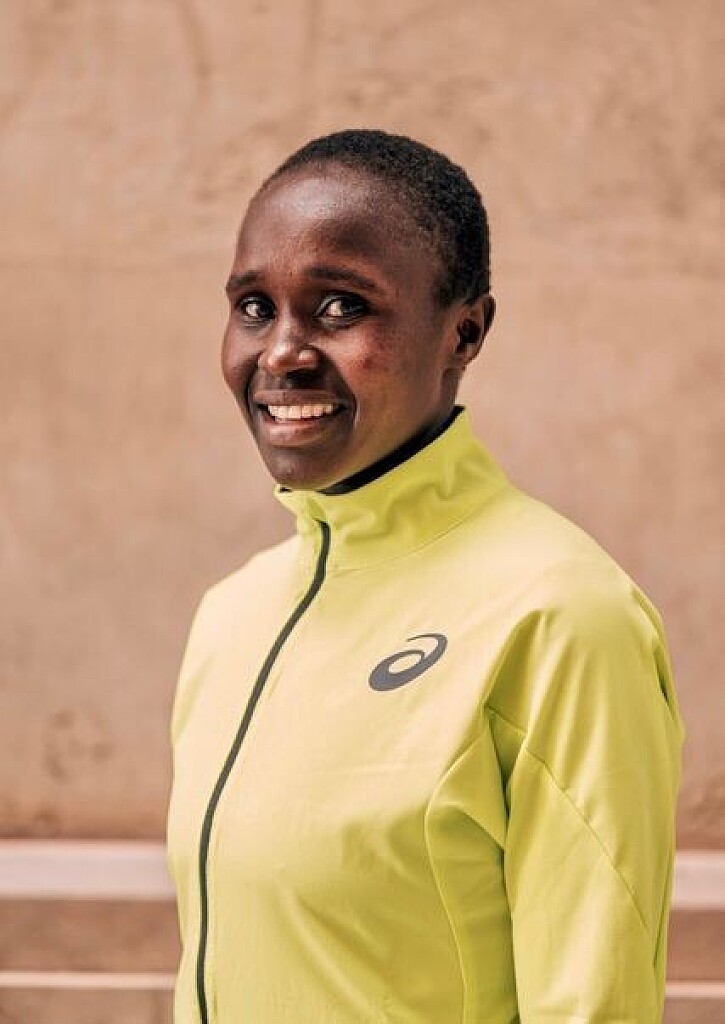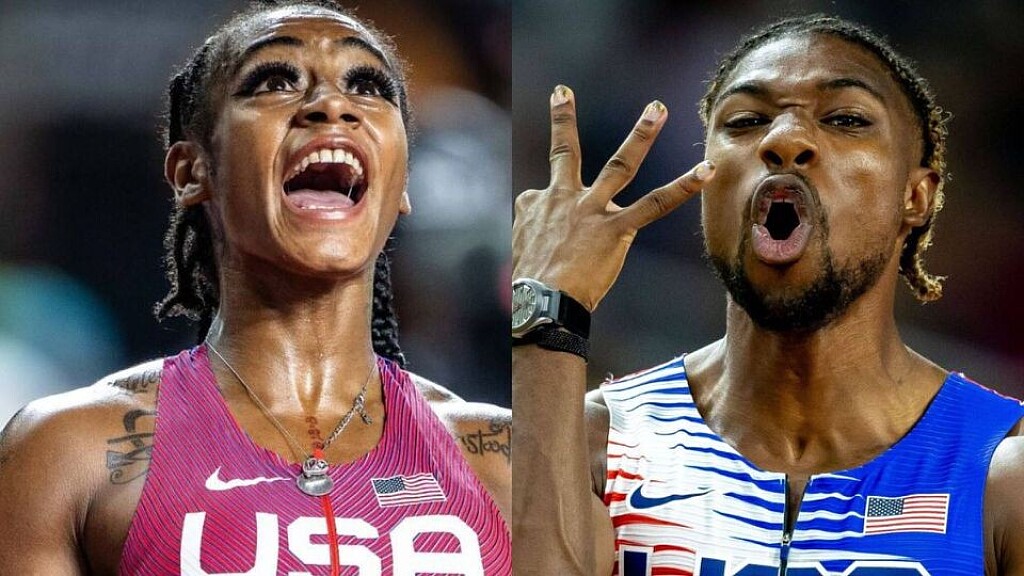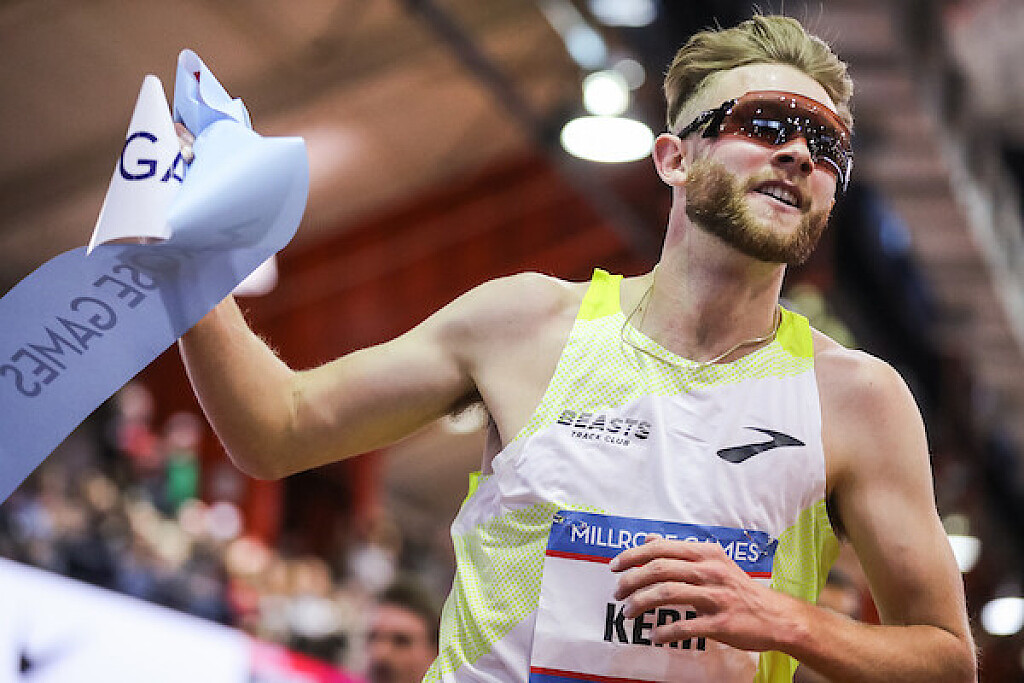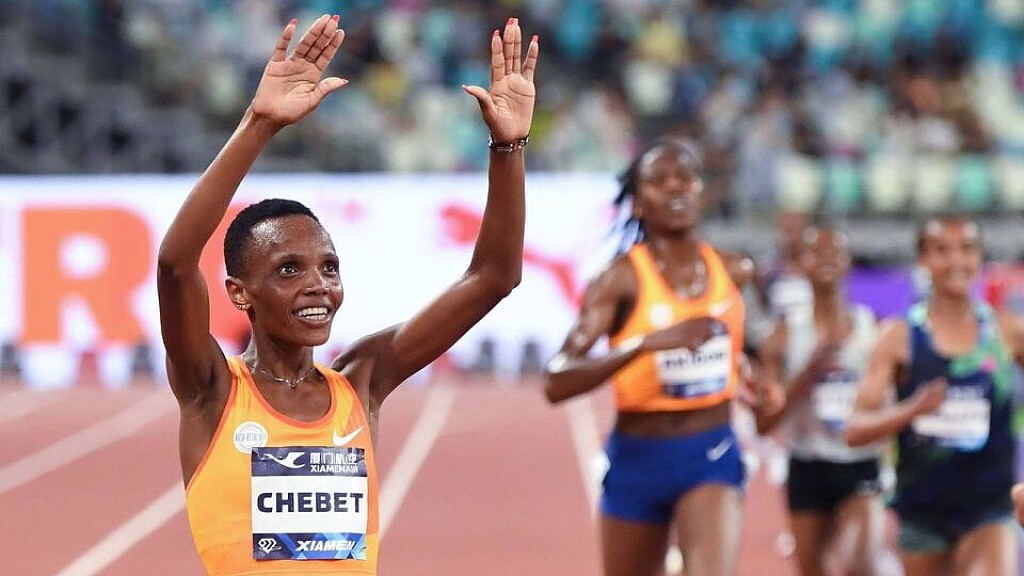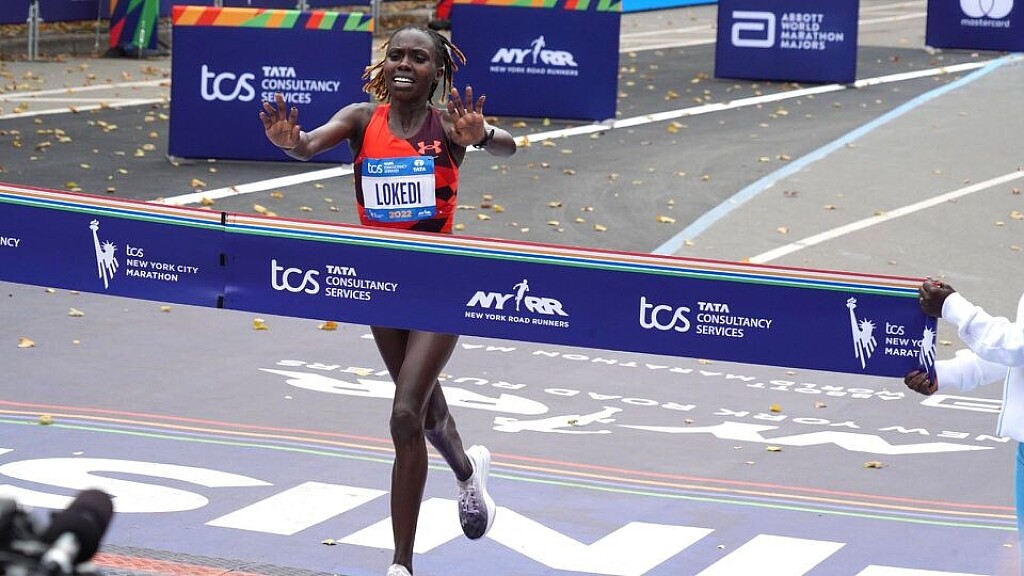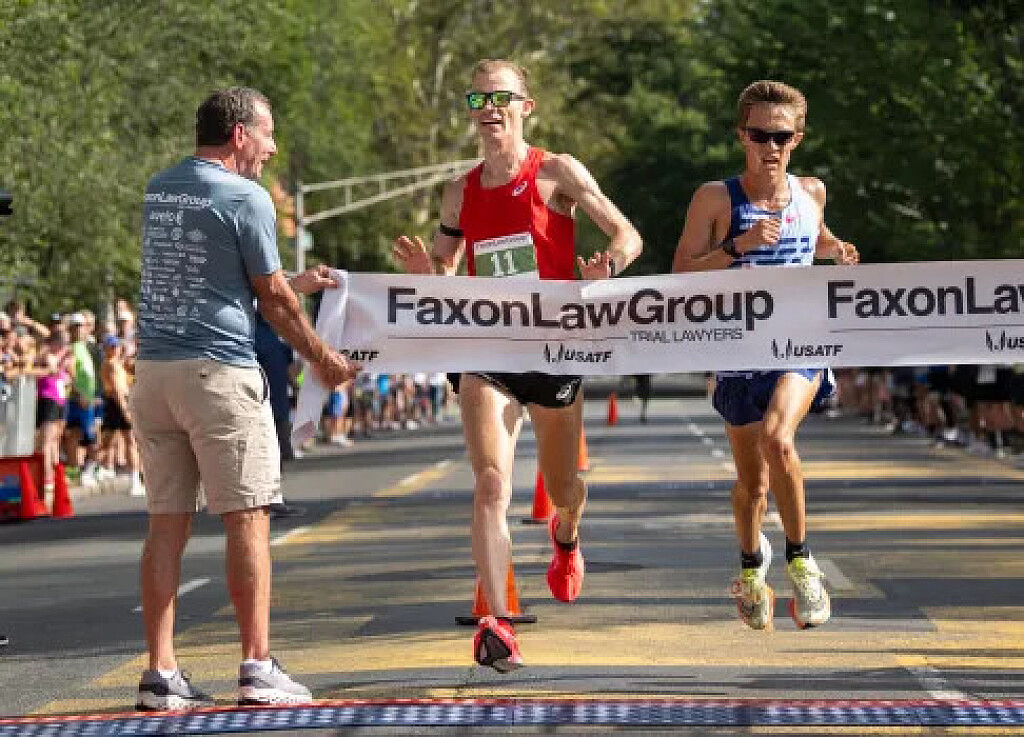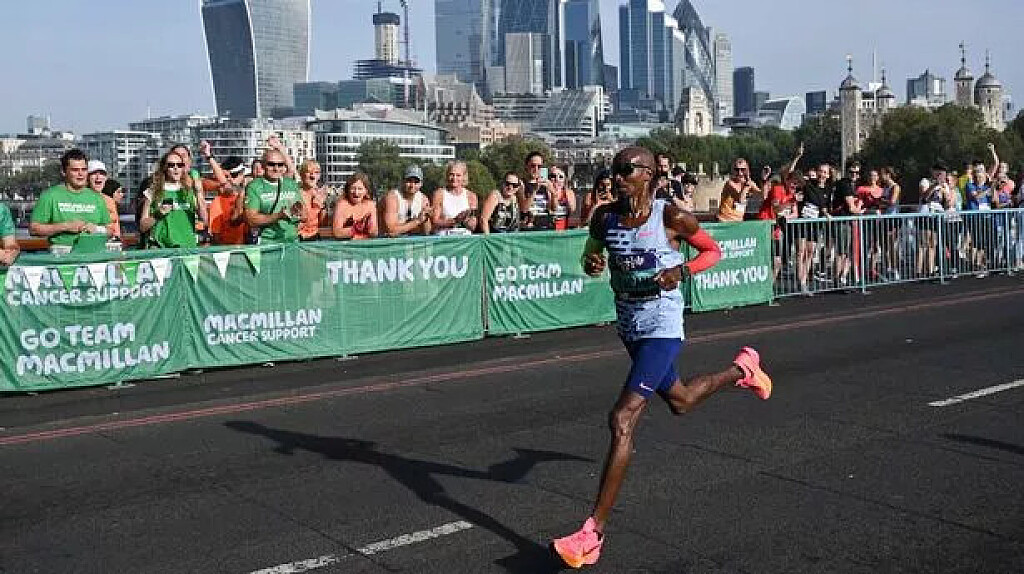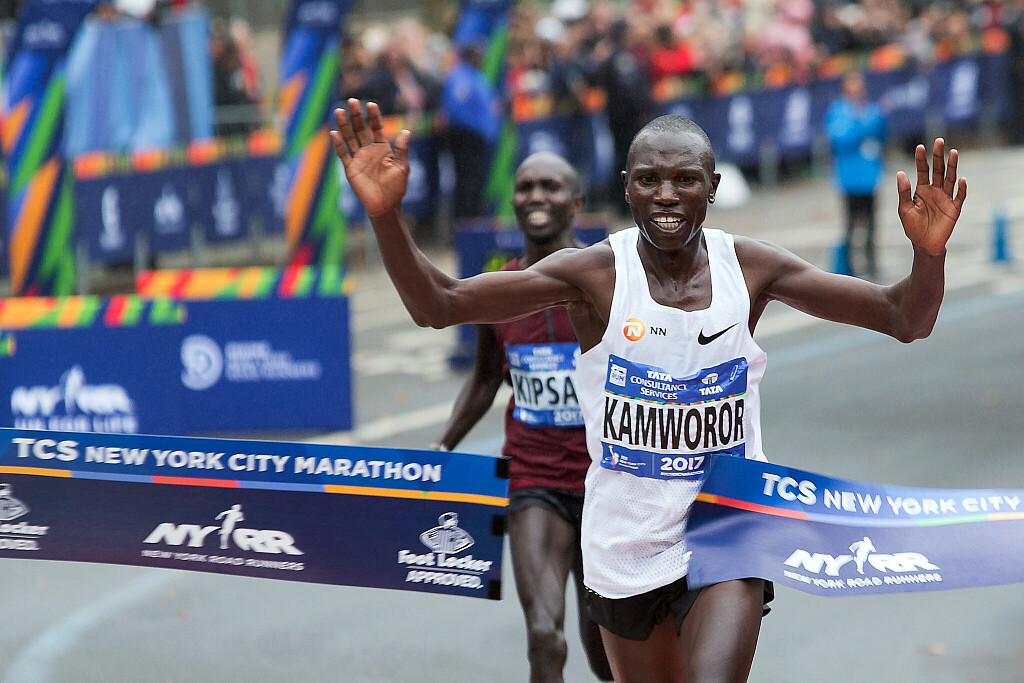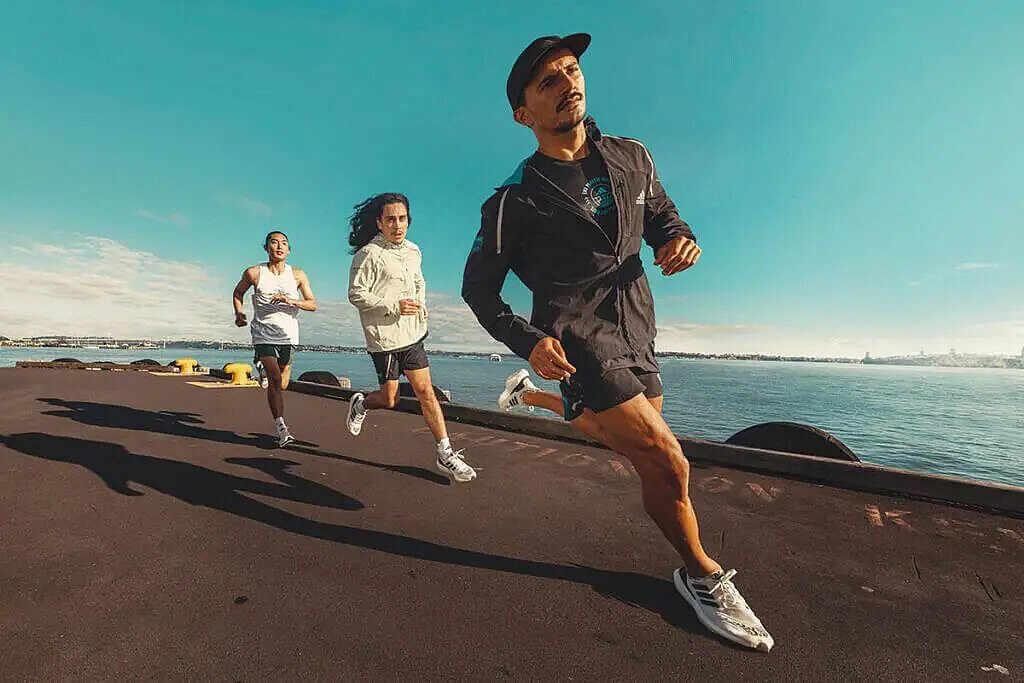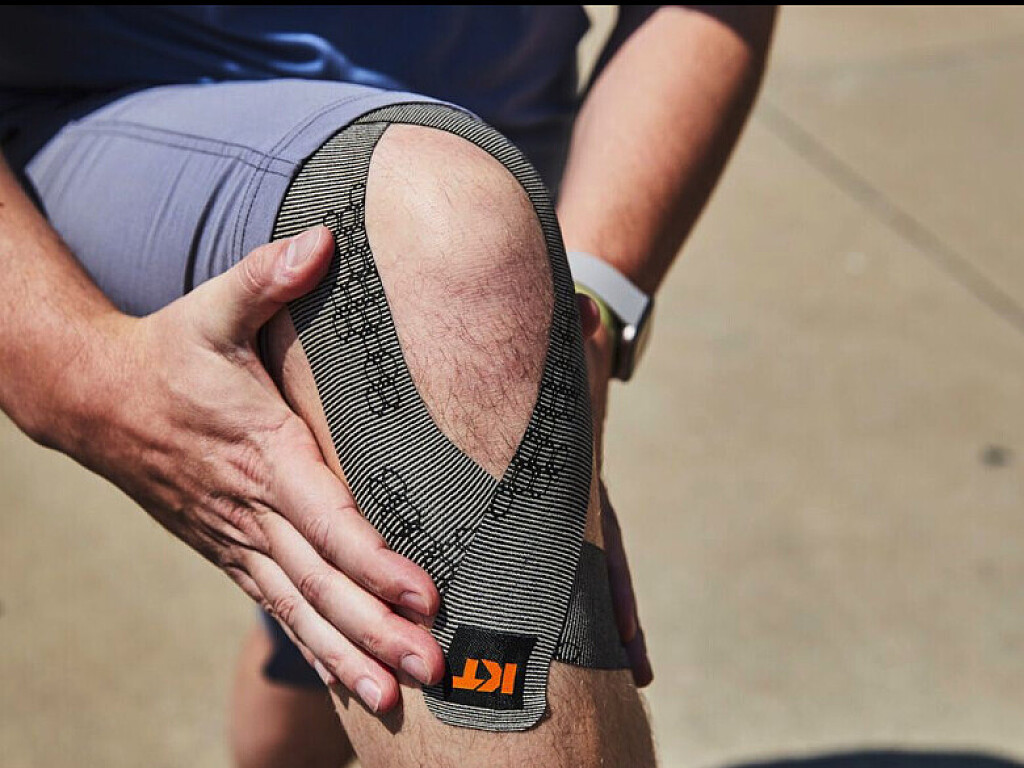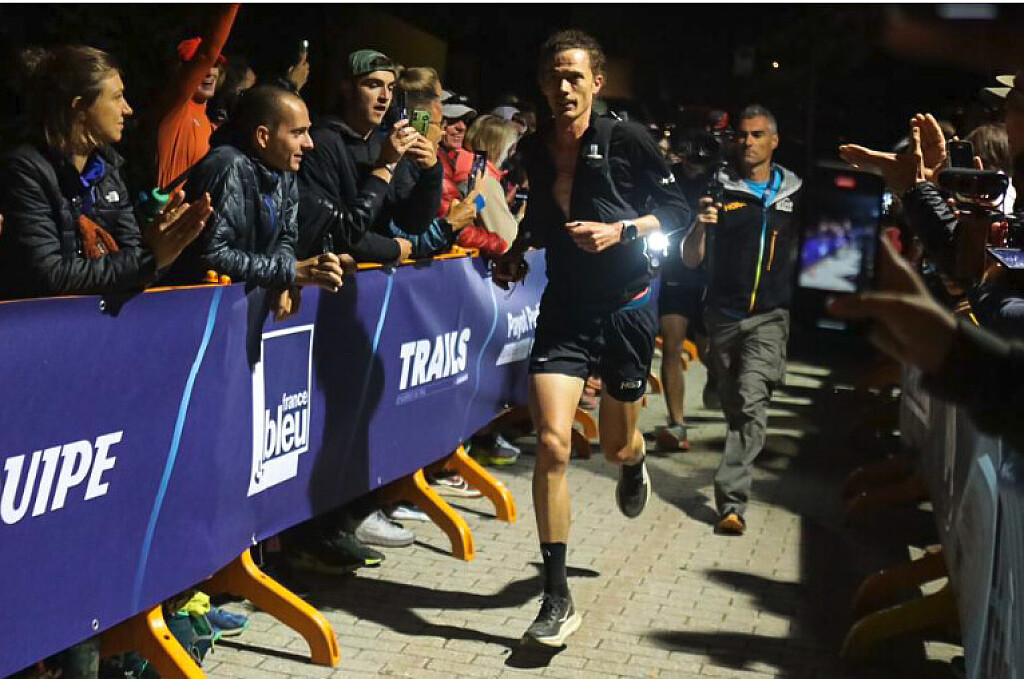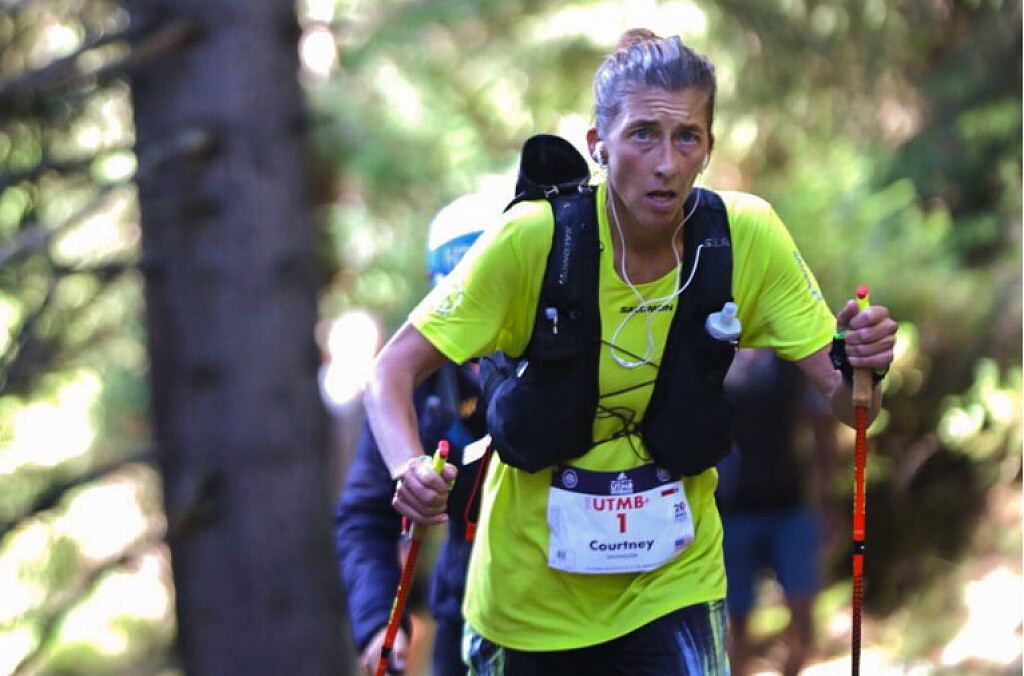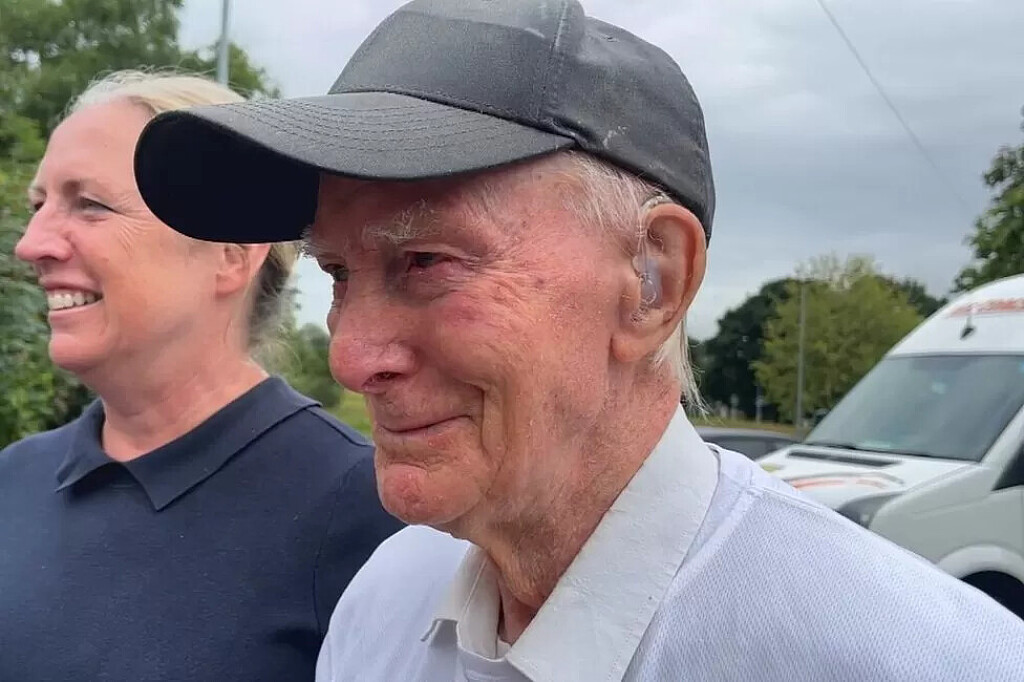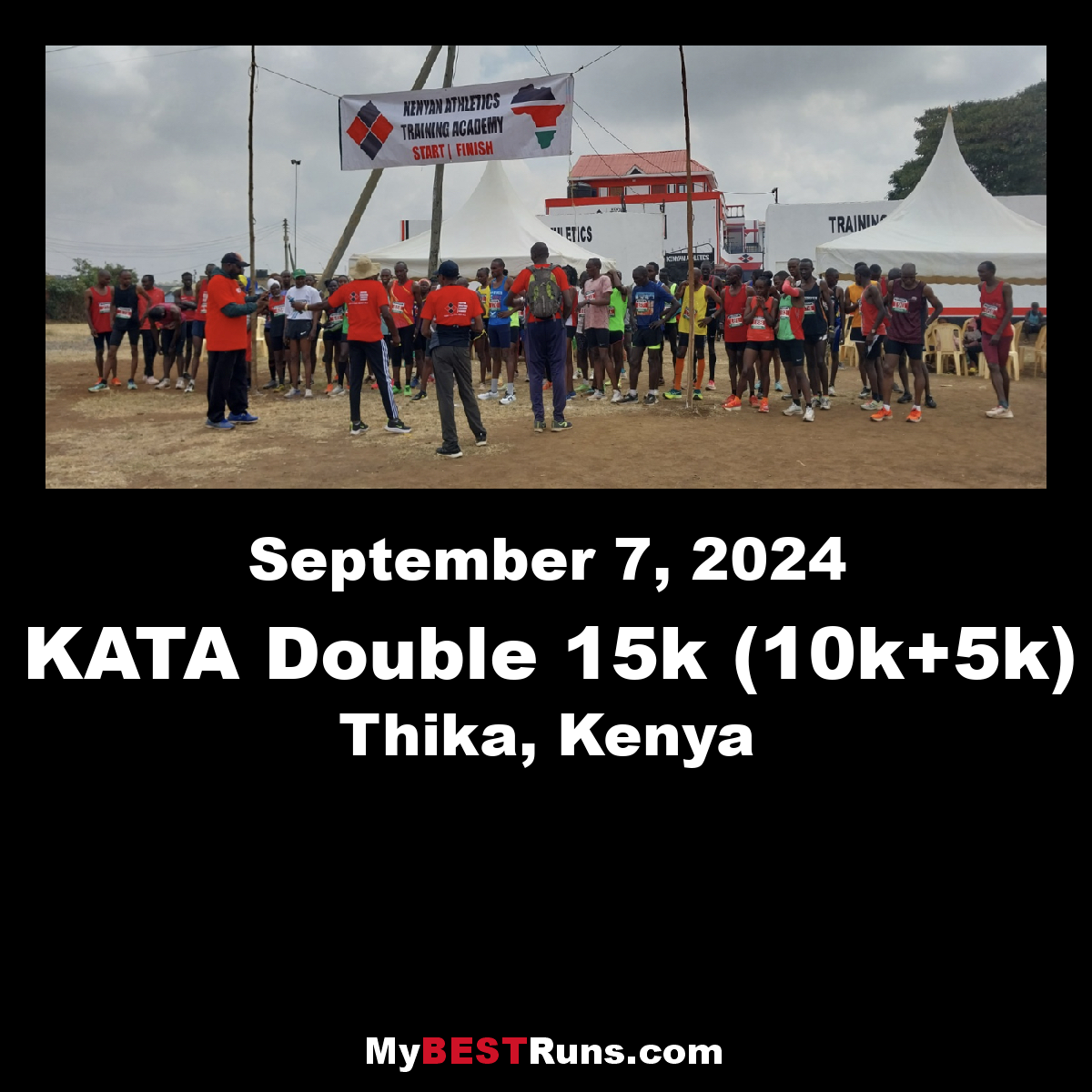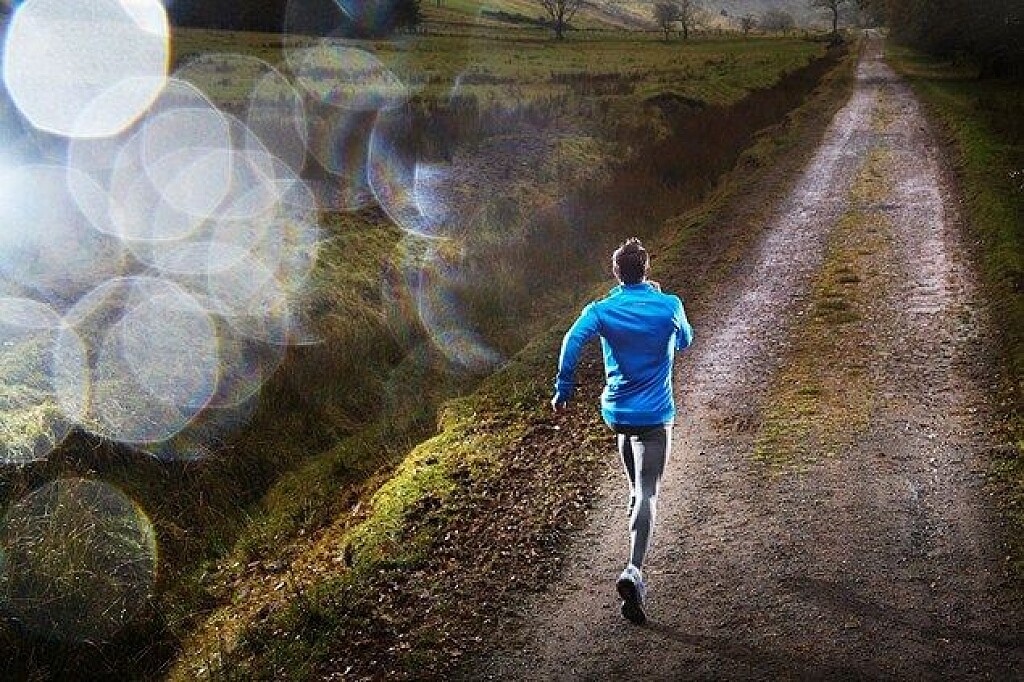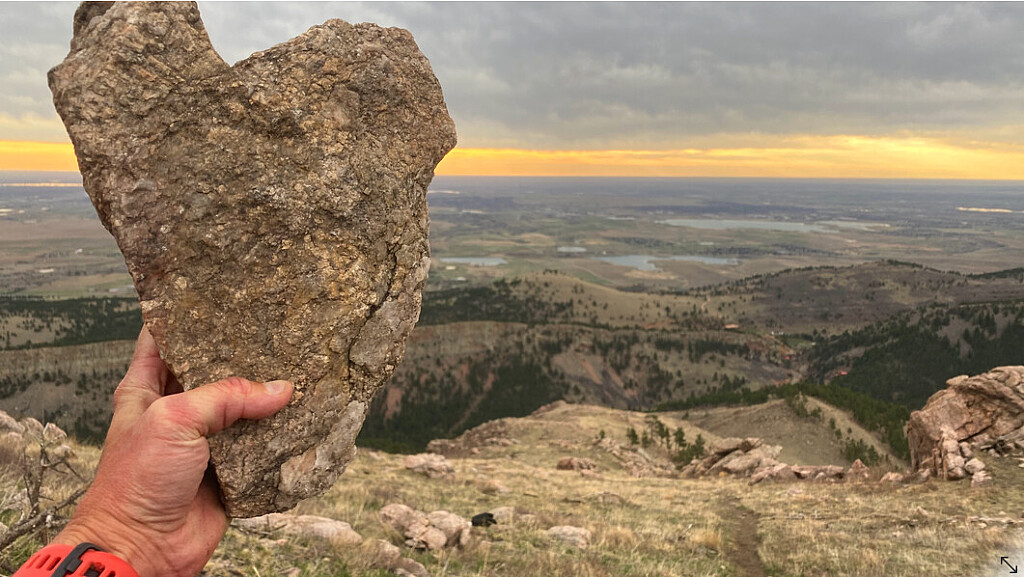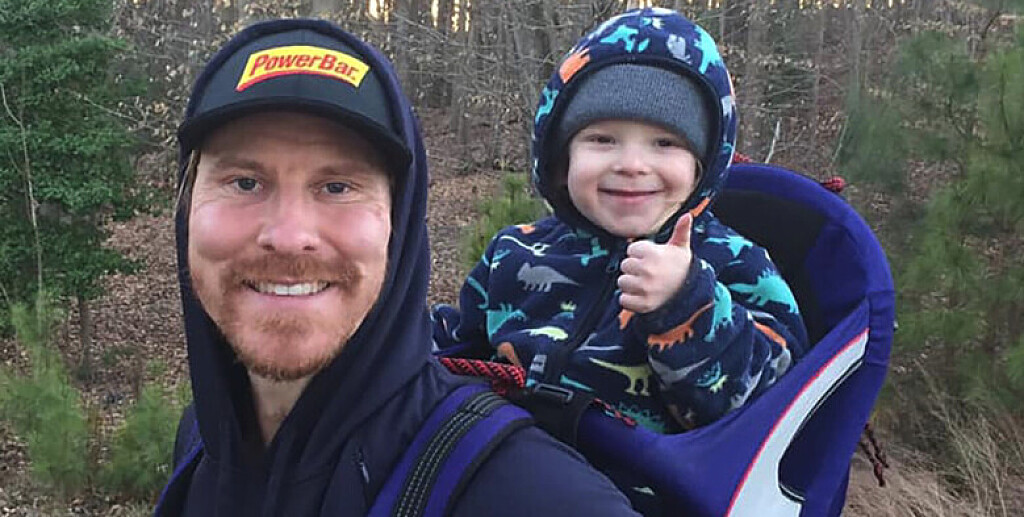Running News Daily
Running News Daily is edited by Bob Anderson. Send your news items to bob@mybestruns.com Advertising opportunities available. Train the Kenyan Way at KATA Kenya and Portugal owned and operated by Bob Anderson. Be sure to catch our movie A Long Run the movie KATA Running Camps and KATA Potato Farms - 31 now open in Kenya! https://kata.ke/
Index to Daily Posts · Sign Up For Updates · Run The World Feed
Why Letsile Tebogo is unfazed going to the Prefontaine Classic despite facing tough opposition
Botswana’s wonderkid Letsile Tebogo will be heading to the Diamond League Final Meeting in Eugene, USA under no pressure despite facing off against some of the strongest 100m sprinters in the world.
The 20-year-old made history as Africa’s first man to win a medal in the 100m at the World Championships in Budapest, Hungary. He beat some of the greatest athletes who will be going to Eugene with revenge written all over their faces.
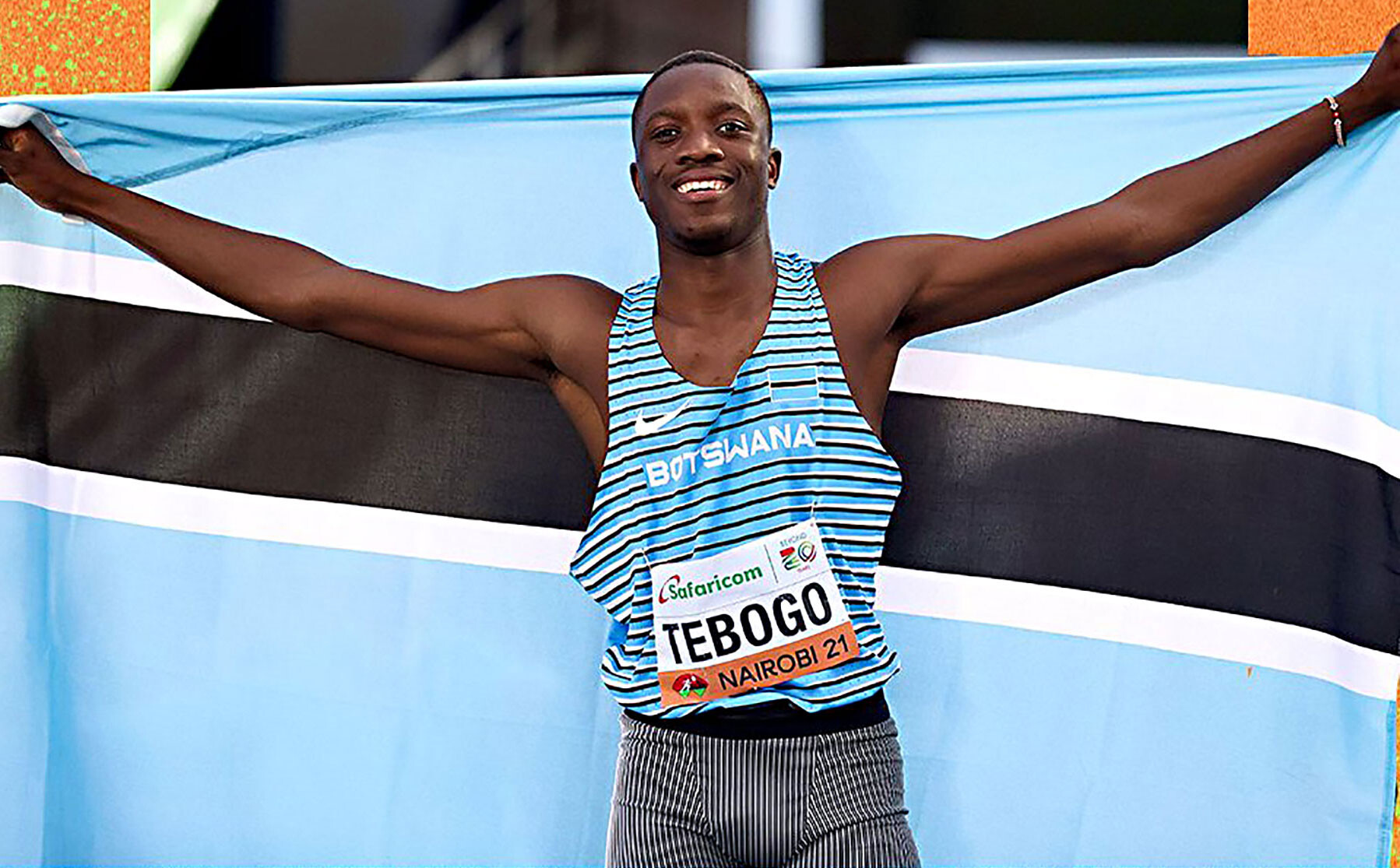
However, the youngster is not under the pump to deliver since he has achieved most of his goals for the 2023 season.
Speaking to Business Weekly, his coach Kebonyemodisa ‘Dose’ Mosimanyane assured his fans that the youngster will go to the final of the Diamond League Meeting under no pressure.
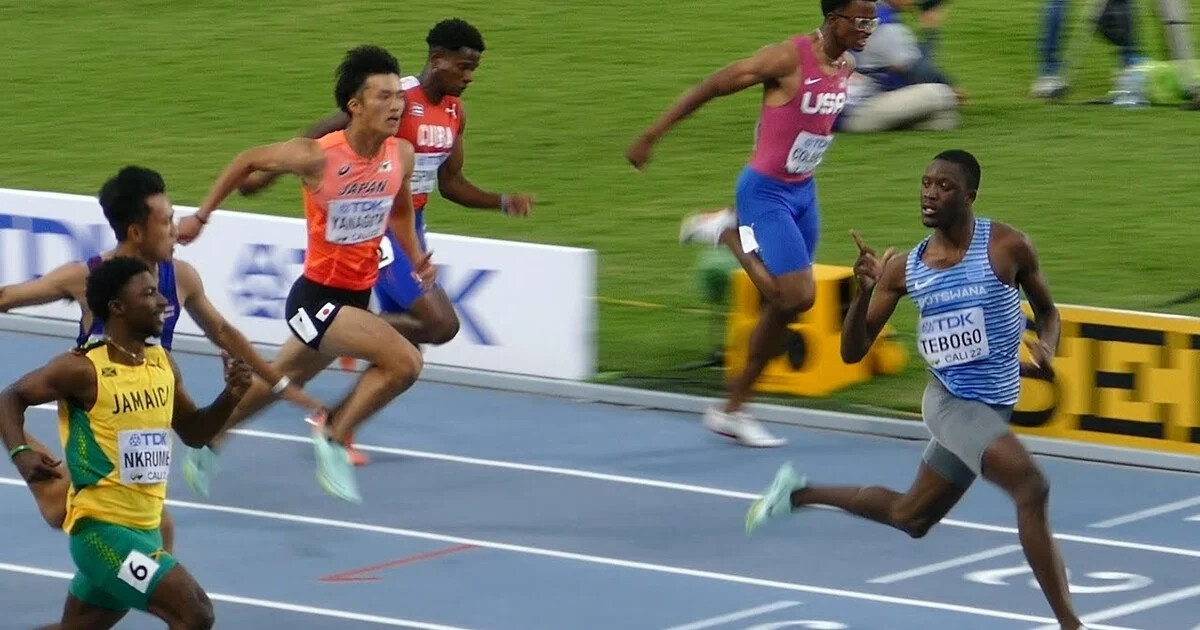
“We have reached our goals for this season. So, going into the DL finals, there’s no need to burden ourselves with unnecessary pressure," he said.
"Our primary focus is on Tebogo’s well-being for the upcoming Olympics in Paris. That’s why we’re avoiding undue pressure.
"While we’re not suggesting we don’t aim to perform well at the DL finals, we want to ensure that we don’t add unnecessary stress."
The coach insisted that Tebogo’s participation in the finals is primarily for enjoyment and to conclude the season on a high note. After the event, he will return to Botswana to rest before coming back to prepare for the Paris 2024 Olympics.
At the Diamond League, he will face off against double World Champion Noah Lyles, who beat him to gold 100m, in Budapest, Hungary.
He will also lock horns with Africa’s fastest man Ferdinand Omanyala who exited the World Championships empty-handed. Omanyala will be hoping to end his season on a high. The two pose as potential threats to the wonderkid but he remains still.
(09/12/2023) ⚡AMPby Abigael Wuafula
Prefontaine Classic
The Pre Classic, part of the Diamond League series of international meets featuring Olympic-level athletes, is scheduled to be held at the new Hayward Field in Eugene. The Prefontaine Classicis the longest-running outdoor invitational track & field meet in America and is part of the elite Wanda Diamond League of meets held worldwide annually. The Pre Classic’s results score has...
more...Zdeno Chara Training For The New York City Marathon
With one Boston Marathon already on his resume, former Boston Bruins captain Zdeno Chara is now training to run in the 2023 New York City Marathon on Nov. 5.
Right up until the end of his 24-season NHL career, Chara left his teammates in astonishment at his daily workout regimen, and that discipline and passion to push his body to the limits has not waned.
With one Boston Marathon already on his resume, former Boston Bruins captain Zdeno Chara is now training to run in the 2023 New York City Marathon on Nov. 5.

Right up until the end of his 24-season NHL career, Chara left his teammates in astonishment at his daily workout regimen, and that discipline and passion to push his body to the limits has not waned.
“No,” Chara told The New York Post recently, “I didn’t take any kind of break. I kind of sustained the physical training. I was adding to my running, getting higher mileage, getting higher bike distances. And then at one point, I knew that I would like to talk to somebody who is more experienced and somebody who would be able to put me on maybe more specific programs to reach some of the goals I set for myself. And obviously marathons was one of them. Some triathlons, Ironmans would also be in my vision.”
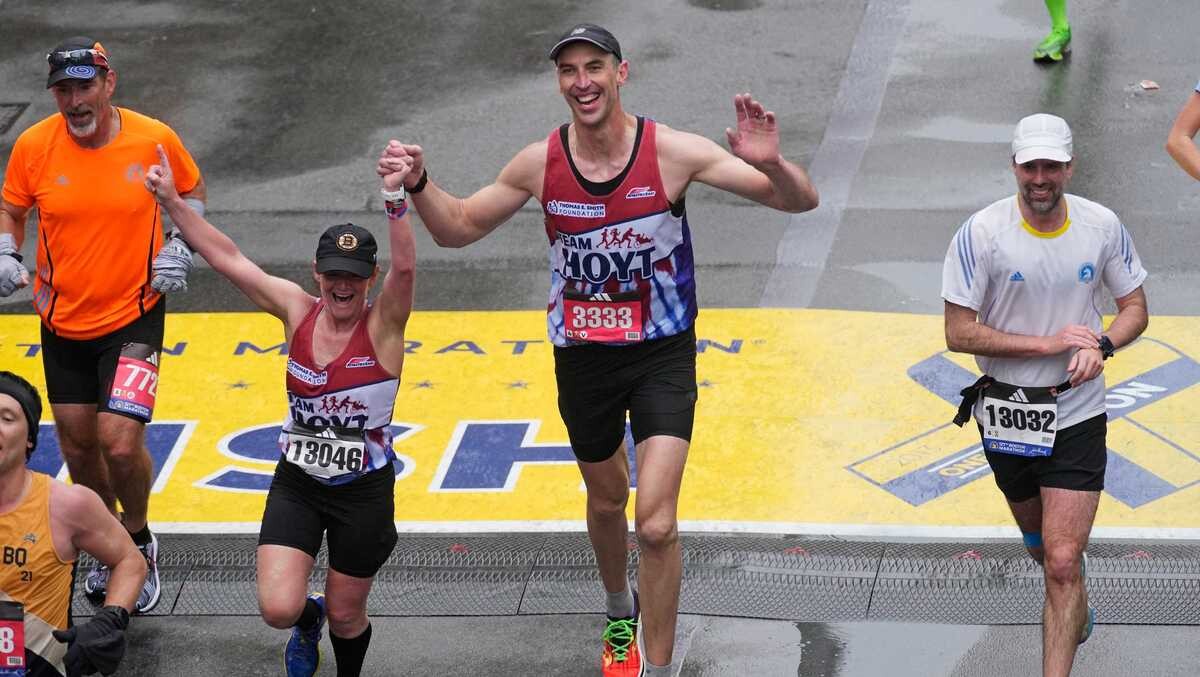
The 6-foot-9, 250-pound future Hockey Hall of Famer finished the Boston Marathon in 3:38.23, and now in November, he’ll run the New York City Marathon in partnership with New Balance. However, the 46-year-old Chara has no plans on stopping there. He told The Post that he also plans on running marathons in Berlin, Tokyo, London, and Chicago.
“Finding the limit,” Chara said. “Sometimes you get into different mindsets and you learn about yourself a lot through these challenges, through these good runs, bad runs. It’s just, I don’t know how to really explain it, but it’s something that it’s teaching you something about yourself. And it’s a very humbling experience.”
Zdeno Chara is also becoming to not just running marathons but to the running community and support surrounding it.
“Being part of racing or being a part of some runs, it’s addictive,” the Boston Bruins legend said. “It’s something that you start and then it becomes something that you’re looking forward to the next one and then you want to be part of the next one. It’s something that draws me in.
You have spread out crowds throughout the races [that] number thousands of people and it’s electrifying. It’s unbelievable energy and it’s exciting. And then once you get to the finish, it’s super, super rewarding.”
(09/12/2023) ⚡AMPby Jimmy Murphy
TCS New York City Marathon
The first New York City Marathon, organized in 1970 by Fred Lebow and Vince Chiappetta, was held entirely in Central Park. Of 127 entrants, only 55 men finished; the sole female entrant dropped out due to illness. Winners were given inexpensive wristwatches and recycled baseball and bowling trophies. The entry fee was $1 and the total event budget...
more...Kenyan Shamilah Kipsiror fires warning shots ahead of Valencia Half Marathon
She believes her win in Nigeria is a morale booster ahead of her fifth Half Marathon this season.
After her victory at the Lotus Bank Abeotuka 10km race in Ogun state, Nigeria, Shamilah Kipsiror has her focus shifted to the Valencia Half Marathon scheduled for October.
The 36-year-old clocked a time of 32:22 to win the race in Nigeria and she believes her win is a morale booster ahead of her fifth Half Marathon this season.
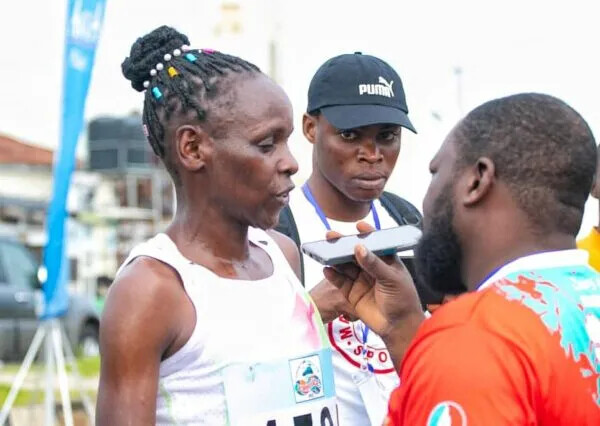
Speaking to ACL Sports, she said the 10km race in Nigeria placed her in a better shape as she gears up to lock horns with some of the other great long-distance runners including compatriot Margaret Chelimo and Ethiopia’s Gotytom Gebreslase.
“I am preparing for the Half Marathon in Spain next October and I hope to emerge the winner.

I came to Nigeria for the 10km Race in order to maintain my current form and have a better time. I strongly believe that impossible is nothing,” she said.
She also expressed her excitement in winning the race adding that she had it easy since there were no strong opponents.
“I feel excited to win the women’s category of the Lotus Bank Abeokuta 10km Race and the road race was nice.
I had no challenger in the race; I took charge of the race in the last 7km and maintained my top speed,” she said.
Kipsiror has had a pretty great season so far this year and she managed to run a Personal Best (PB) of 1:07:53 at the Gent Half Marathon where she was debuting.
She also competed at the Istanbul Half Marathon where she finished ninth. She also competed at the Nationale-Nederlanden Warsaw Half Marathon and finished fifth before completing the podium at the OMV Petrom Bucharest Half Marathon.
(09/12/2023) ⚡AMPby Abigael Wuafula
Valencia Half Marathon
The Trinidad Alfonso Valencia Half Marathon has become one of the top running events in the world. Valencia is one of the fastest half marathon in the world. The race, organized by SD Correcaminos Athletics Club, celebrated its silver anniversary in style with record participation, record crowd numbers, Silver label IAAF accreditation and an atmosphere that you will not find...
more...Five nutrition rules runners can forget
Proper nutrition can make a big difference to your running performance, but there are a lot of myths out there that can derail your efforts for a new personal best. These six nutrition “rules” are probably doing more harm than good, and we’re here to tell you it’s time to forget about them.
1.- Fasted runs will improve performance

There is some evidence to suggest that doing some of your runs in a fasted state will improve your body’s ability to use fat for energy rather than glycogen (which is stored carbohydrate), which is good for endurance. But for most (especially female) runners, this is likely to decrease their performance during workouts.
As Dr. Stacy Sims explained in this interview, women’s bodies already preferentially use fat and protein for fuel. Because of this, fasted training in women increases cortisol levels, causing a cascade of poor adaptation, fatigue, depression, anxiety and a build-up of body fat.

If you run early in the morning or prefer not to have a lot of food in your stomach when you run, don’t fret. Even just something small like half a banana or a piece of toast 10-20 minutes before you head out the door is all you need to bring your blood sugar up and decrease your cortisol levels.
2.- Gluten is bad for you
Unless you have celiac disease or a gluten allergy, this is simply not true. The gluten-free diet has risen in popularity over the last decade, but in many cases, it is actually less healthy than a standard diet, due to the often highly-processed nature of many gluten-free foods. If you’re experiencing GI distress and you think gluten might be the problem, talk to your doctor. They will be able to rule out other potential causes of your discomfort and help you resolve the issue.
3.- You need supplements to meet your nutrition needs
If you have diet restrictions, you may need some supplements to meet your nutrition needs, but otherwise, you can get everything you need from a healthy, well-balanced diet that contains plenty of fruits and vegetables. If you think your diet may be lacking, consult a dietitian (preferably with expertise in sports nutrition). They can assess your current eating habits and work with you to ensure you’re meeting your nutrition needs through whole foods. Then they can make supplement recommendations based on your goals and your lifestyle.
4.- You should never eat white bread or white rice
Fibre is an important nutrient, and many well-meaning runners have banished all non-whole-grain foods from their diets in the name of optimal health. The truth is, foods like white bread and white rice often do have a place in a runner’s diet and can provide a quick source of energy ahead of a big run or workout. Running can also be hard on your gut, and for some runners, too much fibre can exacerbate already-existing GI issues. Plus, eating fibre-rich foods too close to a run can cause GI distress, even for runners with strong stomachs. So while whole-grain, high-fibre foods are an important part of your diet, don’t be afraid to reach for the white rice once in a while.
5.- You need to watch your calorie intake to stay lean and fast
Countless runners have fallen prey to the “lean equals fast” mentality, but not only is this not true, it will ultimately decrease your performance, and it’s also potentially dangerous. Runners should always focus on consuming plenty of calories to fuel their training. Underfuelling will likely cause your performance in workouts to suffer, and is likely to lead to injuries like stress fractures and burnout. Listen to your body and eat whenever you’re hungry (and don’t skimp on healthy carbs). If you’re having trouble eating enough to keep up with your training, talk to a dietitian, who can give you strategies to ensure you’re fuelling properly.
(09/12/2023) ⚡AMPby Brittany Hambleton
Uganda's Ali Chebures victorious in Tallinn half-marathon
Ugandan long-distance runner Ali Chebures won the Tallinn half-marathon on Saturday in a time of 1:01.35, while Kenyan runners were also dominant in both men's and women's events.
After Chebures came four Kenyans in-a-row: Elvis Chevor (1:01.45) was second, Eric Leon Ndiema (1:01.50), Solomon Koech (1.02.01) fourth and Collins Kipkirui Kipkorir (1:02.04) finished fifth.
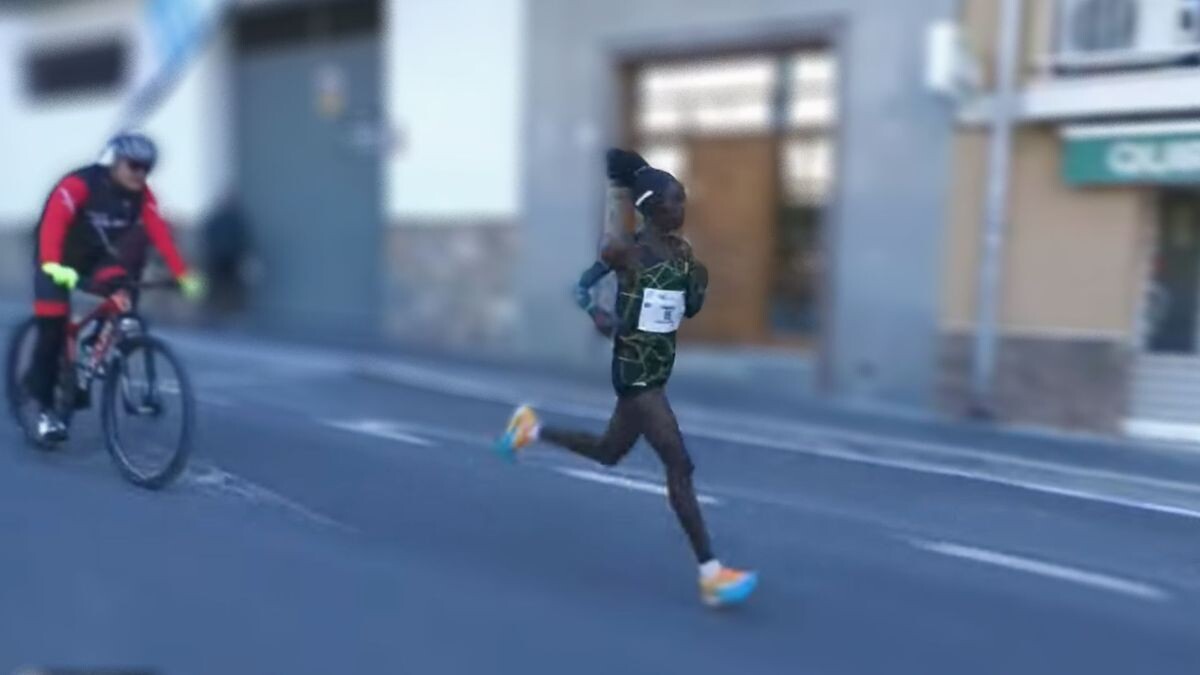
The Kenyans also swept all before them in the women's half-marathon; Beatrice Cheserek, who finished ninth overall (ie. was beaten by just eight men runners), came first with a time of 1:08:22.
Janet Ruguru Gishumbu (1:08.30) was second, Lydia Jebichi Korir (1:08.49), third.

Estonian runner Jekaterina Patjuk finished sixth (1:17.11), and another Estonian, Liina Černov, came eighth (1:24.56).
Marathon weekend continues with the 10K race Saturday afternoon and then the full marathon, starting 9 a.m. Sunday morning.
(09/11/2023) ⚡AMPby Andrew Whyte, Kristjan Kallaste
Tallin Marathon
The Tallinn Marathon has won a sure place in the competition calendar of runners and has become an attractive destination for running tourists looking for new experiences. About 20 000 running enthusiasts from 56 different countries participated in the 2017 event. As a tradition, the marathon will take place in every second Sunday of September, this year 9th of September,...
more...Kandie faces stiff opposition as he seeks to defend Valencia title
Former Valencia Half Marathon winner Kibiwott Kandie is among 14 Kenyans set to battle it out at the Valencia Half Marathon on October 22 in Spain.
Kandie, who holds the half marathon's best time of 57:32, will face tough competition from Ethiopia’s Yomif Kejelcha who holds a time of 58:32 (second best time in the marathon).
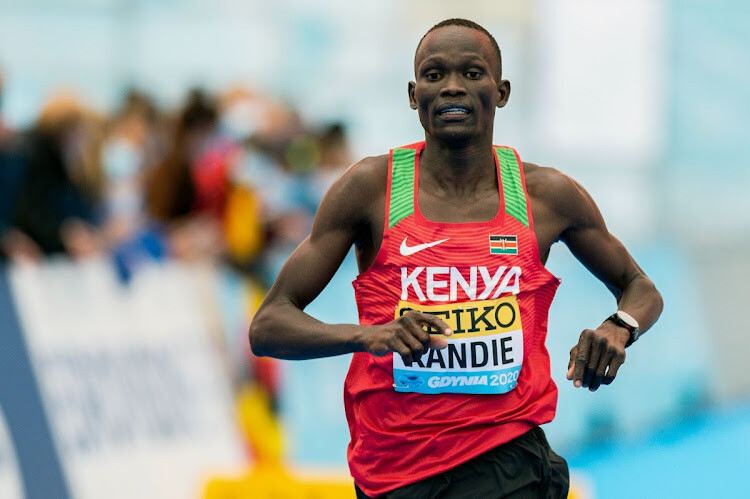
Kandie, the 2020 World Athletics Half Marathon silver medalist, will be hoping to cement his name in Valencia and replicate his amazing performance back in 2020 when he set the record time in the race.
The two will be joined by runners, who have clocked under 59 minutes in the race, including Matthew Kimeli, winner of the 15th annual UAE Healthy Kidney 10K in 2019 in Central Park, New York, who holds a time of 58:43.
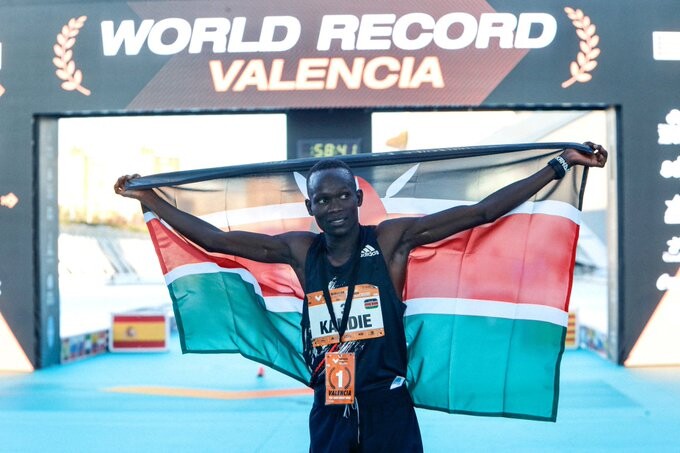
Sebastian Sawe, who holds a half marathon best of 58:58 from his win at the 2022 Bahrain Royal Night Half Marathon, will be gunning to take the title from Kandie.
The 2022 Standard Chartered Marathon 10km bronze medalist, Bravin Kiprop, who has a time of 59:22 in the half marathon, will also be among the challengers alongside Josephat Kiprotich who won the 38th edition of the Maratona da Cidade do Rio de Janeiro, Brazil in June.
Other Kenyan athletes in the race include Brian Kwemoi (59:37), Hillary Kipkoech (59:41), Erick Sang (59:50), Weldon Langat (59:55), Laban Kiplimo (1:00.13) and Kelvin Kibiwott (1:00.14).
Ethiopian’s Tadese Worku, 3,000m medalist at the 2021 World Athletics U20, and 5,000m world 3,000m junior record holder, Hagos Gebrhiwet will give the Kenyans a competitive race.
Great Britain's all-time number three, Callum Robert Hawkins (1:00:00), will be looking to pull an upset for the group.
The women's challenge will be led by the 2019 world 5,000m silver medallist, Margaret Chelimo who holds a time of 1:05:26 in the marathon and she will be joined by Janet Chepngetich.
The 2020 World Half Marathon silver medalist and current European record holder over the distance, Melat Kejeta from Germany together with Ethiopia’s 2023 world cross country silver medalist, Tsigie Gebreselama will give the Kenyan ladies a tough race.
(09/11/2023) ⚡AMPby Teddy Mulei
Valencia Half Marathon
The Trinidad Alfonso Valencia Half Marathon has become one of the top running events in the world. Valencia is one of the fastest half marathon in the world. The race, organized by SD Correcaminos Athletics Club, celebrated its silver anniversary in style with record participation, record crowd numbers, Silver label IAAF accreditation and an atmosphere that you will not find...
more...Bill Cooksey, 102-year-old becomes oldest person to finish half-marathon at Great North Run
A 102-year-old veteran of World War II has become the oldest man to complete a half marathon after finishing the Great North Run.
Bill Cooksey, who served in the RAF between 1941 and 1951, covered the 13.1 mile course from Newcastle to South Shields with the aid of walking companion Gavin Iceton in five hours and 41 minutes.
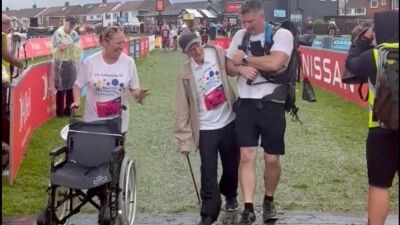
The centenarian had previously completed 10 miles a day for 10 days for his 100th birthday and cycled 1,000 miles for his 101st birthday, and took on the challenge to support the County Durham and Darlington NHS Trust.
“I’ve always wanted to do it,” MR Cooksey told ITV ahead of the event. “I’ve been up here 30 years and always walked, and when I heard about the Great North Run I thought ‘I’ll be able to do that surely,’ because there’s the additional impetus of the NHS.
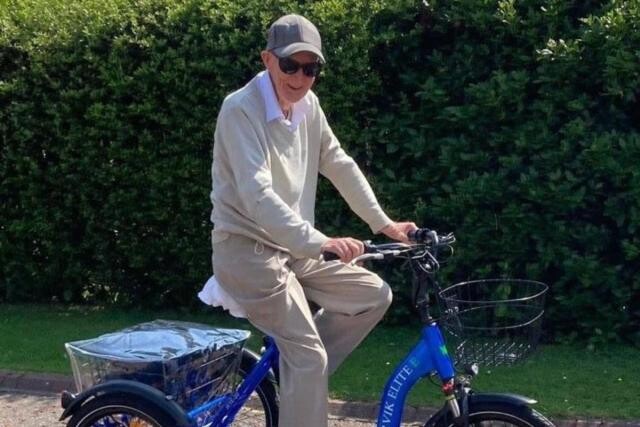
“Actually I don’t think I would have done it if it wasn’t of benefit to the NHS.”
The Great North run was hit by torrential downpours after a week of heat in the United Kingdom.
Some runners were forced to walk home after flash flooding hit roads and the Tyne and Wear Metro system.
Mr Cooksey, though, managed to survive the conditions to complete his challenge and raise more money for the NHS. “I am glad I have done it,” he said to the Daily Mail. “I wish we didn’t have to go through all that rain - but we did it.”
Pat Chambers, charity development manager at the trust, added: “What a hero Bill Cooksey is.
“He continued walking through a thunderstorm to become a record breaker completing it in just over five hours 40 minutes. We are so proud of him.”
(09/11/2023) ⚡AMPGreat North Run
Great North Run founder Brendan Foster believes Britain is ready to welcome the world with open arms after the launch of the event's most ambitious plan to date. The Great World Run campaign seeks to recruit one runner from every country in the United Nations – 193 in total – to take part in the iconic half marathon in...
more...Kenyan athlete Agness Barsosio has been handed a five-year doping ban
Kenyan athlete Agness Jeruto Barsosio has been handed a five-year ban by the Athletics Integrity Unit (AIU) for violating the World Anti-doping rules.
The 40-year-old star athlete was found guilty of the use of a Prohibited Substance/Method – specifically an ABP case.
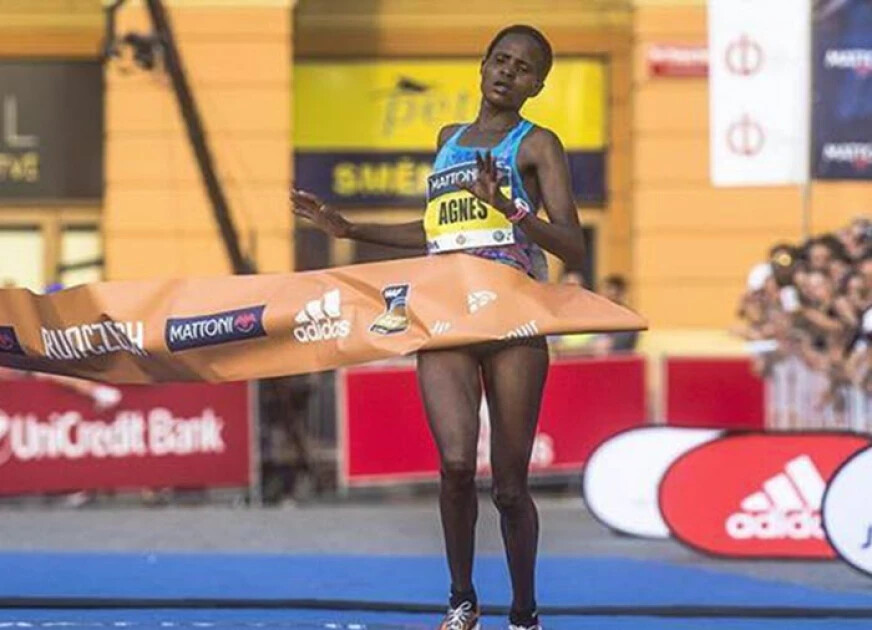
Disturbingly, Barsosio's doping violation follows closely on the heels of her sister Stella Barsosio's own doping ban.
Stella was banned earlier in February this year for a two-year period by the Anti-doping Agency of Kenya (ADAK) for the presence of the prohibited substance, trimetazidine.
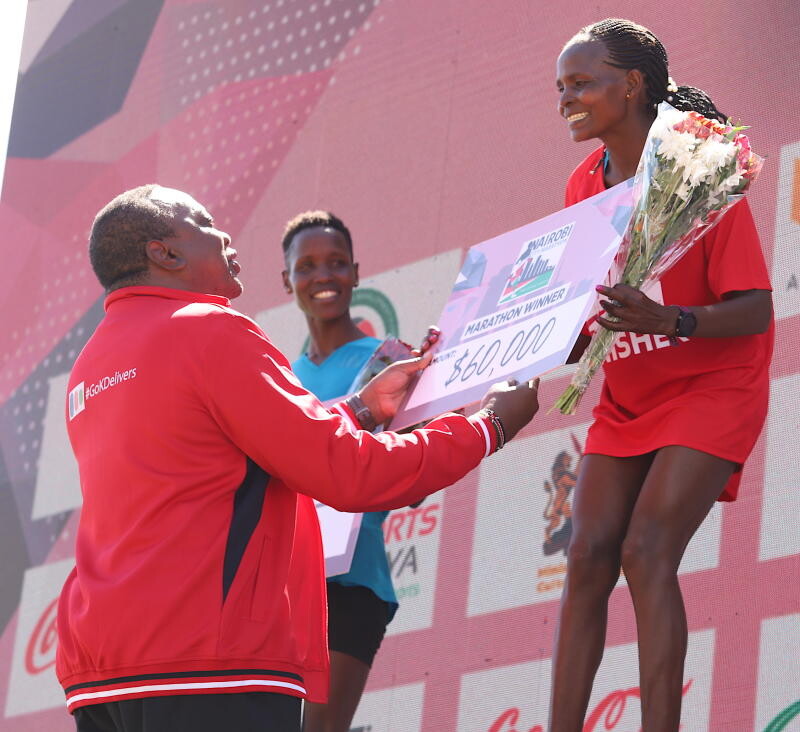
In a turn that has shocked fans and raised eyebrows in the sports community, Agness Barsosio went on to defy her provisional suspension, which was imposed on August 11, 2023.
Even with the suspension looming over her, she audaciously participated in the 18th edition of the Brazzaville International Half-Marathon on September 13, 2023, in Brazzaville, Congo.
The race was eventually won by fellow Kenyan Lilian Jelagat, who clocked an impressive 1:09.55. She was closely followed by Ethiopia’s Emebet Niguse Mamo with a time of 1:14.26.
Barsosio, despite her participation under a cloud of suspicion, managed to clinch the third spot, finishing the race in 1:18.55.
To make matters even more intricate, Agness Barsosio is married to Thorsten Steffen, who is known for organizing races for athletes through his entity, Afro Athletics Promotion.
Interestingly, Steffen is not registered as an athlete representative by World Athletics or Athletics Kenya, which might raise further questions on the influence and involvement he might have had in this controversy.
(09/11/2023) ⚡AMPby Festus Chuma
Josh Kerr and Jemma Reekie Secure Scottish Sweep at New Balance 5th Avenue Mile
New York, September 10, 2023 – World champion and Olympic medalist Josh Kerr and Olympian Jemma Reekie won the men’s and women’s professional athlete races at the New Balance 5th Avenue Mile on Sunday, making it the third consecutive year it was a Scottish sweep. It was the first title on Manhattan’s famous thoroughfare for Kerr, and the second for Reekie, who also won in 2021.
Kerr, fresh off winning a world title in the 1,500 meters last month, won in 3:47.9, the third fastest time in event history and fastest since 1995. Great Britain’s George Mills was second in 3:49.9, followed by New Zealand’s Geordie Beamish in third in 3:50.0. Vincent Ciattei was the top American, finishing fourth overall in 3:50.3.
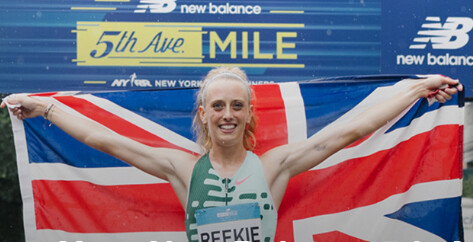
“It's a very different effort to run a mile down the street in flats versus running around the oval with spikes,” Kerr said. “I didn't have the performance I wanted to have last year, so I wanted to make that right. It's nice to end the season on a high, and it's difficult to do at any point in anyone's career at the end of the year. I've been training and racing for a long time this year and I was glad to put on a performance like that today.”
Reekie took the tape in 4:19.4, more than two seconds faster than her winning time in 2021, and was followed by Ireland’s Sarah Healy in 4:20.0 and Great Britain’s Melissa Courtney-Bryant in 4:20.6.
Nikki Hiltz was the top American, finishing fourth in 4:20.7.“Running this mile is always so special to me,” Reekie said. “I won it back in 2021. Last year, I placed well again, and then this year I'm happy to be back winning. It's such a great event and it's always a fun event to come to.”
The New Balance 5th Avenue Mile – the world’s most iconic road mile race since 1981 – stretches 20 blocks down Manhattan’s most famous thoroughfare.
More than 9,000 runners raced the New Balance 5th Avenue Mile on Sunday. In addition to professional athlete and age-group heats, this year’s New Balance 5th Avenue Mile featured Back to School Mile heats for youth, a New Balance Run Your Way Mile for first-time marathoners using NYRR Coaching Lab, a George Sheehan Memorial Mile for seniors. Due to inclement weather, the NYPD and FDNY Mile, NYRR Road Mile Championships, and the Rising New York Road Runners Stage 1 races were cancelled.
(09/10/2023) ⚡AMPNew Balance 5th Avenue Mile
The New Balance 5th Avenue Mile opens a beautiful 20-block stretch of 5th Avenue to runners of all ages and abilities who want to run their best mile in New York City. Special races include a youth mile, the George Sheehan Memorial Mile for runners age 60 and over, the NYRR Road Mile Championships, and Olympic-caliber professional men's and women's...
more...Tough Mudder Race in California Gets Even Tougher After Illness Spreads
More than 300 California runners have become sick with an unidentified virus following a mud run.
While Tough Mudder races are known to be grueling affairs that can take a toll on one’s body, an illness outbreak is affecting a large portion of California runners days after the race’s conclusion.
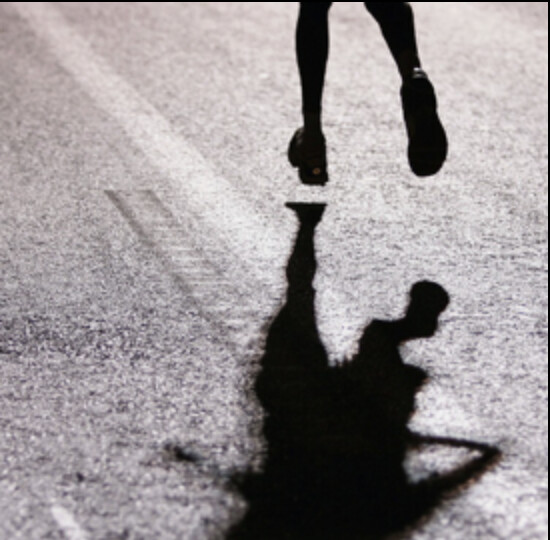
More than 300 participants in a recent Tough Mudder race in Sonoma County, California, have complained of rash, fever, muscle pain, nausea, and vomiting after the weekend event at Sonoma Raceway.
Matt Brown, a spokesman for Sonoma County, says that the 300 cases is just a “conservative estimate.”
“The Tough Mudder race involved extensive skin exposure to mud. Most affected persons have a pustular rash, fever, myalgias, and headache. These symptoms could be indicative of a minor illness called Swimmers’ Itch, but they can also indicate a Staph infection or other more serious bacterial infection such as Aeromonas,” the county said in an advisory.
Brown said on Wednesday that Sonoma County is asking healthcare providers to obtain cultures from patients exhibiting symptoms and report back the results, but says that the cause of most of the infections is likely Aeromonas.
Aeromonas bacteria, commonly found in water, mud, and some types of food, can lead to gastrointestinal issues and other health issues such as kidney disease, meningitis, and skin and wound infections.
Charlie Bernard, a spokesman for Tough Mudder, said the company is working with county officials to investigate the event. Bernard says that Tough Mudder reached out to all participants and is sharing with them the health advisory. The organization urges people exhibiting unresolved or worsening rash, flu-like symptoms, fever, lethargy, and nerve pain to seek medical care.
“All necessary protocols were followed in preparation for, and during, the event,” Bernard wrote in an email to participants. “Our thoughts are with those affected, and we are actively investigating to understand exactly what occurred.”
In 2015, more than 1,500 runners in France experienced a norovirus after partaking in a mud run. In 2014, the CDC released a study of a mud run in Nevada two years prior that saw 22 runners fall ill afterward, also due to norovirus.
(09/10/2023) ⚡AMPNeed More Energy? Try These 5 Foods Full of Vitamin B12
Vitamin B12 is an important player in keeping your engine running and your energy levels up. Find out which foods can increase your intake naturally.
Did you know vitamin B12 is often called “the energy vitamin”? Not only is vitamin B12 pivotal in keeping your blood and nerve cells healthy, but it’s also involved in making DNA – meaning it’s literally part of the material that makes up every single cell of your body. Studies have found Vitamin B12 helps athletes build muscle mass and improve endurance, reduce muscle fatigue, boosts production of red blood cells, and speed recovery. So, when you hear health professionals say vitamin B12 is kind of a big deal, we mean it!
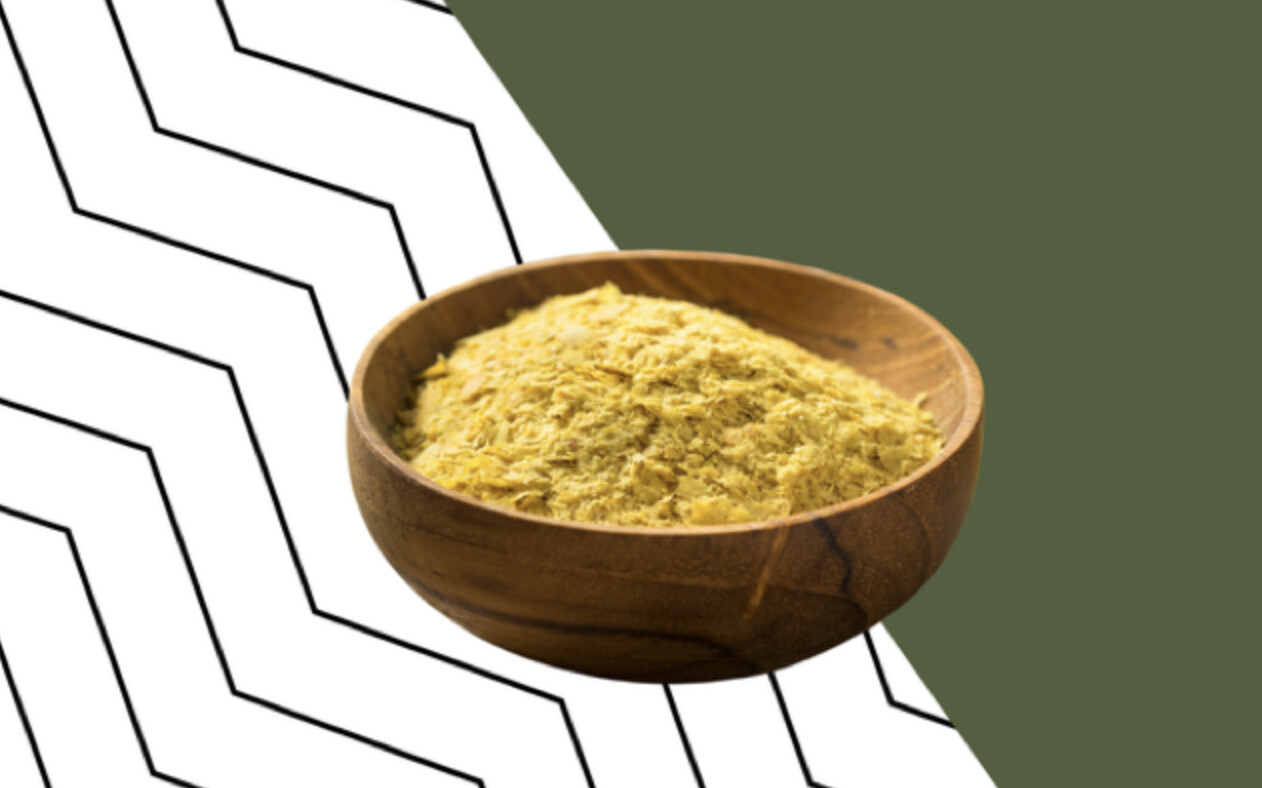

Now, there may be a “magic pill” for what seems like everything these days, including vitamin B12, but buyer beware. Vitamin B12 infusions offered by high-end shopping centers and spas tout a “natural” boost of energy for a pretty penny. But are they really necessary? Most likely, no. I will admit, I’m a bit biased in that I have a food-first, supplement-as-safety-net philosophy. But I still couldn’t fathom paying the $90 I’ve seen quoted per infusion when research shows there are staple foods you can easily eat more of to naturally increase your B12 levels.
Skip the pricey infusions and instead try tweaking your diet. Consider adding these five foods into your meals to naturally increase your intake of vitamin B12. And, of course, always consult with your healthcare provider if you have any questions or concerns about your particular needs. Some lifestyles, such as vegan and vegetarianism, do require supplementation of B12 to ensure you are meeting your needs.
The following foods all contain 20% or more of the recommended daily vitamin B12 intake (2.4 micrograms per day for adults). With these in your daily rotation, you can boost your energy and ensure you’re eating a well-rounded, nutrient-rich diet.
Did you know vitamin B12 is usually found in animal products and proteins, yet one of the richest sources is actually vegan? I’m not kidding! Nutritional yeast is a vitamin B12 powerhouse with ¼ cup providing anywhere from 8.3 to 24 mcg per serving, or about 346 to 1000% of the daily value. While the amount varies from brand to brand, it’s without question worth it to add a little sprinkle of nutritional yeast to your pastas, popcorn, and sauces to help increase your B12 intakes, naturally.
If you’re new to nutritional yeast, it has a flakey texture and blends well into dishes you’d like to impart a cheese-like flavor, all while keeping your recipes dairy-free.
There’s more than just omega-3s found inside delicious and nutritious seafood. A 3-ounce serving of cooked salmon provides 2.6 mcg of vitamin B12, or about 108% of the daily value! Plus, it also contains vitamin D, an important nutrient necessary for keeping your bones healthy.
While salmon comes in a variety of convenient options, from smoked and refrigerated to cooked and canned, there are a plethora of ways to add more salmon into your busy routine.
Along with an array of other important nutrients that support healthy living and aging, an 85% lean, 15% fat pan-browned 3-ounce portion of ground beef contains 2.4 mcg of vitamin B12, or about 100% of the daily value. For individuals who struggle to get enough vitamin B12, choline, iron, zinc and protein in their diets, lean beef is an excellent addition that provides quite literally a lot of bang for your nutritional buck. It’s easy to prepare and pairs well with other nutrient-rich foods, like fruits and vegetables, that most Americans need to be eating more of.
Unless you have a food allergy or lifestyle preference, there’s no reason to remove cow’s milk from your diet. It’s high in vitamin B12, coming in at 1.3 mcg per 1 cup serving, or about 54% of the daily value. Dairy milk plays an important role in growth and development through supporting bone health, as well as regulating blood pressure.
If milk isn’t your jam, you can still reap the benefits of dairy by including yogurt in your diet, too! A 6-ounce container of yogurt contains 1 mcg of vitamin B12 too, or about 43% of the daily value.
Quite possibly my favorite B12-rich food to recommend to families regardless of economic stance is fortified breakfast cereal. It’s convenient, available on multiple government food assistance programs and downright delicious. A serving (about 1-1 ¼ cups) of most standard fortified breakfast cereals provides about 25% of the daily value of vitamin B12, or about 0.6 mcg. Pair the cereal with cow’s milk and you get a double dose of vitamin B12!
While there’s a wide variety of fortified breakfast cereals to choose from, I recommend choosing two. First, choose one that contains minimal added sugar, like a whole grain oat cereal. Then, choose a second that your family loves, usually with a tad more added sugar. Do a 70/30 blend of the whole grain oat with the “fun” cereal to create a nutrient rich bowl of goodness to start your day!
(09/10/2023) ⚡AMPby Outside Online
Ngetich breaks women-only world 10km record in Brasov
Kenya’s Agnes Ngetich broke the women-only world 10km record* at the Trunsylvania 10km, clocking 29:24 at the World Athletics Elite Label road race held on Sunday (10) as part of the Brasov Running Festival in Romania.
In an impressive solo running display, the 22-year-old showed her intent from the start and covered the first 5km in 14:25 – four seconds faster than the women-only world record for that distance.
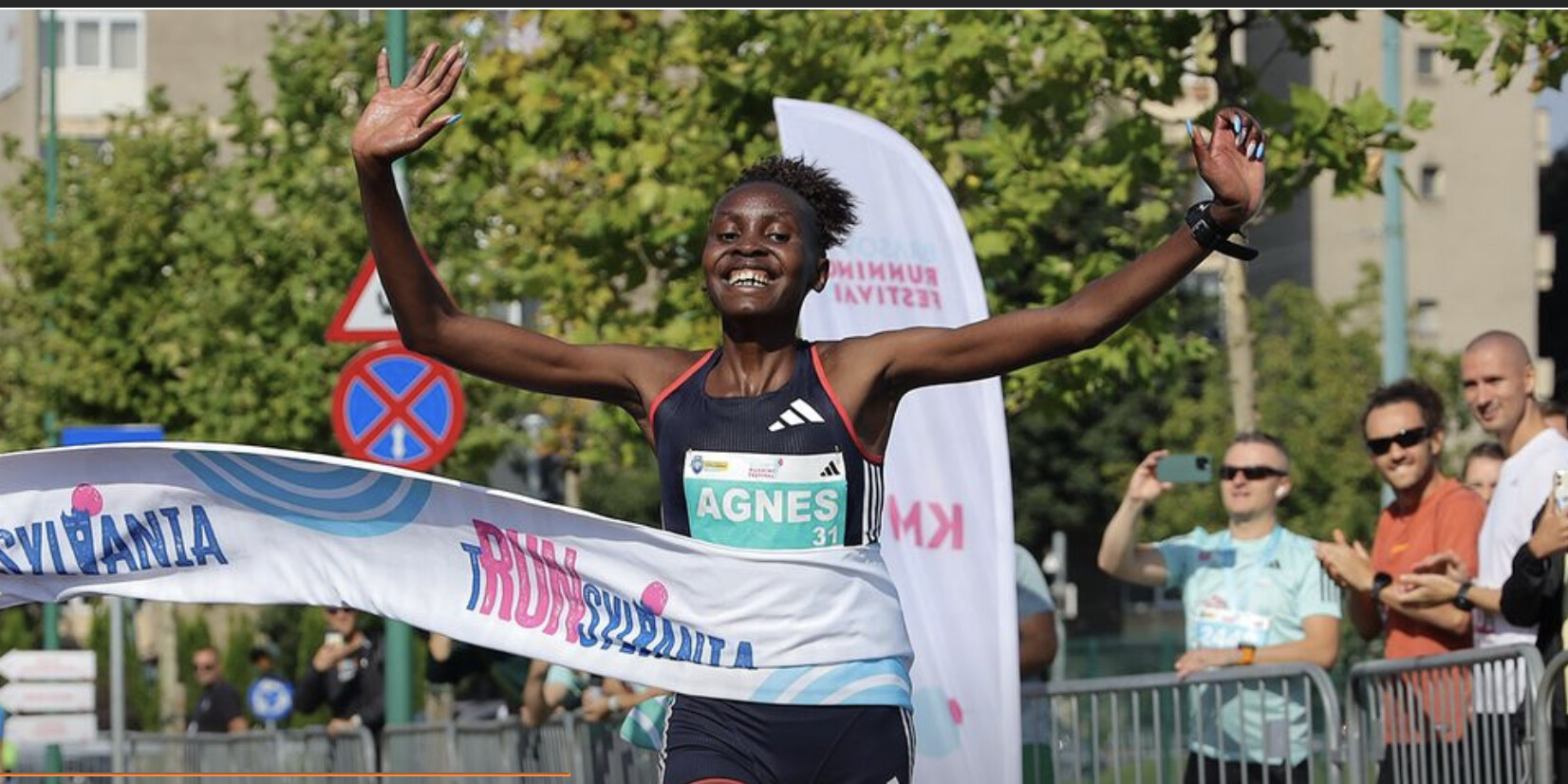
She had a lead of 10 seconds over her compatriot Catherine Reline at that point.
Racing on the loop course, Ngetich went on to pass 6.5km in 18:54 and 8.5km in 24:56 before crossing the finish line in 29:24 to record the fastest ever 10km in a women-only race, improving on the 30:01 set by the late Agnes Tirop in Herzogenaurach in 2021.
As well as being the fastest women-only 10km, Ngetich’s time is the third-quickest by a woman in history, behind only the 29:14 run by Ethiopia’s Yalemzerf Yehualaw in a mixed race in Castellon last year and the 29:19 Yehualaw clocked in Valencia earlier this year.
“The world record is a surprise to me,” said Ngetich, who started the 2022 race in Brasov as the pacemaker but went on to finish second in 30:30. “I didn’t expect to get the world record. I just wanted a PB, low 30 minutes to break the course record, but a world record is really a surprise.”
The race started at a fast pace right from the gun with Ngetich, Reline and Uganda’s Joy Cheptoyek leaving the pacemaker – who had been asked to lead the runners through 5km in 15:00 – quickly behind.
The trio sped through 1500m in 4:12 and Cheptoyek started to lose contact with the Kenyan pair a kilometre later. Ngetich and Reline went through 3km in 8:32 but it was only a few hundred metres down the road in the Coresi district on the outskirts of the Transylvanian city that the latter started to drift back. From then on, Ngetich was out on her own.
Ngetich, who claimed bronze at the World Athletics Cross Country Championships in Bathurst in February and then finished sixth in the 10,000m final at the World Athletics Championships Budapest 23 last month, set a women-only world 5km record with her split of 14:25, improving on the 14:29 achieved by Ethiopia’s Senbere Teferi in Herzogenaurach on the same day that Tirop set her 10km mark.
By 7km, Ngetich had built up an 18-second lead over Reline and the gap just kept on widening.
As Ngetich passed the 8.5km checkpoint in 24:56, Reline was second in 25:29, and the leader continued to fly over the final section of the three-lap course before gaining her second world record of the morning.
“I started the year with the World Cross, which was perfect, so I wanted to close the season with a good result,” explained Ngetich, who achieved that aim in sensational style.
Reline held on to finish second in 30:14, while Cheptoyek placed third in 30:34.
The men's race was won by Weldon Langat, who completed a Kenyan double in 27:05.
A group of seven athletes went through 5km in 13:30, with another four just two seconds further back at the halfway point.
Surges in the sixth kilometre by Kenya’s Amos Kurgat and Dennis Kibet saw the pair pull away, with Langat being towed along comfortably in their wake.
Kibet continued to regularly push the pace over the course of the next three kilometres but with just over one kilometre to go, he started to pay for his service at the front.
As Kurgat and Langat embarked on the final kilometre, the latter used that as a signal to change gears and made a decisive move that took him to victory just over two-and-a-half minutes later.
Kurgat took second place in 27:12, while the 2018 world U20 5000m champion Edward Zakayo Pingua came through strongly over the final kilometre, firstly overtaking the tiring Kibet and then almost catching Kurgat to complete an all-Kenyan podium in third place with 27:14.
Mile wins for Van Riel and Mechaal
The Trunsylvania 10km took place on the second day of the Brasov Running Festival, with Saturday (9) offering elite mile races.
Robin van Riel of the Netherlands and Turkiye’s Emine Hatun Mechaal claimed victories in the European Road Mile, winning in national records of 4:05.5 and 4:41.7, respectively.
Mechaal was the first across the line as dusk started to fall over the Coresi district, after a well calculated run that saw the 2014 European U20 cross country champion pull away from her nearest rivals over the final 100 metres.
Romania’s Cristina Balan finished second in 4:43.0, while Greek 1500m champion Melissa Anastasakis was third in 4:44.0, both women also setting national records.
In the men’s race, runners in the leading pack were reluctant to go with pacemaker Stephen Masindet and they passed 1km in an unofficial 2:40.0, which made the anticipated sub-four-minute time and a world record highly unlikely.
In the end, Van Riel was able to outsprint his younger compatriot Stefan Nillessen in a thrilling duel as the finish line approached.
Van Riel clocked 4:05.5 to Nillessen’s 4:05.8, with Italy’s Giovanni Filippi third in 4:07.2.
Further elite mile action will be on offer in Riga next month as the World Athletics Road Running Championships hosts mile, 5km and half marathon races.
(09/10/2023) ⚡AMPBrasov Running Festival 10K
"Brasov Running Festival” is set to become the iconic running event of Romania, with elite, popular and children races, concerts, conferences and other running related activities. The elite 10K race, Trunsylvania International 10K is expected to enjoy an impressive participation of world class runners on a very fast course. -The only World Athletics Elite Label 10K in South-East Europe -The...
more...Jepchirchir and Tola win Great North Run half marathon
Kenya’s Peres Jepchirchir won the women’s race in 1:06:45, while Ethiopia’s Tamirat Tola claimed the men’s title in 59:58 at the Great North Run half marathon on Sunday (10).
Britain’s record-breaking warm weather continued as the elite career of one of its greatest athletes ended at the 42nd edition of the half marathon that takes participants from Newcastle to South Shields.
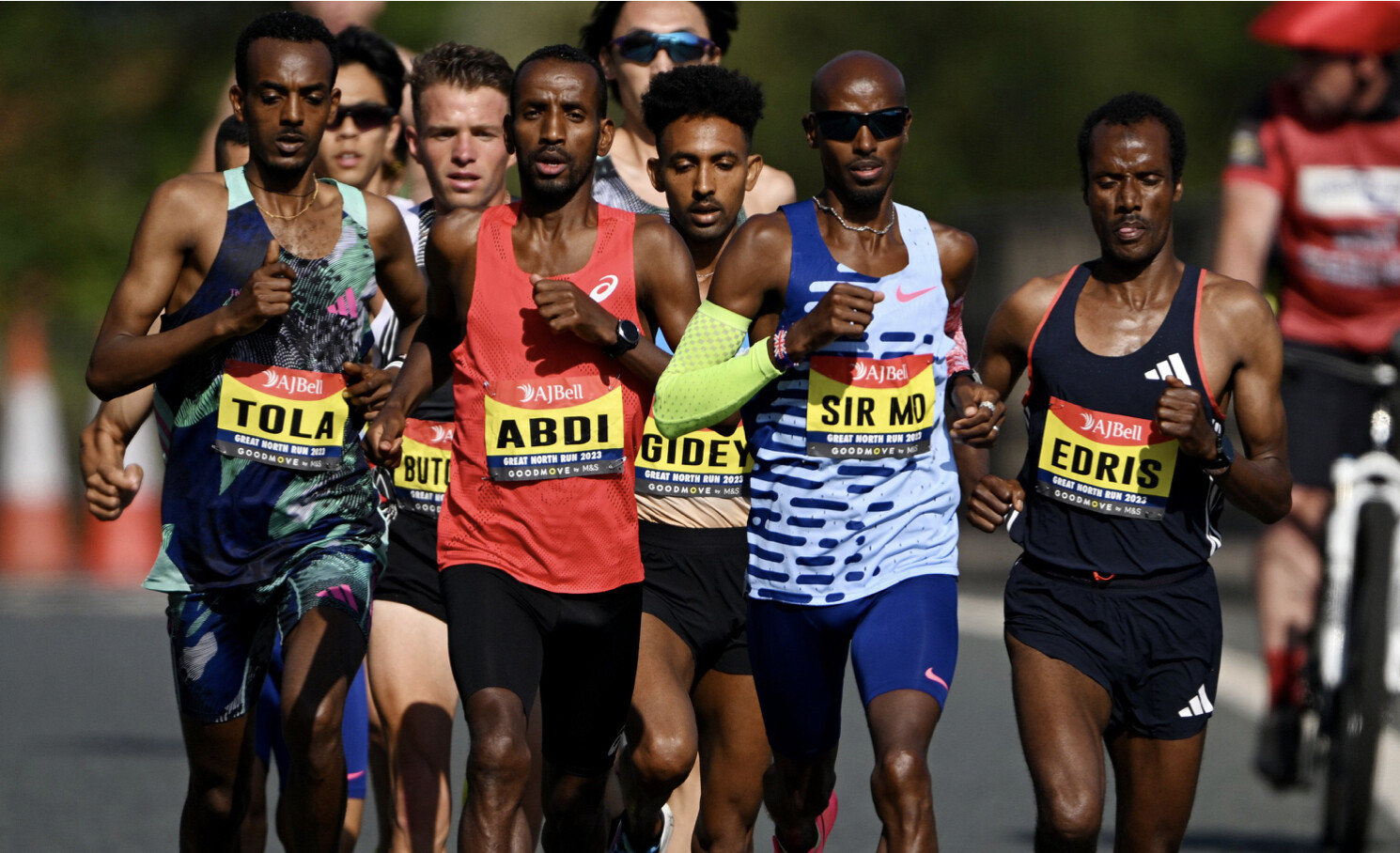
Mohamed Farah placed a respectable and emotional fourth in 1:03:28. He would have loved to have been on the podium in his final race, but he was no match for the Olympic and world-medal winning trio ahead.
Tola made some amends for his failure to retain his world marathon title 14 days earlier. Alongside Farah, the smooth-running Ethiopian led a group of seven athletes at 5km (14:11), then pressed on as the group climbed to the highest point of the course at five miles.
Then, on the downhill dual carriageway stretch, he showed the form which deserted him in the closing stages of the Budapest marathon. His 4:27 mile to seven broke all but Bashir Abdi, then he cranked it up to 4:20 and was 10 seconds up on the Belgian, who himself was 30 seconds ahead of Muktar Edris.
Tola’s pace slowed as the course climbed, but he still pulled away to dip under one hour. No-one else got under 61 minutes. Abdi was second in 1:01:20, while Edris was third in 1:01:54.
In the women’s race, Jepchirchir went one better than her runner-up finish in 2022.
Following a snappy 5:03 opening mile, her fellow New York Marathon winner Sharon Lokedi was her only company, but just for four miles. In the 24°C heat, Jepchirchir ran quicker than she had in kinder running conditions a year earlier. This is a woman who won the Olympic marathon when it was 31°C with 78% humidity, so heat doesn’t bother her.
Behind Jepchirchir and Lokedi, who finished second in 1:07:43, was Britain’s Charlotte Purdue, who repeated her 2021 third place finish to tune up nicely for her Berlin Marathon bid.
“I decided to run by myself,” Jepchirchir told the BBC. Both she and Lokedi are also in marathon preparations as they get ready to return to the New York City Marathon on 5 November.
As with so many mass races of this kind, there were countless human interest stories and races within races amid the 43,768 starters. One unique record was established by blind British runner Jim Roberts, who completed the distance untethered in 2:08:25.
The last word goes to Farah. “All I know is running,” declared the 10-time global track gold medallist in his post-race interview that was broadcast to the sunbaked spectators on the seafront. “That’s what made me happy for so many years.”
(09/10/2023) ⚡AMPGreat North Run
Great North Run founder Brendan Foster believes Britain is ready to welcome the world with open arms after the launch of the event's most ambitious plan to date. The Great World Run campaign seeks to recruit one runner from every country in the United Nations – 193 in total – to take part in the iconic half marathon in...
more...This year's Bank of America Chicago Marathon could be the largest ever
The 2023 Bank of American Chicago Marathon is shaping up to be the race's largest ever.
With more than 47,000 participants expected to run in this year's race, organizers said it could be "the largest finisher field to date."
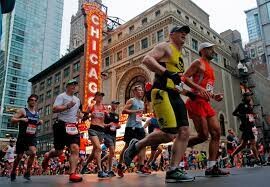
The previous record was set in 2019, with 45,932 finishers crossing the finish line.
That's not the only thing making this year's race particularly special, as another major milestone will be reached come Oct. 8.
According to organizers, the Chicago Marathon will see its millionth finisher in this year's race.

Since the event began in 1977, more than 960,000 participants have crossed the finish line.
"On Sunday, October 8, we will welcome the millionth finisher across the line in Grant Park," a letter to participants from Carey Pinkowski, executive race director read. "While being the millionth finisher is a unique honor, it took 999,999 finishes to reach that milestone: finishes made up of world records, American records and personal records, of smiles, tears and disbelief, of pride, pain and awe."
"Whether you’ve contributed to that number by running a past Chicago Marathon or will contribute to that number this fall, you are a significant part of the race’s story," the letter continued.
Earlier this year, the marathon's 2023 elite field was announced, a lineup of athletes organizers are calling "one of the deepest, most-decorated assemblies of athletes in race history."
This year's race will see all four of its defending champions return to city streets on Oct. 8, with a number of records at risk.
“Chicago has been home to world-records, historic debuts and has served as an introduction to runners who became legends of the sport,” Executive Race Director Carey Pinkowski said in a statement. “As we prepare to celebrate a landmark year in the race’s history, we anticipate historic performances that we will talk about for years to come.”
(09/09/2023) ⚡AMPBank of America Chicago
Running the Bank of America Chicago Marathon is the pinnacle of achievement for elite athletes and everyday runners alike. On race day, runners from all 50 states and more than 100 countries will set out to accomplish a personal dream by reaching the finish line in Grant Park. The Bank of America Chicago Marathon is known for its flat and...
more...Kenya’s Bernard Koech will be competing with the hope of making the podium one more time but he faces a stern test from the Ethiopians
The men’s field in this year’s Amsterdam Marathon on Sunday, October 15 promises to be a thrilling show as it has attracted some of the greatest long-distance runners.
Kenya’s Bernard Koech will be competing with the hope of making the podium one more time but he faces a stern test from the Ethiopians. Koech finished second behind Tamirat Tola (the current course record holder) in 2021.
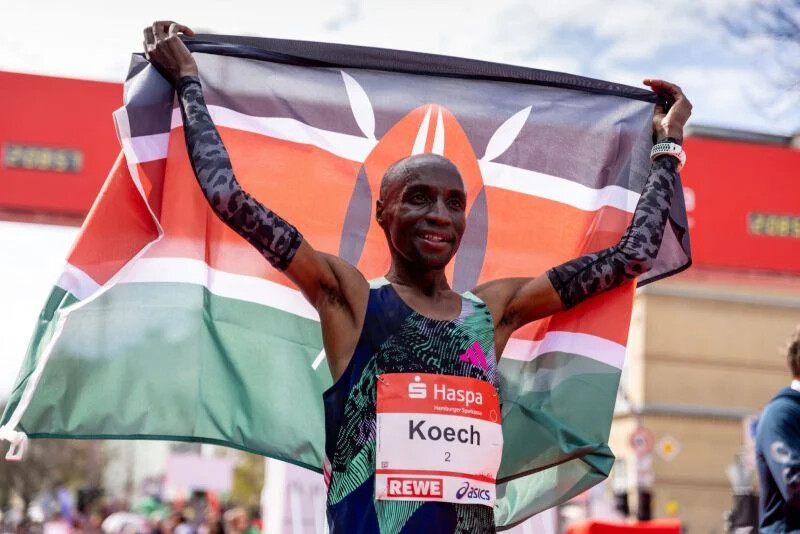
He also recorded the fourth fastest time this year at the Hamburg Marathon last year in April (2:04.09).
The Kenyan will enjoy the company of training partner Kennedy Kimutai to Amsterdam, from whom an interesting debut is expected. With a personal best of 58.28, he already ran a very strong half marathon once, at the Valencia Half Marathon in 2021.
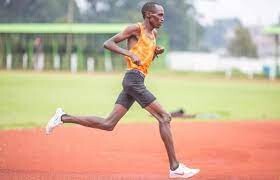
The 28-year-old Birhanu Legese of Ethiopia will hope to stop Kenya’s dominance in the marathons. He is one of the greatest marathoners who is behind three absolute legends, Eliud Kipchoge, Kelvin Kiptum, and Kenenisa Bekele.
He won the Tokyo Marathon in 2019 and 2020 and at the 2019 Berlin Marathon, he finished second in 2:02.48 behind Bekele.
Others in top contention include Lemi Berhanu (2:04.33), Asrar Hiryden (2:04.43), Cybrian Kotut (2:04.47), Barselius Kipyego (2:04.48), and Abdisa Tola (2:05.42), the younger brother of Tamirat Tola.
For three editions in a row now, the women's course record has been broken and the current course record of 2:17.20 is held by the Ethiopian Almaz Ayana.
Degitu Azimeraw, 24, will return to the race circuit after her pregnancy. With her best time, Tiruye Mesfin is not much inferior to her compatriot.
The Ethiopian ran a strong debut of 2:18.47 in Valencia last year and so could also be the first woman to enter the Olympic Stadium on Sunday, October 15.
(09/09/2023) ⚡AMPby Abigael Wuafula
TCS Amsterdam Marathon
Do you want to enjoy Amsterdam in October and all that the city has to offer you? Want to feel a real athlete and start and finish in the historic Olympic stadium? Or run across the widely discussed passage under the beautiful National Museum? Then come to Amsterdam for the annual TCS Amsterdam Marathon in October! The TCS Amsterdam Marathon...
more...Reynold Cheruiyot eyeing more glory at Prefontaine Classic after estelar ML performance in Brussels
World Under-20 1,500m champion Reynold Cheruiyot is not resting on his laurels as he eyes more success at the final Diamond League Meeting, Prefontaine Classic, scheduled for September 16 and 17.
Cheruiyot was in action during Friday night’s Diamond League Meeting in Brussels, Belgium and he managed to finish second in the men’s 2,000m.
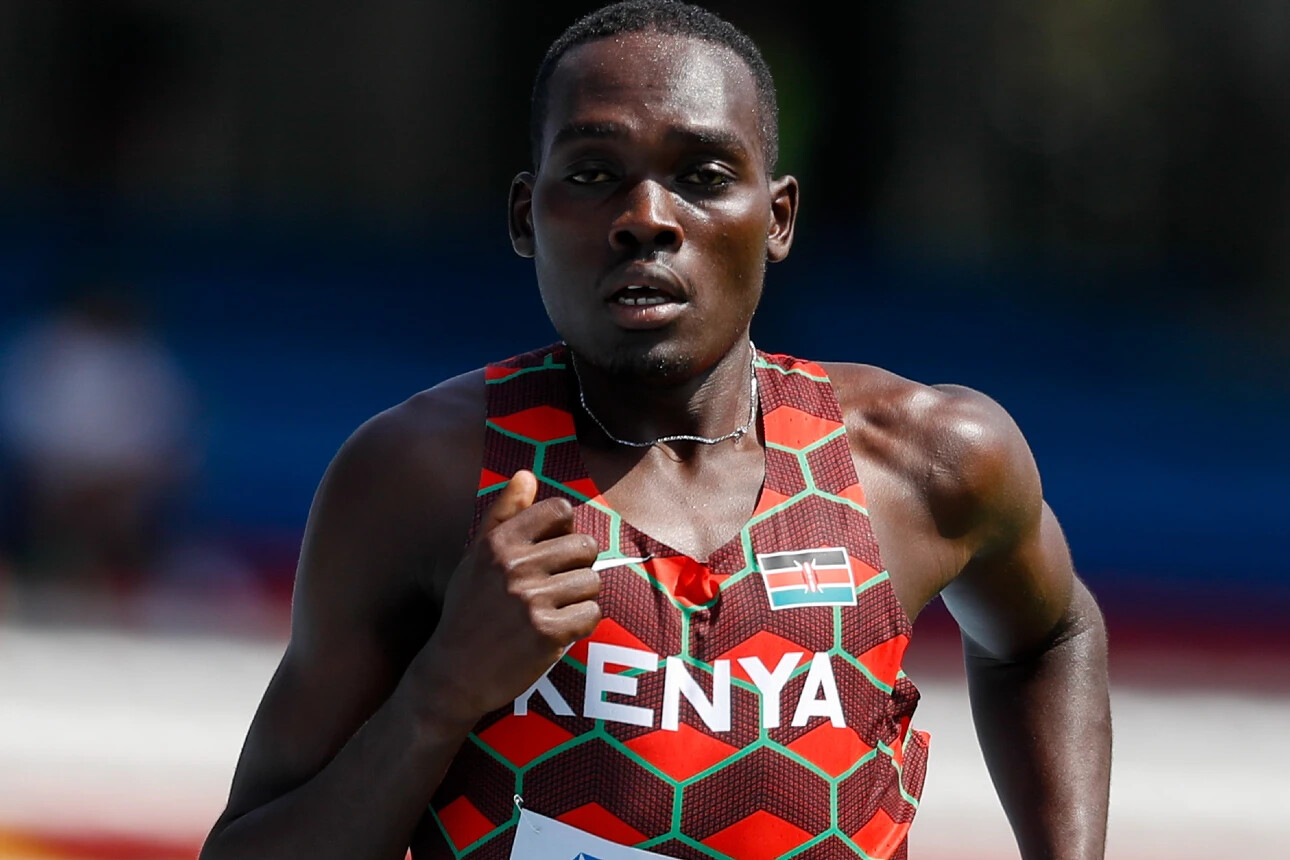
The 19-year-old clocked a Personal Best and national record time of 4:48.14 as Norway’s Jakob Ingebrigtsen broke the world record, clocking 4:43.13 to cross the line.
After his victory in Brussels, Cheruiyot wants to extend the hot streak to his final race of the season in Eugene, USA.
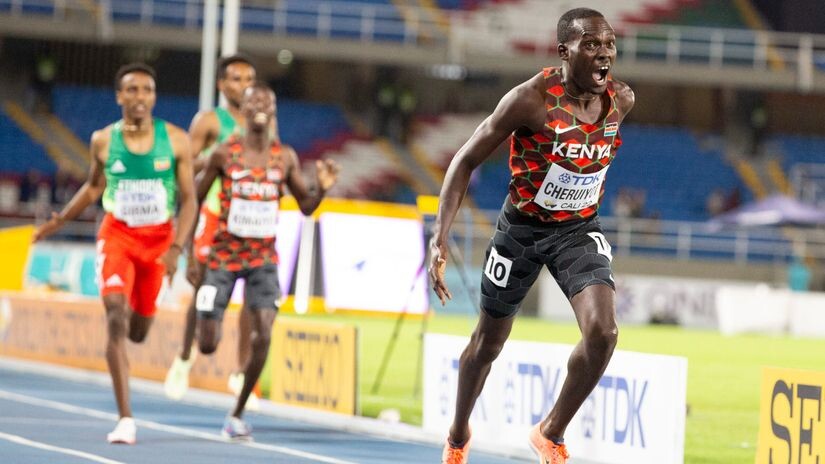
In a post-race interview, he said: “It was a tough race and I tried to follow the best. The race was not ideal for me but I was still able to follow and to run a personal record."
"The stadium was very good, the crowd was loud so that really helped. I only have one race left, the final in Eugene. I'm already looking forward to it and hope to run close to this time again.”
The youngster has had an amazing season thus far, making his debut in the senior category at the World Championships in Budapest, Hungary where he reached the final of the event.
He has also competed with the seniors in a couple of races including the Kip Keino Classic where he won and the USATF Los Angeles Grand Prix where he finished second behind Timothy Cheruiyot.
(09/09/2023) ⚡AMPby Abigael Wuafula
Prefontaine Classic
The Pre Classic, part of the Diamond League series of international meets featuring Olympic-level athletes, is scheduled to be held at the new Hayward Field in Eugene. The Prefontaine Classicis the longest-running outdoor invitational track & field meet in America and is part of the elite Wanda Diamond League of meets held worldwide annually. The Pre Classic’s results score has...
more...Caffeine Boosts Performance. But What About Coffee?
Researchers assess the potential benefits—and downsides—of the hundreds of bioactive compounds in your morning brew
A few years ago, researchers in Spain combed through the results of more than 7,000 urine samples tested for doping at competitions in various Olympic sports. Overall, 76 percent of the samples contained caffeine, with the highest concentrations found in cycling, track and field, and rowing. Frankly, I’m surprised that the number wasn’t higher, given how effective caffeine is as a performance booster and how widespread coffee consumption is more generally.

But I’m conflating two different things. Coffee, as a new review paper in the Journal of International Society of Sports Nutrition points out, is not just liquid caffeine. I’ve written many, many articles about research into caffeine’s performance-boosting powers, almost all of which uses pills to provide a carefully controlled dose of caffeine. In contrast, many of my running friends swear by their pre-workout or pre-race coffee. The new review, from a group of researchers led by Lonnie Lowery of Walsh University, asks whether coffee—“a complex matrix of hundreds of compounds”—provides the same athletic benefits as an equivalent dose of caffeine, or whether there are additional pros and cons. The short answer: it’s not clear.
You can make a reasonable argument that coffee is less effective than caffeine as a performance aid. The most obvious problem is that it’s hard to know exactly how much caffeine you’re getting in a cup of coffee. It depends on what kind of beans you’re using, how they’re prepared, how big your cup is, and so on. One study that tested a variety of store-bought espressos found caffeine levels ranging from 51 milligrams per serving at Starbucks to 322 milligrams per serving at Patisserie Francois.
Even if you stick with a consistent source of coffee with a known amount of caffeine, getting in the optimal performance-boosting dose might be a challenge. Sports scientists typically recommend taking between 3 and 6 milligrams per kilogram of bodyweight an hour before competition.
For a typical medium-roast coffee, that works out to two to four cups (16 to 32 ounces), depending on body size. That’s a lot of coffee—and caffeine from coffee appears to be absorbed more quickly than from capsules, which means you might want to finish downing all that liquid less than an hour before competition.
A further problem is that some of the other substances in coffee might interfere with the action of caffeine. The main source of that concern is a 1998 study that compared performance under five different conditions: water with placebo capsule, water with caffeine capsule, decaffeinated coffee, decaffeinated coffee with caffeine capsule, and regular coffee. In a half-hour running test, performance was only increased with water-with-caffeine-capsule trial. Since caffeine levels were identical in the coffee and the decaf-plus-caffeine-pill trials, that suggests that something in the coffee—perhaps chlorogenic acid, one of coffee’s key antioxidant compounds—was interfering with the performance boost of caffeine.
To be fair, subsequent research has mostly suggested that coffee works just as well as caffeine. This 2018 study, for example, found that coffee boosted one-mile run time by 1.9 percent compared to a placebo, and by 1.3 percent compared to decaffeinated coffee. Other studies have also found performance boosts from coffee, at least when taken in quantities that provide a known and sufficient dose of caffeine.
If anything, the results of that 2018 study raise the opposite question. Decaf was 0.6 percent faster than placebo. That wasn’t a statistically significant difference, but is it possible that coffee itself has performance benefits independent of its caffeine content?
The case in favor of coffee is based on all its other bioactive ingredients: most prominently polyphenols like chlorogenic acid that may influence blood flow and glucose levels, but also various minerals, melanoidins produced in the roasting process that have antioxidant and anti-inflammatory properties, and small amounts of carbohydrate, protein, and fat. The review takes an exhaustive dive into what these various substances might do for performance, listing their “neuromuscular, antioxidant, endocrine, cognitive, and metabolic effects,” but actual evidence of a performance boost is very thin on the ground.
To me, the strongest evidence that coffee might have some positive effects independent of caffeine comes from a different line of research. Back in 2018, I wrote about a study linking the effects of caffeine to a gene that affects caffeine metabolism. Roughly half the people in the study were fast caffeine metabolizers, and they got a big performance boost from caffeine in a 10K cycling trial. Most of the rest were medium metabolizers, and they got a negligible performance boost. The final 8 percent of subjects were slow metabolizers, and caffeine actually made them slower, perhaps because the positive effects of caffeine in the brain were outweighed by negative effects on blood circulation that persisted for longer.
This particular study used caffeine pills, but it emerged from an earlier line of research on the health effects of coffee. Big population-level studies have produced conflicting results about whether drinking lots of coffee is good or bad for you. University of Toronto researcher Ahmed El-Sohemy has suggested that this is because the effects depend on how you metabolize caffeine. He has shown, for example, that fast metabolizers have a lower risk of heart attack if they drink one to three cups of coffee a day, perhaps thanks to all those antioxidants and polyphenols and so on. Conversely, slow metabolizers have a 36 percent higher risk of heart attack if they drink two to three cups of coffee a day.
The implication here is that, at least for some aspects of long-term health, coffee is good for you but caffeine is bad for you. Fast caffeine metabolizers get the caffeine out of their system quickly, so the positive effects dominate. Slow metabolizers have the caffeine in their system for longer, so the negative effects take over. A key point: in a talk I saw earlier this year, El-Sohemy said that people’s subjective experience of how caffeine affects them is not a good predictor of whether they’re fast or slow metabolizers. (He does run a company that sells genetic testing of caffeine metabolism, so take that claim for what it’s worth.) My overall take, then, is that decaffeinated coffee probably has some good stuff in it, but there’s no convincing evidence that it will make you faster.
In the real world, the number one reason most of the athletes I know drink coffee before workouts and races is that it reliably makes them poop. That’s a discussion that Lowery’s review doesn’t get into, but it’s not insignificant for endurance athletes. If that’s your rationale, then by all means carry on. Drinking coffee is also a comforting and familiar routine for many people. But if you’re also hoping to harness the performance-boosting power of caffeine, then the main conclusion from the review is that you should take some time to figure out how much caffeine your favorite coffee contains, how much you usually drink, and decide whether you want to raise (or lower!) the dose, perhaps in combination with caffeine pills.
(09/09/2023) ⚡AMPby Outside Online
Florida ultrarunner tries to cross Atlantic Ocean in giant hamster wheel
A Florida ultrarunner who attempted to become the first man to run across the Atlantic Ocean in a man-made hamster wheel has been charged with obstruction of boarding and violation of a captain of the port order. It took the U.S. Coast Guard five days to bring him ashore, as outlined in a criminal complaint filed in Miami.
The U.S. Coast Guard spotted ultrarunner and activist Reza Ray Baluchi 100 kilometres off the coast of Tybee Island, Georgia, on Aug. 26, while he was setting up preparations for the incoming Hurricane Franklin. He began his journey six days earlier on Aug. 20.
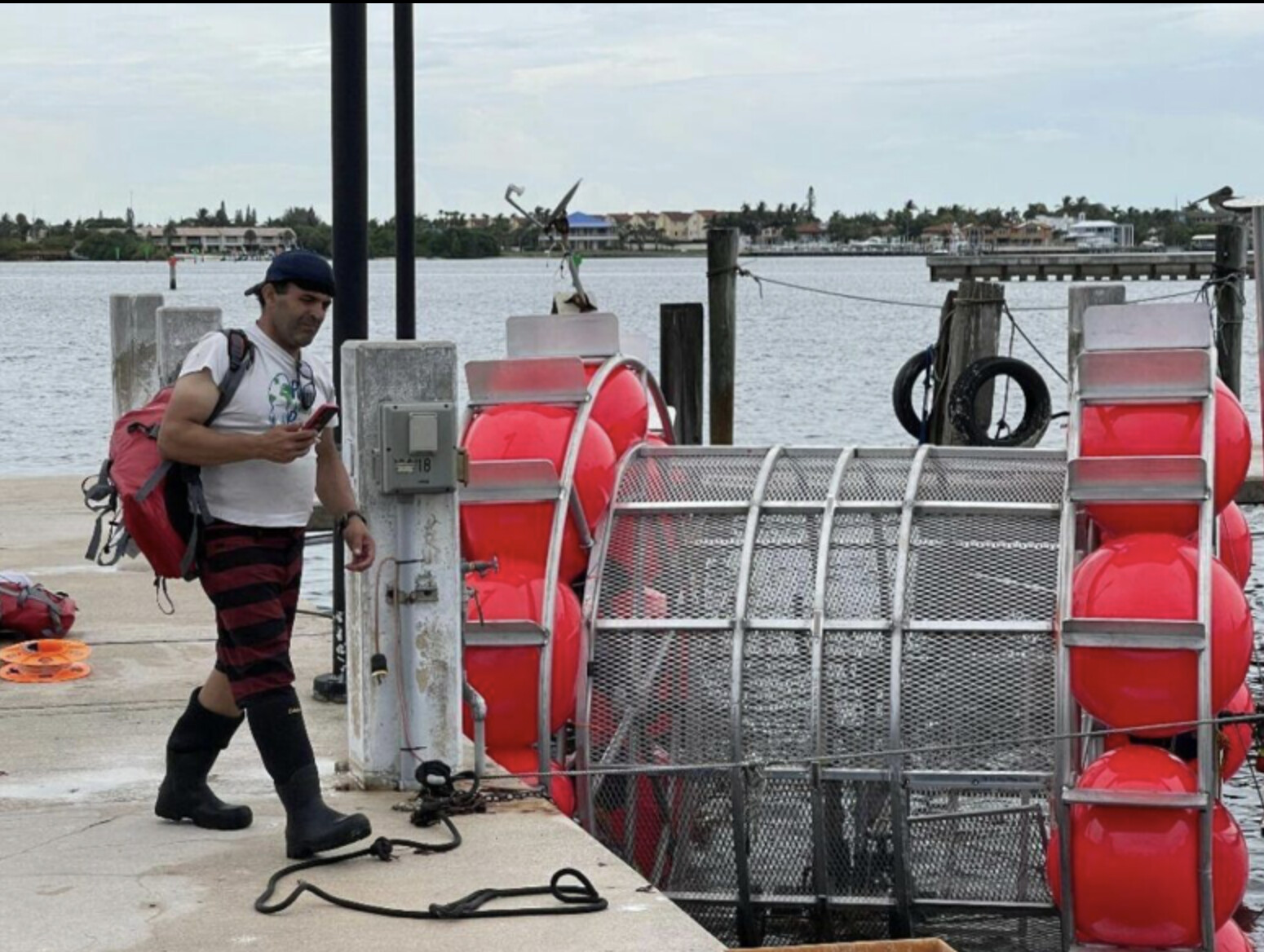
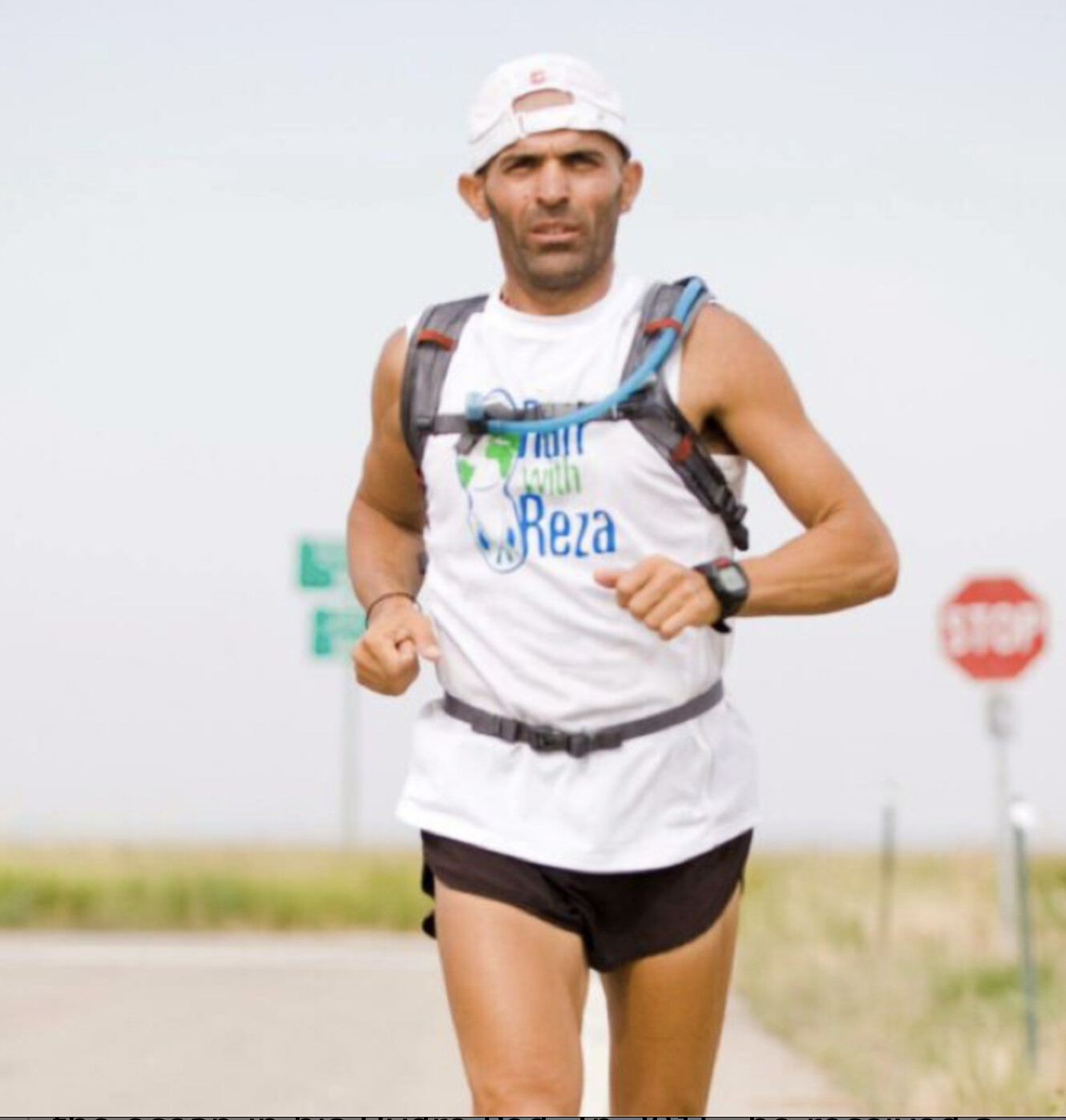
According to the Daytona Beach News-Journal, Baluchi was attempting to ride his man-made “hydro-pod” vessel to England, and he had a Florida registration onboard, which he couldn’t locate for the authorities. When they tried to get Baluchi off the boat, he told them he had a knife, and threatened to harm himself.
On his website, Baluchi stated that his ambition is to run through 195 recognized countries to “inspire us and unite us as a people” and ride his Hydro Pod across the ocean to show the world that anything is possible.
Baluchi told local news that the voyage was intended to raise money for charitable causes that include helping the homeless, the U.S. Coast Guard and the fire department.
This isn’t the first time Baluchi has attempted to cross the ocean in his Hydro Pod. In 2015, he received a captain of the port order from the Coast Guard that applied to any subsequent voyages. Baluchi failed to comply with the order and was stopped in his homemade vessel in 2016. He attempted another voyage in 2021, where the Coast Guard intervened again.
In 2007, Reza reportedly ran around the perimeter of the U.S. He ran over 18,000 kilometres in 202 days to raise money for The Children’s Hospital of Denver.
Court records show that Baluchi posted a $250,000 bond on the day he was charged.
(09/09/2023) ⚡AMPby Running Magazine
Mexico Marathon disqualifies 11,000 of their 30,000 runners after finding THOUSANDS cheated, including using cars and public transport mid-race, by investigating their electronic trackers
Organisers investigated complaints that runners failed to complete the course
Mexico Marathon organisers examined electronic tracking data from the event
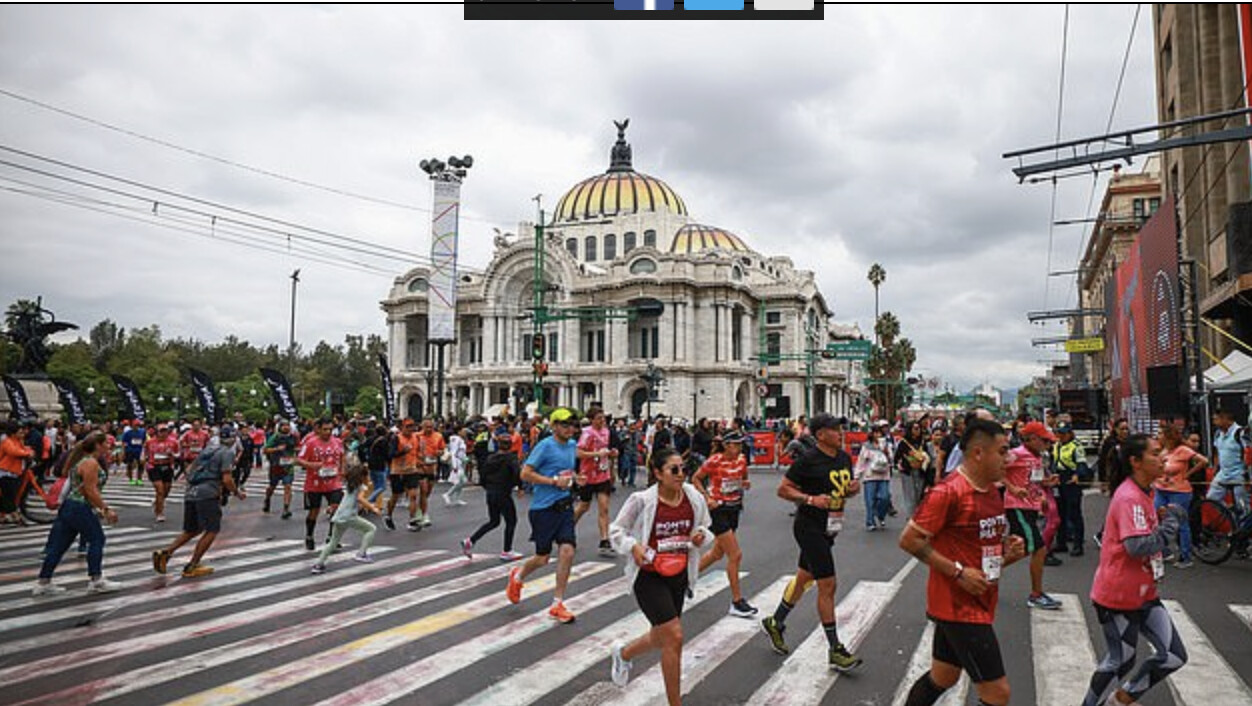
Thousands of runners have previously been disqualified from the annual race
Organisers of the Mexico Marathon have reportedly disqualified 11,000 runners after electronic trackers revealed the participants had not completed the full course.
Over 30,000 runners participated at the 40th anniversary edition of the race in Mexico City on August 27.
Mexico Marathon organisers were forced to investigate anonymous complaints from participants post-race.
Complaints alleged thousands of runners had not completed the full distance, according to Marca.
Runners were accused of using vehicles and public transport during the race to shorten the 26.22-mile course.
An investigation using data from the runners' electronic trackers reportedly revealed that thousands had not passed through checkpoints on the route.
The Mexico City Sports Institute confirmed it had launched an investigation into the situation.
The Mexico City Sports Institute informs that it will proceed to identify those cases in which participants of the XL Mexico City Marathon Telcel 2023 have demonstrated an unsportsmanlike attitude during the event and will invalidate their registration times,' the statement read.
'This great event not only represents an outstanding celebration for all the inhabitants of the capital, but also an occasion to reaffirm the transcendental values of sport.'
Several runners have reportedly claimed that their electronic tracker had not worked properly, leading to their times not being recorded accurately as they passed through checkpoints.
It is not the first time the Mexico Marathon has been forced to disqualify runners for cheating.
Nearly 6,000 runners were disqualified in the 2017 race, with 20 per cent of the field failing to complete the full course.
Organisers annulled the results of a further 3,090 runners following the 2018 race.
The Mexico Marathon holds World Athletics Gold Label Status, the second highest status awarded to road running events by the governing body.
Organisers say the status highlights the event's 'quality and professionalism' in Latin America.
A World Athletics spokesperson told Mail Sport: 'It is always disappointing to hear that people choose to cheat in our sport, such as the cheating that occurred in the mass race at the Mexico City Marathon on August 27.
'However, many race organisers use mass timing detection systems in today’s races and their effectiveness can be seen with the race organisers of this event who had the proper checkpoints in place, and have taken appropriate action by swiftly disqualifying all athletes who chose to cheat.'
This year’s men’s elite race was won by Bolivia’s Hector Garibay in a time of 2:08:23, while Celestine Chepchirchir of Kenya triumphed in the women’s in 2:27:17.
All finishers at the Mexico Marathon receive a medal, which this year included Mexico City's Latin American Tower on its design.
(09/09/2023) ⚡AMPRoad mile performances from Hiltz and Prakel submitted for world record ratification
The winning times from this year’s US Road Mile Championships – 4:27.97 for Nikki Hiltz and 4:01.21 for Sam Prakel – have been submitted for world record ratification. Pending the usual ratification process – which includes doping control and shoe compliance – these performances will become the inaugural world records for the discipline.
The road mile became an official world record discipline as of 1 September. As announced after the World Athletics Council Meeting in November 2022, official recognition of a world record will require a performance of at least 3:50.00 (men) or 4:19.00 (women) between 1 January and 1 September 2023. If they were not met, the fastest recorded record-eligible performances will be recognised as the world records.
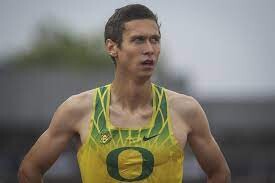
As such, the winning times at the US Road Mile Championships in Des Moines on 25 April proved to be the fastest eligible performances within that time frame.
There will, however, be a strong chance of these records being broken at the World Athletics Road Running Championships Riga 23 on 1 October, where the road mile is being contested by dozens of the world’s best middle-distance runners.
(09/09/2023) ⚡AMPby World Athletics
90-year-old Bob Emmerson finishes his 500th parkrun
A 90-year-old British runner celebrated a milestone 11 years in the making when he crossed the finish line of his 500th parkrun last Saturday.
Bob Emmerson of Northampton in central England was cheered on by hundreds of supporters—including his wife of nearly 70 years—in the final stretch of his run at the Northampton Racecourse, where the nonagenerian has notched most of his 500 runs since taking part in his first parkrun in 2012.
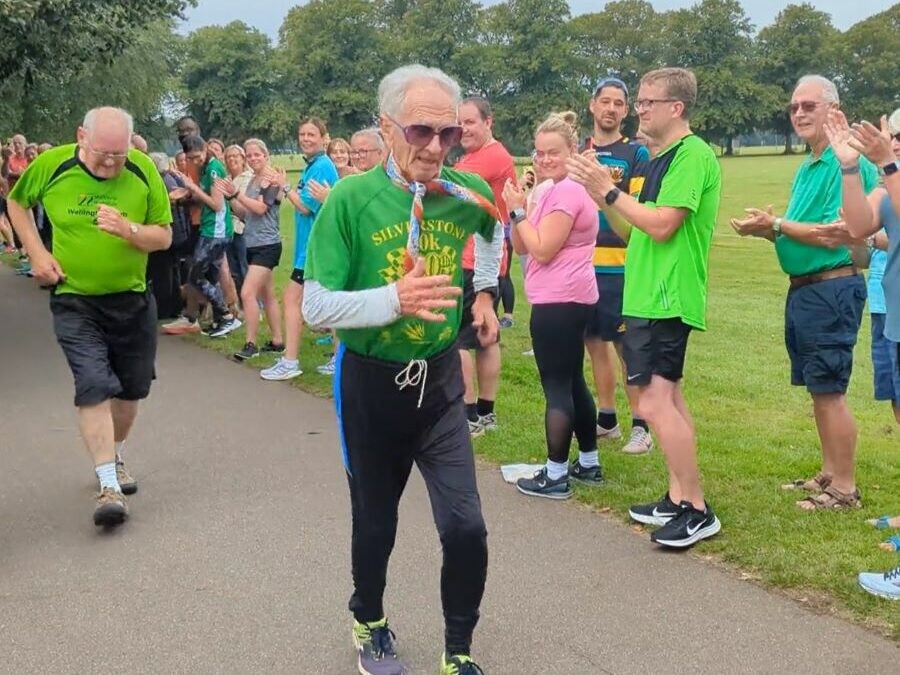
Launched in the U.K. in 2004, parkruns are free, weekly community events, now with more than 2,000 hosted in more than 20 countries including Canada. All parkruns are 5K events held Saturday mornings in parks and open spaces.
Emmerson credits the weekly events with helping him stay fit and active as he strides strongly into his 90s. In a congratulatory post on X, formerly known as Twitter, parkrun organizers quoted Emmerson as saying “my enthusiasm for life is down to parkrun and it has kept me mentally and physically stronger than living a life in (my) armchair.”
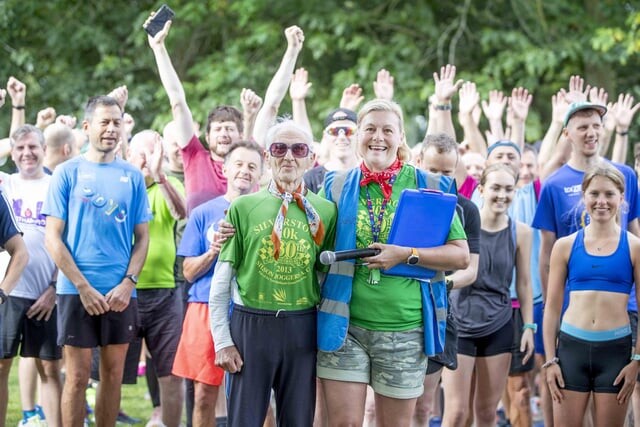
Although Emmerson first heard of parkrun a little more than a decade ago, he has been running since age 15. He told the BBC News he was a “proper, serious ultra-runner” when he was younger. He has completed ultramarathons and 24-hour races, and boasts a marathon personal best of 2:40:25.
Due to restrictions that forced parkruns to be put on hold during the COVID-19 pandemic, Emmerson’s 500-event milestone ended up taking a little longer than he had originally hoped. “I would have liked to have reached 500 by 90 years old,” he told the Northampton Chronicle and Echo. “I said that when I got to 500 I’d stop, but I changed my mind. I’ve made too many friends and couldn’t bear to lie in bed on a Saturday morning and think of everyone running.”
Emmerson, who these days finishes the Northampton parkrun course in around 50 minutes, added any future parkrun milestones are too far down the road to think about. “I’m not going to do 600, but who can tell?” he said. “You never know. Never say never. As long as I live, I shall be doing a bit of exercise.”
(09/08/2023) ⚡AMPby Paul Baswick
Molly Bookmyer who overcame cancer now challenges TCS Toronto Waterfront Marathon
Marathoners endure much suffering in order to excel in their sport but few have struggled with brain cancer.
American Molly Bookmyer underwent two surgeries eight years ago following a diagnosis of a brain tumor while finishing up her degree at Ohio State University.
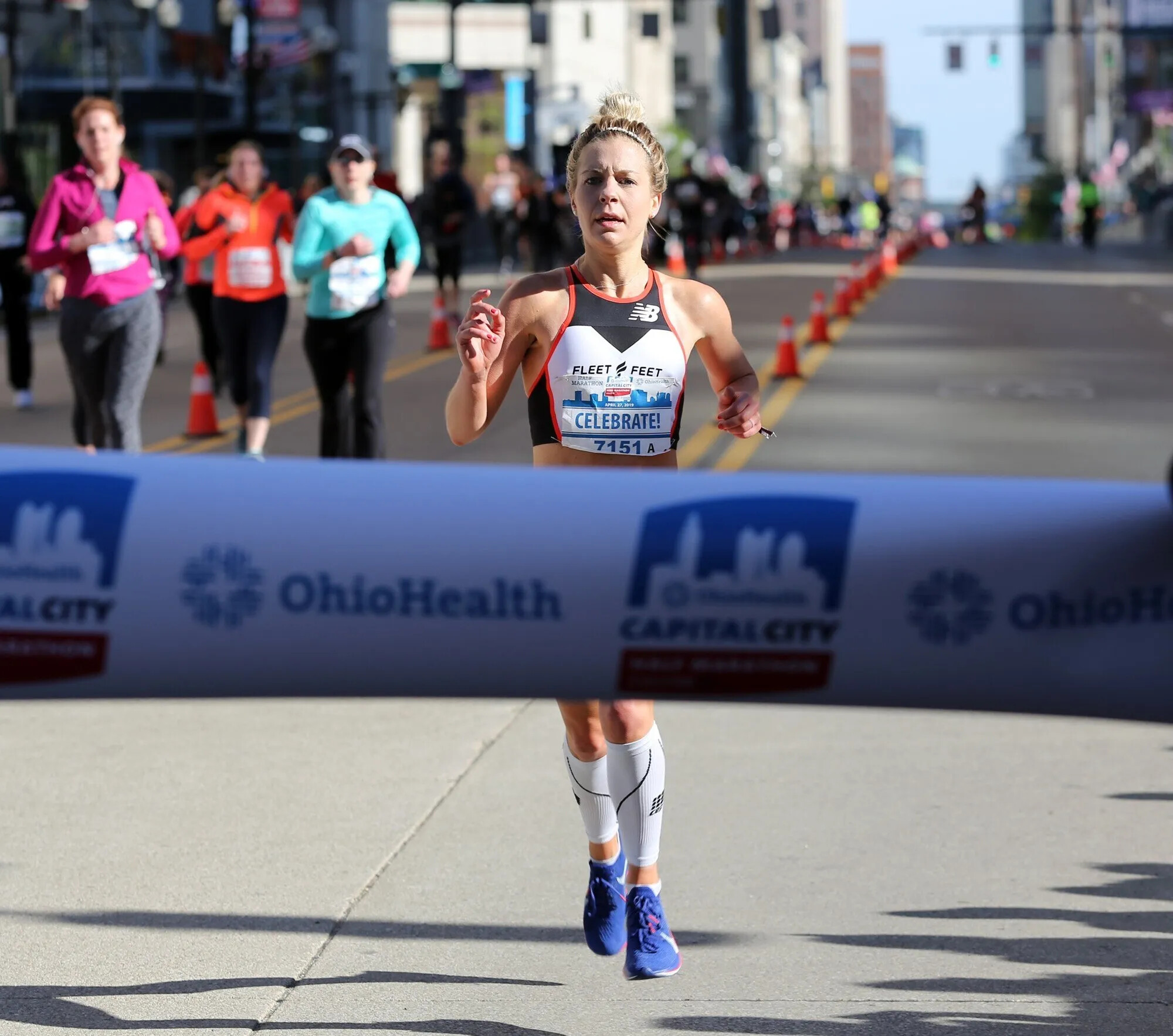
With that awful period behind her now, as an elite marathoner, her path has led her to the 2023 TCS Toronto Waterfront Marathon where she, and a growing number of American elites, will attempt to qualify for the 2024 US Olympic Trials, to be run in Orlando, Florida on February 3.
Her current best is 2:31:39 and she sees Toronto Waterfront – her first international race – as an opportunity to knock off a significant chunk of time.
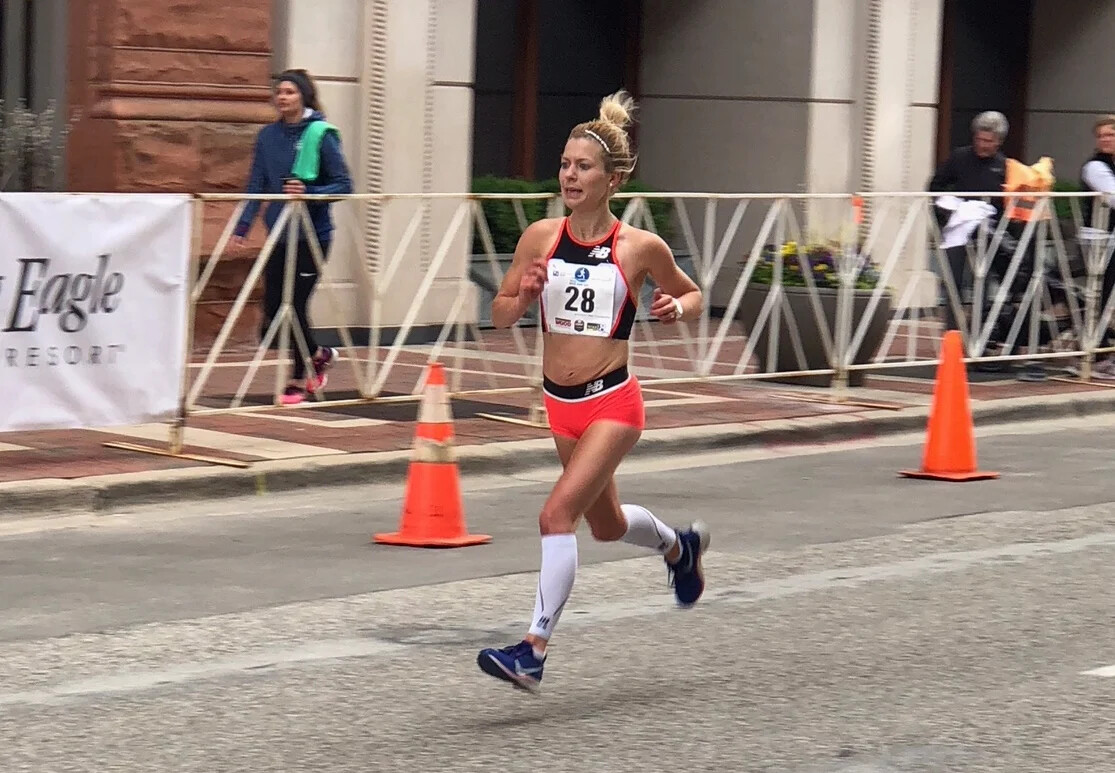
“I want to run 2:27,” she reveals. “I feel I haven’t had a breakthrough in my marathon I have had some good races at shorter distances. I ran a 1:10:51 half marathon last fall. So I have had some success at the shorter distances and I haven’t quite figured out the full marathon distance yet.
“My first goal is to get the world championship standard and the second goal is to get the Olympic standard.”
Bookmyer graduated from Ohio State in 2013 with a Bachelor of Science in Business Administration, Management and Operations. While she was a member of the Buckeyes’ cross-country and track teams she was not a scholarship athlete. Now she has a better understanding as to why she was limited.
“I was a walk-on at OSU. I got better but I wasn’t a star in college,“ she explains. “When I look back at it, it was probably because I was sick at the time. I didn’t know I had a brain tumor. I competed on the team but my times weren’t spectacular. I lettered in cross country and track but I wasn’t All American and I didn’t make it to the NCAA’s.”
A series of stress fractures also held her back and it was by a stroke of luck that the tumor was discovered.
“In different blood tests to try to find why I got stress fractures they found one of my hormones prolactin was high,” Bookmyer says. “This (hormone) is associated with tumors near your pituitary gland. They did a scan and they found the tumor in my ventricle. It was kind of luck. I probably had symptoms but thought it was normal.”
Following the diagnosis she underwent a spinal tap to determine if the cancer cells were in her spinal column. Fortunately, it came back negative. But the surgery to remove the growing tumor was vital.
Originally from Cleveland, she moved to Columbus to study at OSU and remained there ever since. That’s also where she met her husband, Eric.
Immediately after graduation she worked for the Abercrombie & Fitch company. Then, having dealt with her own serious illness, Eric was diagnosed with testicular cancer. Running was helpful in both relieving the stress of being a full-time caregiver to him as well as helping in her own recovery.
“I am healthy now,” she says through a smile. “I get a brain scan every year. It used to be every six months. After the first surgery I had complications from the surgery. The tumor has not come back.
“Eric just had his 5-year checkup, He had a couple of surgeries and ‘chemo’ so now he is healthy as well, I guess we are lucky we went through a lot and came out the other side healthy.”
Two years ago she was recruited by one of her former contacts at Abercrombie & Fitch to work for Hawthorne Gardening Company which is involved in the hydroponics industry selling lights, pots, containers, benches and other gardening equipment in both the cannabis and general botany industry. Most importantly, the job allows her to work remotely, something that helps while training full time.
Down time is limited but she says she enjoys spending time with Eric and her dog Cooper. Listening to music is another relaxing pastime with Rob Thomas of Matchbox Twenty remaining a favorite. With the Toronto Waterfront Marathon rapidly approaching she is confident she will perform at her best on the big occasion.
“Training is going really well,” Bookmyer declares. “I had a little setback in the spring. I tore my plantar fascistic but that’s fully healed. My mileage has gone to 115 to 120 miles (185km – 193km) a week which is higher than I have been before; paces are good, I am feeling strong. I am excited for what that means.”
(09/08/2023) ⚡AMPby Paul Gains
TCS Toronto Waterfront Marathon
The Scotiabank Toronto Waterfront Marathon, Half-Marathon & 5k Run / Walk is organized by Canada Running Series Inc., organizers of the Canada Running Series, "A selection of Canada's best runs!" Canada Running Series annually organizes eight events in Montreal, Toronto and Vancouver that vary in distance from the 5k to the marathon. The Scotiabank Toronto Waterfront Marathon and Half-Marathon are...
more...World class athletes Legese and Azimeraw at the TCS Amsterdam Marathon
The TCS Amsterdam Marathon will welcome a strong elite field on Sunday, October 15. Ethiopian Birhanu Legese, who has run the fourth fastest time of all time with 2:02.48, will take a shot at the course record of 2:03.39. Bernard Koech (2:04.09) and Lemi Berhanu (2:04.33) also choose Amsterdam for their fall marathon. Among the women, Degitu Azimeraw is aiming for a second victory as well as a course record. Former winner Azimeraw will face competition from, among others, Tiruye Mesfin.
The 28-year-old Birhanu Legese is an all-time marathon runner behind three absolute legends: Eliud Kipchoge, Kelvin Kiptum and Kenenisa Bekele. The Ethiopian won the Tokyo Marathon in 2019 and 2020. At the 2019 Berlin Marathon, he finished second in 2:02.48 behind Bekele. Amsterdam will be the fifth Platinum Label marathon at which Legese will start.

Besides Legese, there are more candidates for the win. For example, Bernard Koech has been on the podium in Amsterdam before, when he finished second behind Tamirat Tola (the current course record holder) in 2021. Koech recorded the fourth fastest time this year in Hamburg last April: 2:04.09.
Koech will also take his training partner Kennedy Kimutai to Amsterdam, from whom an interesting debut is expected. With a personal best of 58.28, he already ran a very strong half marathon once (Valencia, 2021).
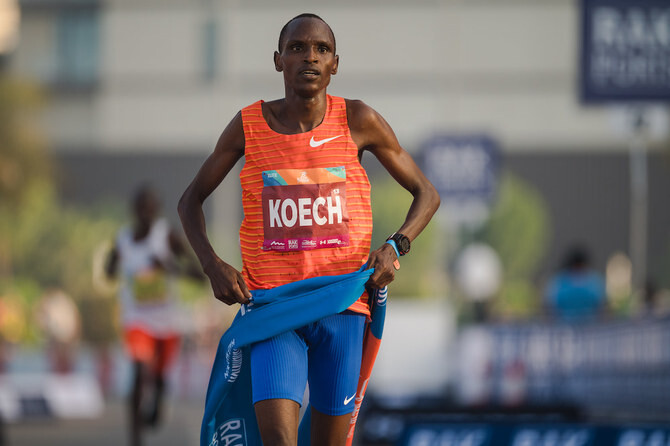
With Lemi Berhanu (2:04.33), Asrar Hiryden (2:04.43), Cybrian Kotut (2:04.47), Barselius Kipyego (2:04.48) and Abdisa Tola (2:05.42), the younger brother of Tamirat Tola, also at the start, it promises to be an exciting race.
For three editions in a row now, the women's course record has been broken. Since last year, the current course record of 2:17.20 is held by the Ethiopian Almaz Ayana. Degitu Azimeraw has fond memories of her debut marathon in Amsterdam: she raced to 2:19.26 in 2019. A time she tightened to 2:17.58 at the TCS London Marathon in 2021. Next month, the 24-year-old runner will return to the race circuit after her pregnancy.
With her best time, Tiruye Mesfin is not much inferior to her compatriot. The Ethiopian ran a strong debut of 2:18.47 in Valencia last year and so could also be the first woman to enter the Olympic Stadium on Sunday, October 15.
The TCS Amsterdam Marathon is holder of the Platinum Label of the World Athletics, which makes the marathon attractive for the fastest long distance athletes in the world. The Platinum Label guarantees a fast course, with a good and tightly organized race. Legese, Azimeraw and Koech, among others, also have the Platinum Label status themselves. Their participation not only ensures an attractive race, but also further sustainability of the event.
Strong Dutch field
Organizer Le Champion previously announced that Nienke Brinkman, Khalid Choukoud, Richard Douma, Roy Hoornweg, Stan Niesten, Luuk Maas, Anne Luijten and Jill Holterman will be at the start. Lucas Nieuwenboer (second Dutchman in Amsterdam last year) and Roel Wijmenga have been added to the list. A strong group is being built around these top athletes so that they can aim for fast times and Olympic limits.
(09/08/2023) ⚡AMPby Runners Web
TCS Amsterdam Marathon
Do you want to enjoy Amsterdam in October and all that the city has to offer you? Want to feel a real athlete and start and finish in the historic Olympic stadium? Or run across the widely discussed passage under the beautiful National Museum? Then come to Amsterdam for the annual TCS Amsterdam Marathon in October! The TCS Amsterdam Marathon...
more...Train your gut and smash your goals
Run long enough and you’ll experience a fuelling issue–stomach problems that have you racing to the nearest washroom, feeling like you’ve depleted your energy stores (the dreaded bonk) or simply struggling to choke down enough fuel to keep you feeling energized. Runners often wonder if a higher carb (CHO) intake would result in better performance, and are faced with the dilemma of how to keep their gut happy at the same time.
We connected with Kelly Pritchett, a professor in nutrition and exercise science at Central Washington University and the director of sports nutrition for CWU Athletics. Pritchett shared her tips to train your gut for optimal performance.
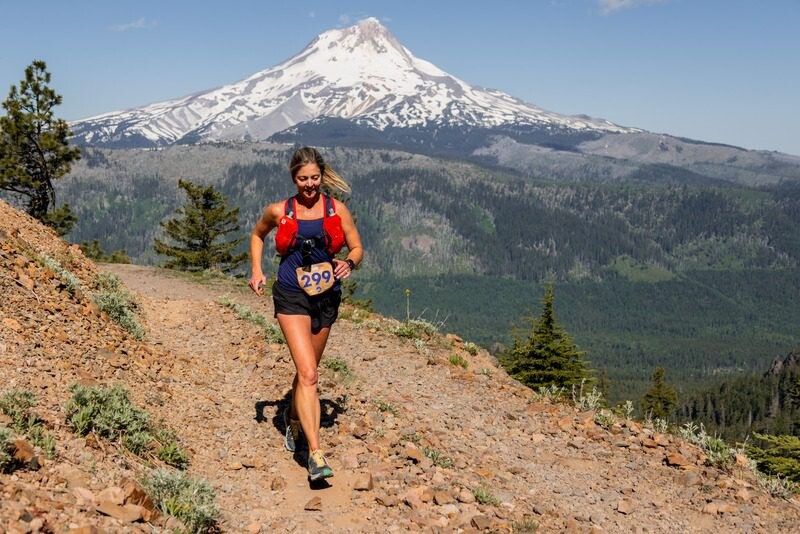
“Performance can be significantly improved following two weeks of successful gut training, with a decrease in GI symptoms,” she explained. “Reduce GI symptoms and increase carbohydrates–you feel better so you go faster.”
Give yourself at least two weeks

Spend the time necessary to complete an individualized protocol, including at least two to three days a week of gut training. Practice gut training in training sessions that are similar to your goal race–try fuelling on a long slow run if you’re prepping for an ultra, or during a race pace session if you’re gearing up for a marathon.
Find your limit
“Experiment with CHO and fluid intake per hour using the actual products (food and drink) you would plan to use during the event,” says Pritchett. Finding your limit is key–Pritchett says this would be when you start to experience upper or lower GI symptoms and discomfort. Remember, practicing this, while slightly uncomfortable, will allow you to execute flawless fuelling on race day.
Keep a record of what works
Practice training with 100-120 per cent of your chosen CHO and fluid intake. Pritchett suggests keeping notes from each session and refining and adjusting each day as needed.
“Consider some of the following factors that may influence your protocol: volume of fluid, concentration of fluid, frequency of intake, type of CHO, your regular diet (FODMAP content, amount of dietary CHO),” says Pritchett. Take into account the heat and humidity in your training environment, your hydration status before you begin and the fat and fibre content of your fueling plan.
Simulate race day
“To compensate for the stress of race day, consider using 80 per cent of your CHO and fluid intake tolerance to decrease the risk of GI symptoms,” says Pritchett. With a bit of experimentation, you should notice a difference in your ability to take in carbohydrates without discomfort, and maybe hit a PB as a result.
(09/08/2023) ⚡AMPby Keeley Milne
Eat dinner like a UTMB star tonight
Australian ultrarunner Lucy Bartholomew is known for her resilient and upbeat attitude, beautiful social media posts and passion for nourishing fuel. Bartholomew ran to 10th place at this year’s UTMB (170K) race and shared her race experience online: “a lot of walking, a little jogging, constant problem solving, unconditional buffet and a brief lesson in French.”
Bartholomew has a passion for creating healthy food to fuel her body to her fast finishes. She published a downloadable cookbook, Sustain, in 2022 and often shares what food carried her through her training and racing on Instagram. These rice paper rolls are simple to put together and easily adaptable to different preferences–”super fun for everyone in the family to do together and make as they want,” says Bartholomew.
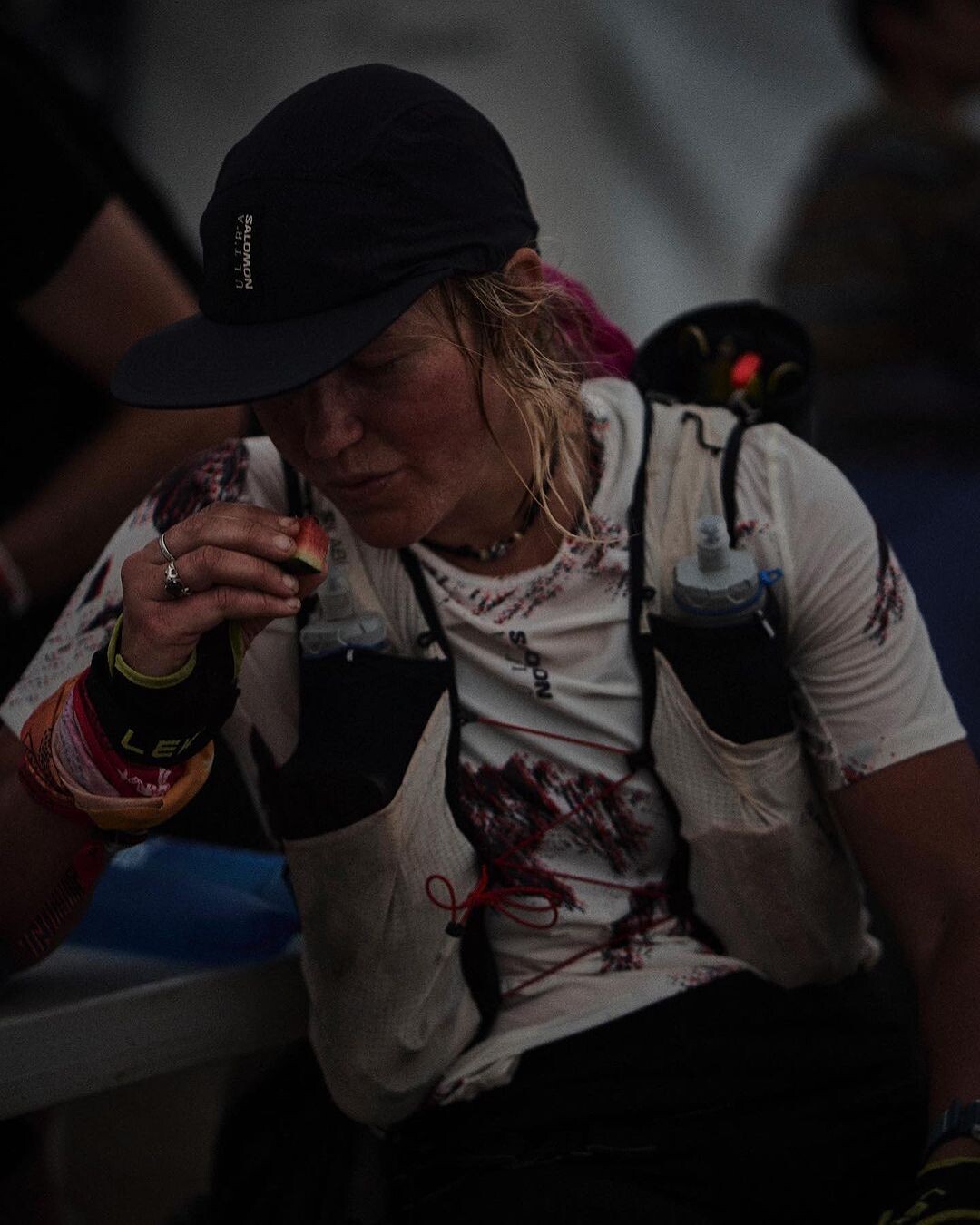
Rainbow rice paper rolls
Ingredients

Rice paper sheetsVeggies cut into strips: carrot, cucumber, roasted sweet potato, kale salad (also could use peppers, snow peas or beetroot)Protein: Bartholomew is vegan, and uses tempeh or tofu, but suggests using meat or fish if you eat itHerbs: mint, Thai basil, coriander, or anything you like
Sauce
2 Tbsp tahini 1 clove garlic, minced
1 tsp turmericBlack pepper to taste
2 tsp apple cider vinegar
1 heaping tsp red misoHot water to thin to your preferred consistency
Directions
Place the rice paper sheets one at a time in hot water for 30 seconds, lay them out, fill them up, roll them up tight and place to the side. Repeat!
Add all the sauce ingredients to a bowl, except the hot water. Add water splash by splash until the sauce is the consistency you want.
“Dip. Eat. Spread. Enjoy,” says Bartholomew.
(09/07/2023) ⚡AMPby Keeley Milne
North Face Ultra Trail du Tour du Mont-Blanc
Mountain race, with numerous passages in high altitude (>2500m), in difficult weather conditions (night, wind, cold, rain or snow), that needs a very good training, adapted equipment and a real capacity of personal autonomy. It is 6:00pm and we are more or less 2300 people sharing the same dream carefully prepared over many months. Despite the incredible difficulty, we feel...
more...B.A.A. Announces Expanded Para Athletics Divisions and Enhanced Prize Money Awards for 2024 Events
The Boston Athletic Association (B.A.A.) today announced plans for an enhanced prize money structure across B.A.A. events in 2024, as well as the introduction of two new Para Athletics Divisions for athletes competing with coordination impairments (T35-T38) and intellectual impairments (T20) as well as more inclusive upper and lower limb impairment divisions. The changes will provide greater financial rewards for athletes across multiple divisions and expanded opportunities for athletes within the Para Athletics Divisions and Wheelchair Divisions.
“We are always looking at ways to celebrate and reward athletic excellence,” said Jack Fleming, B.A.A. President and CEO. “With these changes, we are recognizing top finishers and aspiring athletes in our Wheelchair and Para Athletics Divisions, while also expanding opportunities for new groups of athletes to be recognized and included in our B.A.A. events.”
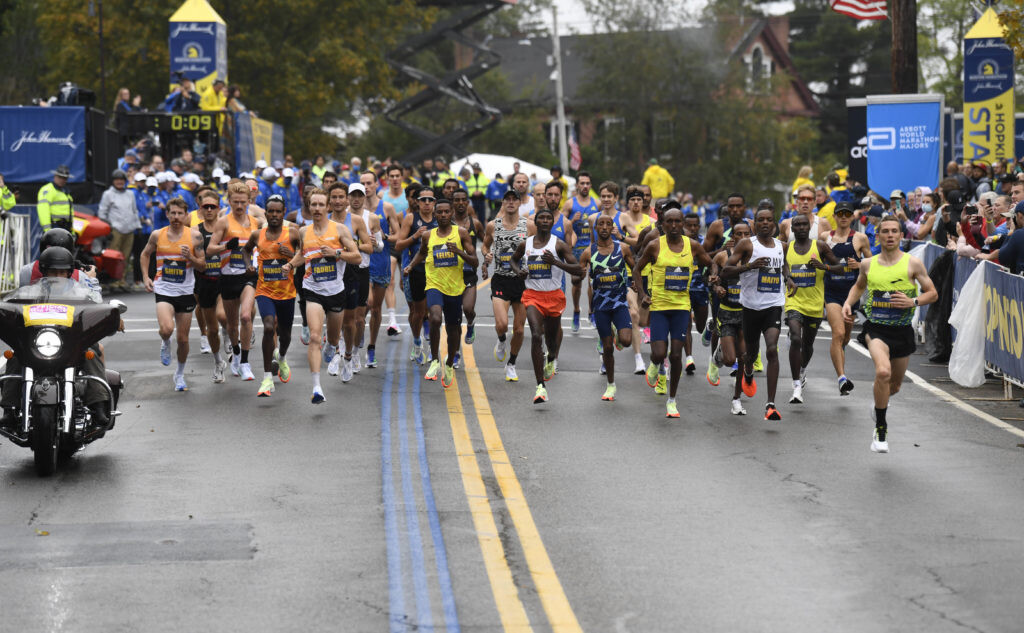
He continued, “Boston is a running city, and we’ve made it our goal to elevate Para athletes as they train and compete for the podium at our events, from the 5K through to the marathon.”
“This creates an enormous positive impact for Para athletes and shows how the B.A.A. is leading the way towards greater inclusivity in sports,” said John Jordan, head of The Academy and executive co-sponsor of the Disability Action Network, Bank of America. “As we look across our involvement in sports around the world, we’re committed to help broaden the possibilities available to athletes competing at all levels.”
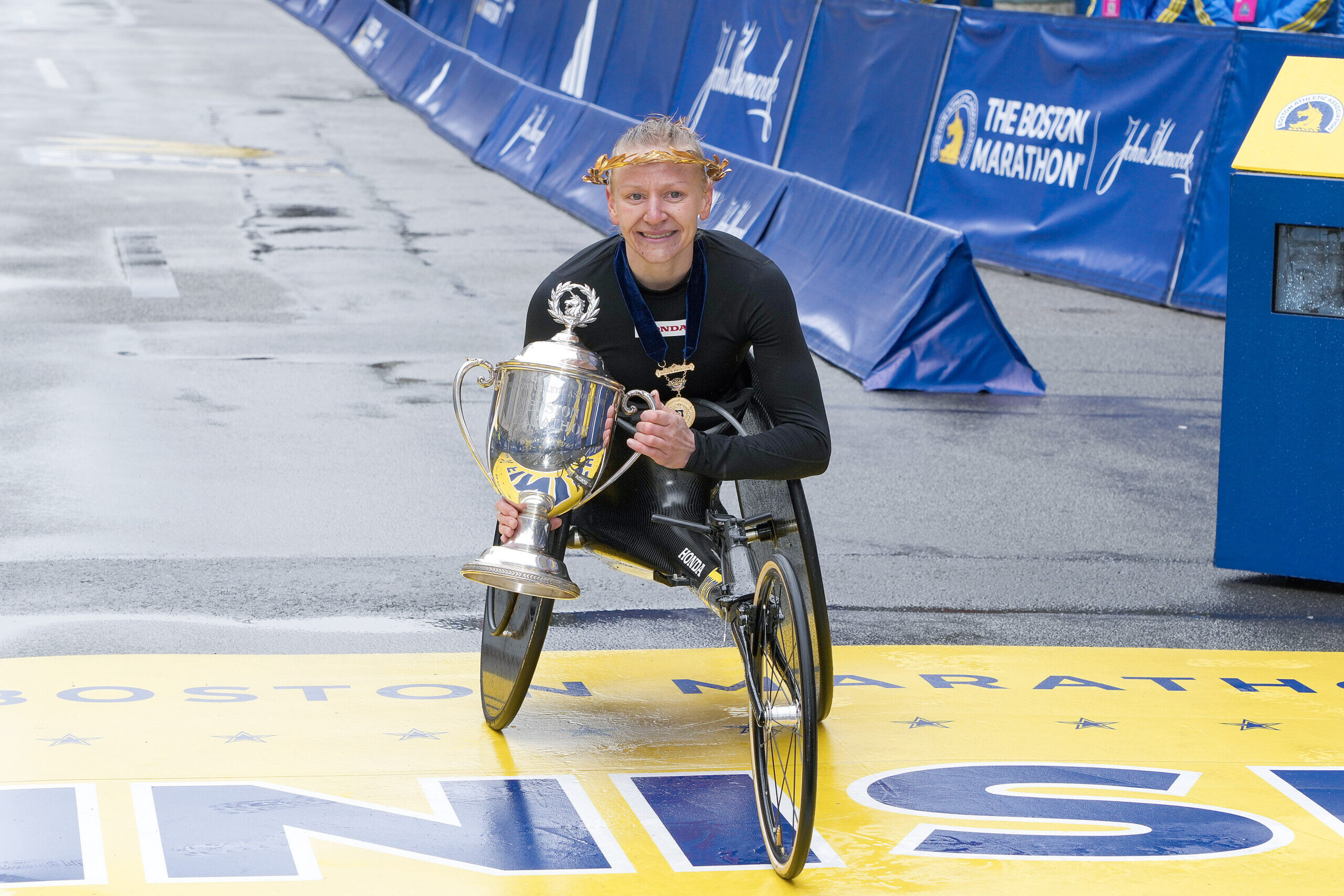
New prize structures highlights:
The Boston Marathon presented by Bank of America will now feature a cumulative prize fund of more than $1 million.
Wheelchair champions [T53/54/34] at the Boston Marathon presented by Bank of America will now receive a first-place prize of $40,000 (increased from $25,000), and places 2-10 will also receive increases in awards compared to recent years. Wheelchair athletes with T51-T52 classifications will receive awards for places 1-3.
The total wheelchair prize for 2024 will be $313,500 for men and women (previously $125,000). This includes $50,000 each for a course record (equal to the Open course record award)
The top three finishers in all seven Para Athletics Divisions at the Marathon will receive prize money of $2,500; $1,500; $1,000, respectively.
Additional increases in the Wheelchair Division and Para Athletic Division prize money will be offered for the B.A.A. 5K, B.A.A. 10K, and B.A.A. Half Marathon. The B.A.A. Half Marathon will also feature increased open division prize money for podium finishers.
Para and Wheelchair prize money divisions at the Boston Marathon adhere to World Athletics and World Para Athletics rules of competition. Athletes competing in the Para and Wheelchair divisions must be nationally or internationally classified to be eligible.
Overview of new Para Athletic divisions:
Seven Para Athletics Divisions will now be offered at the Boston Marathon presented by Bank of America, with newly established divisions for athletes with coordination impairments [T35-T38 and intellectual impairments [T20].
Additionally, the T61/63 lower limb impairment will now add the T43 classification, and the T62/64 lower limb impairment division will now add T42/T44 classifications.
The seven divisions are an increase from five divisions offered in 2023 (vision [T11/T12, T13], upper-limb [T45/T46], and lower-limb impairments [T61/T63, T62/T64]).
A Para Athletics Division for athletes with coordination impairments will be offered at the B.A.A. Half Marathon, B.A.A. 10K, and B.A.A. 5K from 2024. Each of these events will now feature four Para Athletics Divisions namely vision, upper-limb, lower-limb, and coordination impairments.
Athlete Quotes
Marko Cheseto - Kenyan All-American athlete who holds the world record for a double lower leg amputee in the marathon said, “This increased recognition [from the B.A.A.] gives athletes with disabilities more public attention, and we can perform at a higher level given these opportunities.
“Now that we have the world’s oldest marathon leading the way [with prize money for Para divisions] all other marathons should be inclusive. It's about diversifying the sport and creating more avenues for people with disabilities to compete, so we continue to grow the sport for future generations.”
Daniel Romanchuk, US Paralympian and two-time Boston Marathon winner said, “The B.A.A. has championed the wheelchair division for many decades and continues to build on that tradition by including more Para-athlete divisions, allowing an ever-increasing number of athletes to compete.
“Increased prize money makes it possible for emerging athletes to attend elite-level races as well as helping them afford the costly equipment and repairs that are necessary to compete in Para-athletics. The B.A.A. is continually finding ways to elevate the sport, and it's incredibly exciting to imagine the future of Para-athletics!”
Reigning Boston Marathon Champion, and multi-World and Paralympic Champion from Switzerland, Marcel Hug said, “To see how the sport of wheelchair racing has developed in recent years is very gratifying and it is also a credit to the Boston Athletic Association. It is not only about the financial support which enables us to train and compete at a higher level, but it is also about the increased recognition and inclusion of Para-sports.
“As top athletes we try to perform at our best and inspire other people with or without disabilities so the support of the B.A.A. and the entire Abbott World Marathon Major series is more than just rewarding top performing athletes, it shows that we are an equal part of society.”
Tatyana McFadden, 21-time Abbott World Marathon Major winner from America said,“I’m proud to see how far we have come. I’m thankful for past, and for current athletes who have raised their voices to help create change. Change takes more than just one person, it takes a village, and takes people who believe in us. The B.A.A. has been part of that, so I am very thankful.
“The prize money is so important to support the elite Para divisions. The more support, visibility and education we can bring to the sport, the better it can be for all the athletes.”
Susannah Scaroni, Paralympic Gold medalist and the 2023 Boston Marathon Champion from America said, “The legacy of the Boston Marathon and its support of the wheelchair division has impacted me in so many ways.
“As a person with a disability, the legacy of the original 1970 wheelchair athletes has enabled myself and all other Para-athletes of my generation to perceive ourselves and to be perceived publicly, as professional athletes. I cannot express how much this has meant for all of us.
“The provision of prize money indicated that the B.A.A. truly recognized that wheelchair racers are elite athletes, and this support has enabled the sport to grow and improve and subsequently gives more people with disabilities exposure to role models.”
Liz Willis, Paralympian and three-time Boston Marathon Para Champion said, “The support of the B.A.A. for Para divisions is vital to expanding the Para movement. Just as the Boston Marathon was the first Abbott World Marathon Major to open the doors of possibility for women, they are doing the same for amputees and visually impaired athletes.
"It takes time and recognition to build a program, and the B.A.A. is the ONLY reason I currently run marathons. The Boston Marathon allows others to see their impossible become possible. It has forever impacted my life by breaking down the walls of discrimination and providing pathways for all to push their limits of what's possible.”
(09/07/2023) ⚡AMPby B.A.A. Communications Department
B.A.A. Half Marathon
Dana-Farber and the Jimmy Fund have partnered with the B.A.A. in the Half Marathon for 13 years as the race’s presenting sponsor. Through this relationship, team members have collectively raised more than $5 million to support groundbreaking cancer research, and enabled Dana-Farber scientists and clinicians to positively impact the lives of cancer patients around the world. Dana-Farber runners often participate...
more...Brimin Misoi faces stern test Frankfurt Marathon title defence
Frankfurt Marathon champion Brimim Misoi faces a stern test as he seeks to defend his crown in the German city on October 29.
Misoi clocked to win the event 2:06:11 last year and is relishing the challenge of retaining the crown at the end of next month. “I have been training for the past two months I know the field is quite competitive but I am confident I can defend my title," said Misoi.
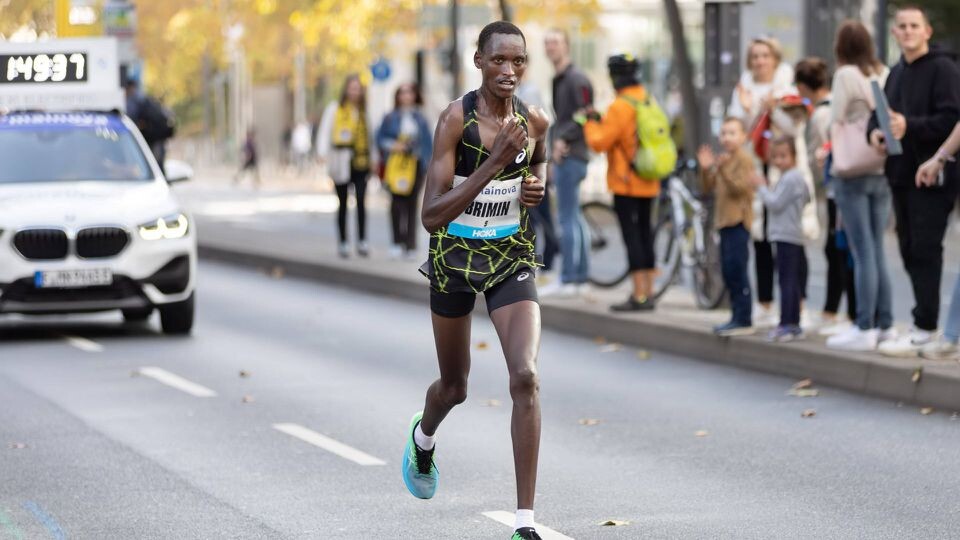
Misoi clocked to win the event 2:06:11 last year and is relishing the challenge of retaining the crown at the end of next month.
“I have been training for the past two months I know the field is quite competitive but I am confident I can defend my title," said Misoi.
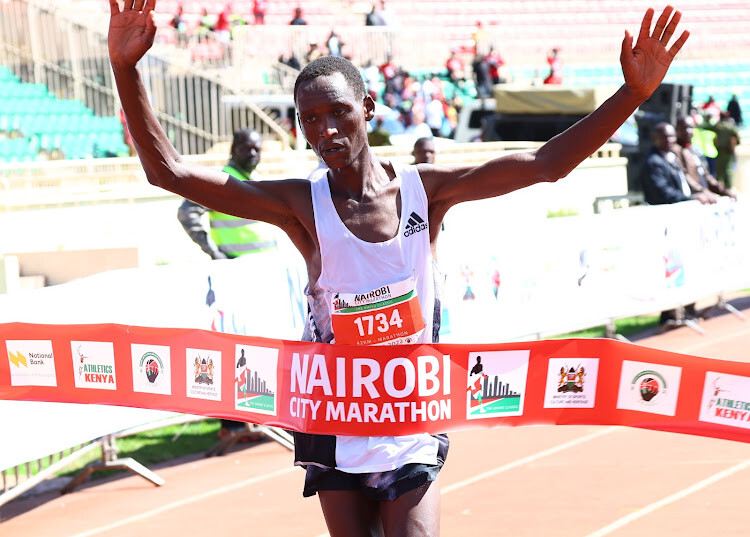
Both will have to keep a sharp eye on Buzunesh Gudeta. The Ethiopian finished fourth in Barcelona in 2:22:38 in March.
Another athlete to note is the European silver medallist in the marathon, Matea Parlov Kostro. The Croat has a personal best 2:25:45 clocked while winning the Hanover Marathon in March.
(09/07/2023) ⚡AMPby William Njuguna
Mainova Frankfurt Marathon
Frankfurt is an unexpectedly traditional and charming city, with half-timbered buildings huddled in its quaint medieval Altstadt (old city), cosy apple wine taverns serving hearty regional food, village-like neighbourhoods filled with outdoor cafes, boutiques and street art, and beautiful parks, gardens and riverside paths. The city's cache of museums is second in Germany only to Berlin’s, and its nightlife...
more...Workouts to crush your fall half marathon goals
If you have never tried a fall race, now’s the time: crisp leaves underfoot and cooler temperatures make for an entirely unique and fun alternative to summer racing. There are always some half marathons to jump into in the fall, and if you’re looking to boost your time, add one of these workouts to your repertoire.
Long tempo workout
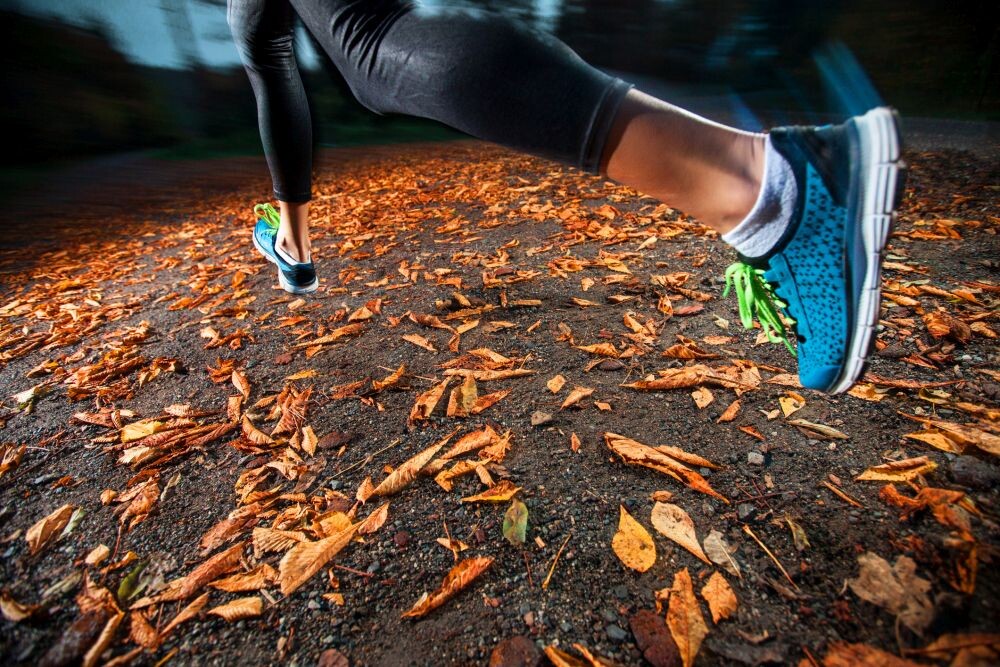
Tempo runs are always a great bet for half marathon training–you’re focusing on improving your lactate threshold and nailing that race-pace endurance.
Warm up with 10-15 minutes of easy running.

Run at a comfortably hard pace (around your half marathon race pace) for the middle portion of your long run, gradually increasing the duration over time. Aim for 30-60 minutes at this pace.
Cool down with 10-15 minutes easy running.
Tempo repeats workout
Warm up with 10-15 minutes of easy running, followed by a few sets of strides.
Run 6 x 6 minutes at just slightly faster than your goal pace (think 105 per cent), with 3 minutes of easy recovery between intervals.
Cool down with 10-15 minutes easy running.
Progressive long run
The progressive long run will help you build confidence (and endurance) for race day. You’ll master the art of running just that little bit more when your legs are begging you to quit, and you’ll maybe even be able to muster a finishing kick.
Begin your long run at a pace much slower than your half-marathon goal pace. Gradually increase your pace every 5-6 kilometers (depending on the total distance you’re running) so that you finish the last 5 kilometers at, or slightly faster than, your goal race pace.
For example, if your half-marathon goal pace is 5 minutes per kilometer, start your long run at 6-6:30 min/km and progressively increase until you’re running at 5-5:15 min/km for the final stretch.
Remember to follow a speedwork or harder session with a recovery day or easy running.
(09/07/2023) ⚡AMPby Keeley Milne
Peres Jepchirchir using Great North Run to fine tune for New York City Marathon
Reigning Olympic champion Peres Jepchirchir will be competing at the Great North Run on Sunday September 10, as she gets ready to reclaim her New York City Marathon title on Sunday, November 5.
Jepchirchir missed out on last year’s event due to a hip injury but she has now recovered and will be ready to fight and reclaim her title.
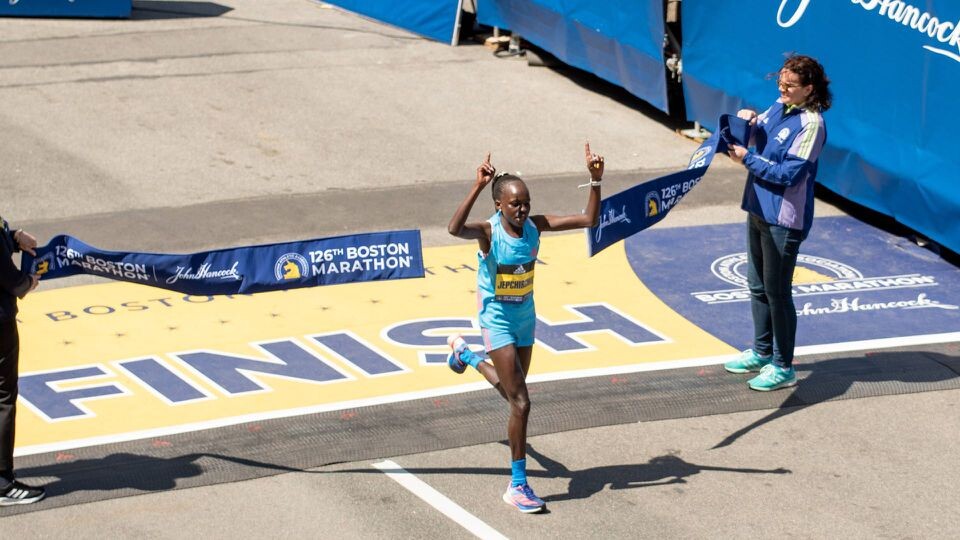
She opened her season with a third-place finish at the London Marathon. The 2021 Boston Marathon champion also finished second behind Hellen Obiri at the Great Manchester Run.
The Great North Run will be a perfect place for Jepchirchir to test out her form ahead of the do-or-die assignment.

In a previous interview with New York City Marathon race organizers, Jepchirchir said: “I was so disappointed that I couldn’t defend my title in New York last year due to an injury, and winning again in Central Park has been my main motivation as I begin my preparations for the autumn.
"New York is an important step in defending my Olympic gold medal next summer in Paris, and I will do my best to make my family and my country proud.”
But before the New York City Marathon, she will face tough opposition at the Great North Run where she finished second last year.
She will be up against compatriot Sharon Lokedi who will also be competing at the New York City Marathon. Ethiopia’s Tirunesh Dibaba and Great Britain’s Charlie Purdue will also be in action at the event.
(09/06/2023) ⚡AMPby Abigael Wafula
Great North Run
Great North Run founder Brendan Foster believes Britain is ready to welcome the world with open arms after the launch of the event's most ambitious plan to date. The Great World Run campaign seeks to recruit one runner from every country in the United Nations – 193 in total – to take part in the iconic half marathon in...
more...Camille Herron’s tips to run long and strong
Ultrarunning champion Camille Herron is not only known for crushing some remarkable world records but also for being the youngest person (she’s 41) to be inducted into the 100,000 Lifetime Miles Club (which she was in 2022). The prolific runner has now surpassed 107,000 miles, and stayed healthy and strong while doing so–in the past year alone, she destroyed the world record for 48 hours of running, covering 435.336 kilometers (270.5 miles) around a 400-metre track in Bruce, Australia.
Herron shared some fantastic tips with Canadian Running to keep both body and mind in peak form as you run for decades to come. Her tips are applicable to everyone, whether you are a beginner or already have years of running to build on.
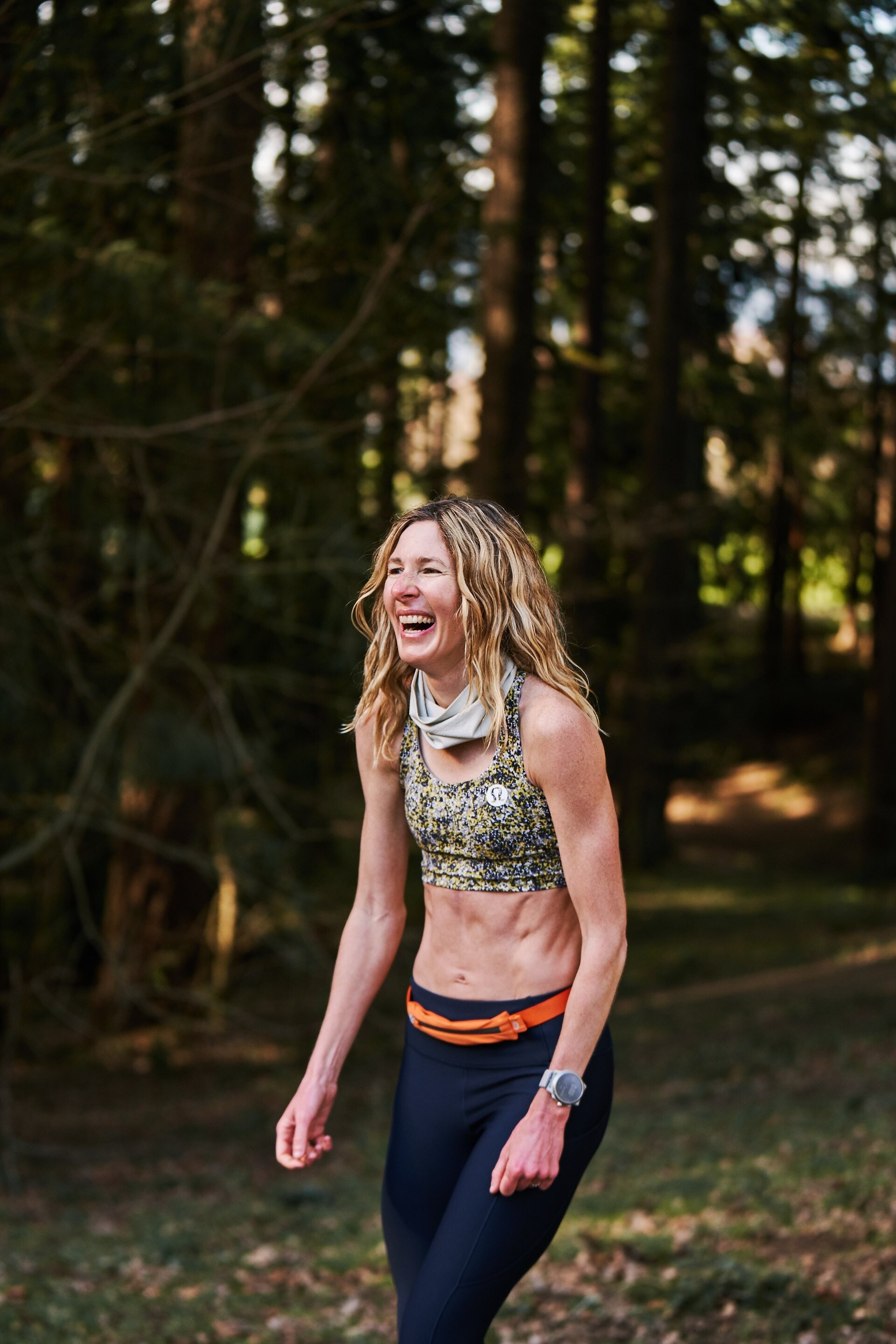
Have a support system
If you plan on running for many years, it’s essential to have some kind of community to help you through struggles, as well as celebrating the good times. Surrounding yourself with positive influences, from your local running groups to online training forums, can be a huge help.
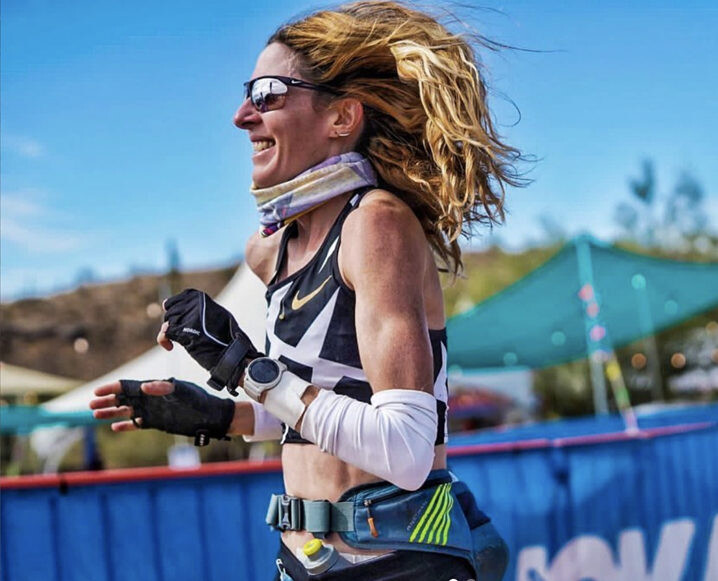
Whether you love to log your mileage alone or enjoy a club atmosphere, it can be helpful to have some people you can count on for support. Herron says “great support and guidance from my husband/coach, sponsors, and everyone around me,” has helped her accomplish her goals.
Keep easy runs easy
Herron explains that she has learned to slow down the pace on easy runs. “I run at 60-70 per cent of heart rate max on easy runs,” she says. If you’ve checked out Herron’s social media, you’ve probably noticed that she always looks like she’s having a blast. She stops to photograph animals and unusual foliage as she runs, and pauses to snack on berries on the trail, taking time to enjoy the process.
Try running twice a day instead of loading your legs all at once
Herron, who has a background in exercise science, often runs twice a day rather than doing a single big training run. She explains that running twice a day is “healthier and more anabolic for musculoskeletal health than long single bouts, and helps maximize aerobic metabolism.” If you’re hoping to add mileage without causing injury, dividing up those runs may be key.
Stay adaptable
Herron says she notices what her body is feeling on any given day or at any point in her life, and is prepared to work with her body and the day in order to stay balanced. “Our bodies change,” she says. “Like right now, I’m a master’s runner and experiencing perimenopause symptoms.” Herron says she stopped taking her longtime oral contraceptive and has focused on stress management to adapt to the changes in her body, and feels immensely better.
Switch up your training to stress your body differently
“I train my body in a variety of ways, with different surfaces, intensities and shoes,” explains Herron. She also participates in both ultrarunning on road or track and trail running. “I’ve raced 400m-48hrs, and I enjoy stepping up, down, and over all types of running,” she says. “It’s all fun and challenging in its own way.”
(09/06/2023) ⚡AMPby Keeley Milne
Sharon Kemboi looking to prove herself at TCS Toronto Waterfront Marathon
Sharon Kemboi might not be well known on the world athletics stage at the moment but there’s a solid chance the Kenyan will have a major impact on the TCS Toronto Waterfront Marathon on October 15.
For a start, the 30-year-old Asics athlete from the town of Iten raced only in Kenya until 2022. And she has only one marathon race to her credit winning the 2022 Kobe Marathon in Japan last November in a time of 2:29:13. That saw her end the year as the 241st fastest woman of the year, hardly a world beater. Yet, to dismiss her as a contender in this World Athletics Elite Label race would be foolish.
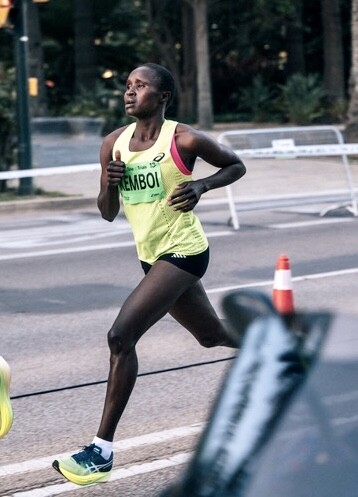
Last year Kemboi ran two world-class half marathons in Spain finishing second both times. Her personal best of 1:07:28 in Madrid followed by a strong 1:08:08 clocking two weeks later in Malaga indicates a time on Toronto Waterfront’s fast course nearer 2:22 is possible. The course record remains 2:22:16 by Magdalyne Masai – also from Kenya – set in 2019.
“The Kobe marathon course was a hard course, it is not easy. The course is so hard,” Kemboi says during a video call from her home in Iten. “I will try to run 2:25 or faster in Toronto. I want to run my personal best.
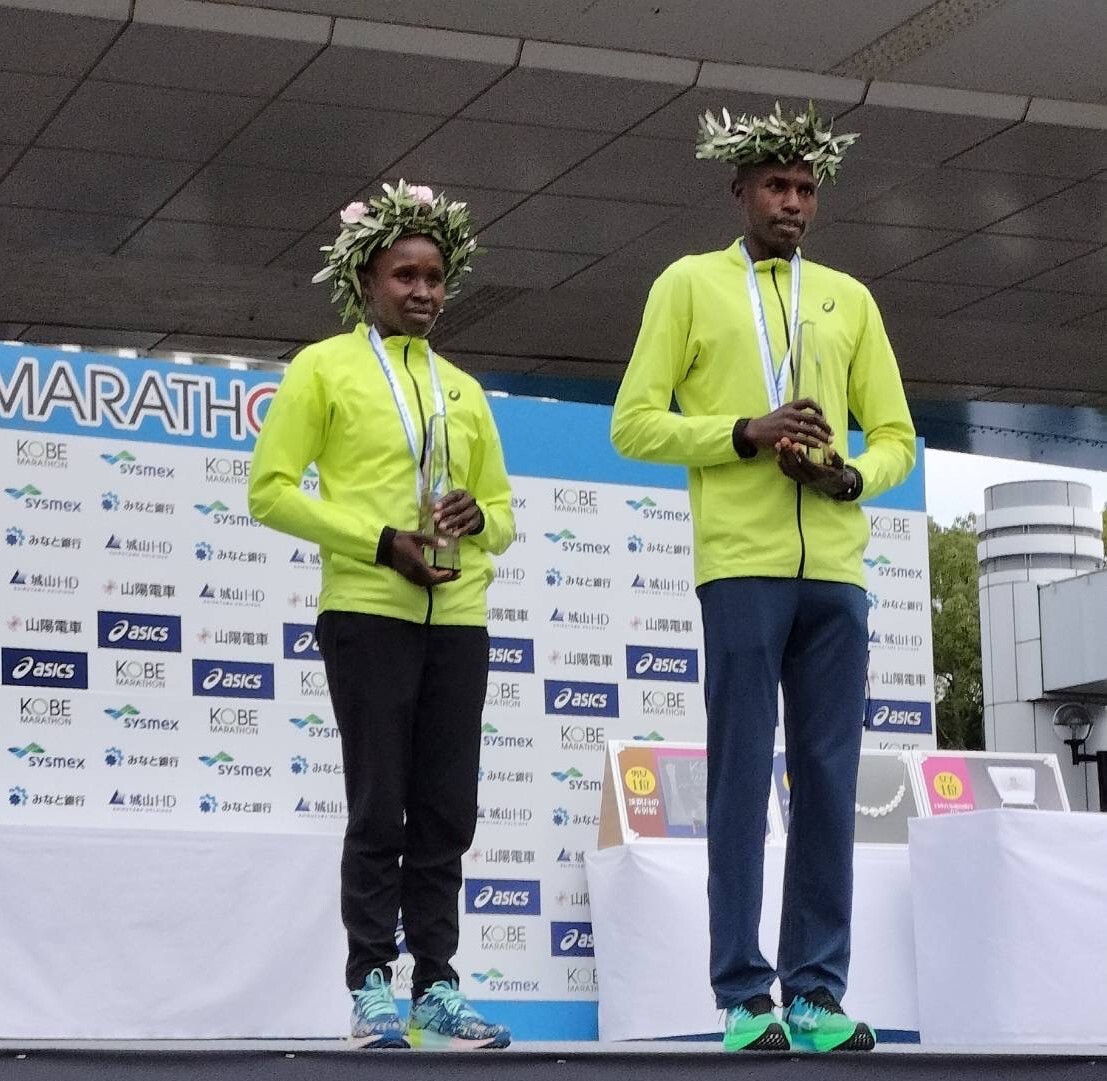
“I am training with Antonina Kwambai. She won last year in Toronto (2:23:20). She told me about Toronto and also I used to watch the Toronto races on YouTube. She told me the course is not so hard and she said she really enjoyed it.”
A few hours prior to her overseas video call Kemboi and Kwambai along with their training partners, Immaculate Chemuta, who is a Ugandan training in Kenya, and Gladys Chepkurui, had run a 30 kilometres time trail paced by three male pacemakers and under the watchful eye of coach Thomas Portzinger. The Austrian native has worked with Kemboi for close to three years now and with Kwamboi for nearer seven. Pacemakers are often employed for special sessions. Training for Toronto Waterfront is progressing well.
Clearly, she is taking her running seriously now after showing promise as a high school runner at Chepkongony Church of Christ Secondary School near Eldoret.
“When I ran in high school I ran at the national level in the 5,000m and 10,000m. And then I got married and had two kids. Then I started training again,” she offers.
“I wanted to be like (2016 Olympic 5000m champion) Vivian Cheruiyot when I was in high school. I did not meet her but I used to watch the races she ran. I watched her Olympic races on YouTube.”
It was during her time at high school that she met her husband Lawrence Kemboi Kipsang who attended a boy’s school in Marakwet which is very close to her home village of Kendur.
A world-class 3,000m steeplechaser, he has a best time of 8:11.26 in the event. In 2022 he was a much sought after pacemaker on the European circuit and helped Ethiopia’s Lamecha Girma beat the world 3,000m steeplechase record at the Paris Diamond League meet. The husband and wife will occasionally run together.
“We have a house helper who watches our children when we go training,” she reveals. “They are 7 and 4 and their names are Adele Jelegat and Adriana Jerop.”
Unlike many other Kenyan distance runners, she does not stay in a training camp but instead meets up for training sessions in Iten with her mates. The town of Iten is well known as a haven for distance runners from many nations. With a balance in training and family life Kemboi is very content with her fortunes.
Once again TCS Toronto Waterfront Marathon is a World Athletics Elite Label race meaning the competition she will face is sure to be of the highest standard. Kemboi welcomes the challenge. This, after all, will be her opportunity to continue her successful transition from the half marathon to the marathon and shine on the world stage.
(09/06/2023) ⚡AMPby Paul Gains
TCS Toronto Waterfront Marathon
The Scotiabank Toronto Waterfront Marathon, Half-Marathon & 5k Run / Walk is organized by Canada Running Series Inc., organizers of the Canada Running Series, "A selection of Canada's best runs!" Canada Running Series annually organizes eight events in Montreal, Toronto and Vancouver that vary in distance from the 5k to the marathon. The Scotiabank Toronto Waterfront Marathon and Half-Marathon are...
more...Sha’Carri Richardson, Noah Lyles ready to blaze track at 2023 Prefontaine Classic
The 2023 Prefontaine Classic will feature star sprinters Sha'Carri Richardson and Noah Lyles competing in the 100-meter races.
Two sprinters who have been setting the world of athletics ablaze in 2023, Sha’Carri Richardson and Noah Lyles, are poised to ignite the track in their respective 100m races at this year's highly anticipated Prefontaine Classic.
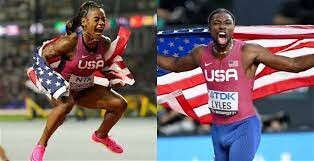
This electrifying event, which doubles as the Wanda Eugene Diamond League Final, will take place on Saturday, September 16, in the iconic city of Eugene, Oregon.
Sha’Carri Richardson, fresh off her remarkable triumph at the 2023 Toyota USATF Outdoor Championships where she secured the 100m title, declared confidently, "I’m not back. I’m better."
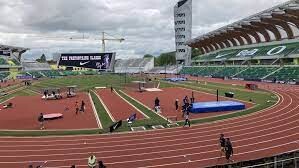
Richardson, who has been making waves both on and off the track, continued to showcase her undeniable talent by clinching gold in the 100m and 4x100m relay, as well as a bronze in the 200m at the 2023 World Athletics Championships in Budapest.
With two World Championship titles under her belt, Richardson is now poised to extend her reign of success at the upcoming Prefontaine Classic.
On the other side of the sprinting spectrum, Noah Lyles is a force to be reckoned with. Fresh from a sensational performance at the World Athletics Championships, where he clinched gold medals in the 100m , 200m, and 4x100m relay events, Lyles is now setting his sights on a new accolade.
While he has already amassed four Wanda Diamond League Champion trophies in the 200m category, spanning the years 2017, 2018, 2019, and 2022, Lyles is hungry for his first-ever 100m title at the Diamond League Final.
His wind-legal personal best of 9.83 seconds this season has earned him the coveted top spot in the global rankings for the event, making him a formidable contender in the world of sprinting.
Fans can expect an evening of high-speed drama, record-breaking potential, and nail-biting competition as Richardson and Lyles go head to head in the 100-meter races.
The Prefontaine Classic is scheduled to kick off at 9:00 PM East Africa time on Saturday September 16.
(09/06/2023) ⚡AMPby Festus Chuma
Prefontaine Classic
The Pre Classic, part of the Diamond League series of international meets featuring Olympic-level athletes, is scheduled to be held at the new Hayward Field in Eugene. The Prefontaine Classicis the longest-running outdoor invitational track & field meet in America and is part of the elite Wanda Diamond League of meets held worldwide annually. The Pre Classic’s results score has...
more...Josh Kerr, Elle St. Pierre, and Nikki Hiltz to Headline Professional Athlete Field at New Balance 5th Avenue Mile
World champion Josh Kerr, U.S. Olympian Elle St. Pierre, and American mile record-holder Nikki Hiltz will headline a world-class professional athlete field that spans 14 different countries at the New Balance 5th Avenue Mile on Sunday, September 10. The New Balance 5th Avenue Mile – the world’s most iconic road mile race since 1981 – stretches 20 blocks down Manhattan’s most famous thoroughfare.
Great Britain’s Kerr will arrive in New York fresh off winning a world title in the 1,500 meters in Budapest; he is in search of his first victory on 5th Avenue in his second appearance in the event. Kerr also owns an Olympic bronze medal in the 1,500 meters from the Tokyo 2020 Games.
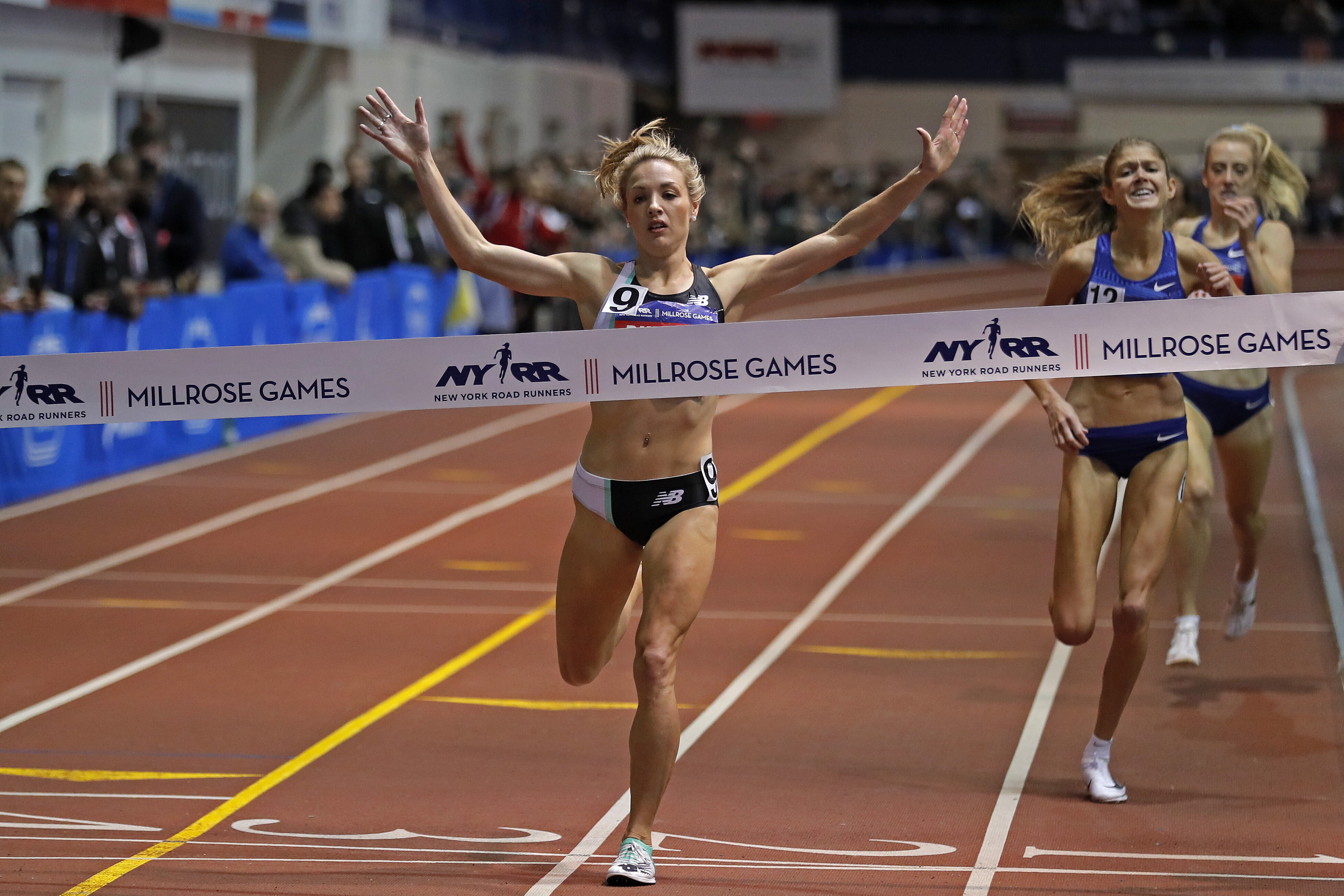
“Winning the World Championships was the culmination of every step of running I’ve ever taken,” Kerr said. “Now, my confidence is higher than it’s ever been, and I have some unfinished business to take care of on 5th Avenue.”
Lining up against Kerr will be New Zealand’s 5,000-meter record-holder George Beamish, and an American contingent led by 2023 Falmouth Mile champion Johnny Gregorek, last year’s 1,500-meter national champion Cooper Teare, two-time 5th Avenue Mile podium finisher Sam Prakel, and U.S. Olympian Woody Kincaid.
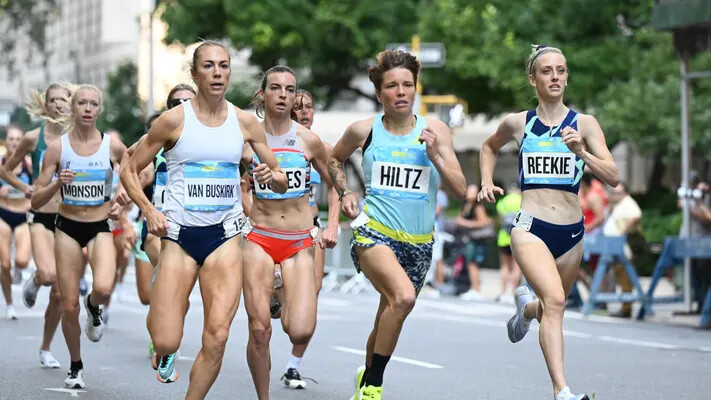
In the women’s race, U.S. Olympian St. Pierre will make her return to New York for the first time since finishing as runner-up at the event in 2019. It will also be her first race back since giving birth in March.
“My preparation for the New Balance 5th Avenue Mile this time has been different, as I fit training around feedings, nap time, and playing with Ivan,” St. Pierre said. “But my body feels good, and the workouts have been solid. I’m excited to be back on 5th Avenue this weekend.”
She will be joined at the start line by Hiltz, Great Britain’s 2021 New Balance 5th Avenue Mile champion Jemma Reekie, Great Britain’s reigning 1,500-meter champion Katie Snowden, Mexican record-holder Laura Galvan, Australian record-holder Jessica Hull, Japanese record-holder Nozomi Tanaka, and Jamaican record-holder Adelle Tracey. Olympian Courtney Frerichs and four-time NCAA champion Dani Jones will also toe the line for the U.S.
In addition to professional athlete and age-group heats, this year’s New Balance 5th Avenue Mile will feature Back to School Mile heats for youth, a New Balance Run Your Way Mile for first-time marathoners using NYRR Coaching Lab, a George Sheehan Memorial Mile for seniors, an NYPD and FDNY heat for service members, and NYRR Road Mile Championship races.
In partnership with NYRR and USA Track & Field, NBC will broadcast the event nationally from 12:00 to 1:00 p.m. ET. The broadcast will feature live coverage of the professional athlete races as well as a recap of the day’s earlier heats. Live coverage of the event will be available internationally on USATF.TV.
(09/05/2023) ⚡AMPNew Balance 5th Avenue Mile
The New Balance 5th Avenue Mile opens a beautiful 20-block stretch of 5th Avenue to runners of all ages and abilities who want to run their best mile in New York City. Special races include a youth mile, the George Sheehan Memorial Mile for runners age 60 and over, the NYRR Road Mile Championships, and Olympic-caliber professional men's and women's...
more...Six meal planning tips for busy runners
Short on time? Here’s how to make sure you always fuel your training well.
Balancing a hectic schedule with your training program can be a challenge, and as kids return to school and the rest of us return to our regular post-summer routines, it’s easy to let your nutrition plan slide. If you’re feeling overwhelmed trying to get meals on the table, try these tips to make things a little easier.

1.- Make a meal plan
Allocate time in your schedule for meal planning and prep. Set aside a few hours each week to plan your meals, create a shopping list, get the groceries (or get them delivered) and prepare some ingredients in advance. This will save you valuable time during the week.

2.- Keep an ongoing list
Do you think of a bunch of items you need to pick up during the week, only to forget what they were on grocery day? Keep a list on your fridge where anyone in the house can add an item once you run out. By the time grocery day arrives, your list will be made for you.
3.- Cook once, eat twice
Why cook for only one meal? Whatever you’re preparing for dinner, make double the amount so you can eat leftovers for lunch the next day, or (if your family isn’t too picky) reheat it for the following night’s dinner.
4.- Cook in batches
This is the next level up. Cook in larger quantities and freeze portions for later. This way, you’ll always have a healthy meal ready to go, even on your busiest days. Soups, stews, and grain bowls are excellent options for batch cooking.
5.- Snack smart
As a runner, you need snacks that provide quick energy. Keep healthy, portable options like nuts, fruit, or energy bars on hand to stave off hunger and maintain energy levels.
6.- Look for healthy convenience items
Let’s face it, even the most dedicated meal prepper sometimes gets caught with no dinner plan. Keep some healthy, pre-made, heat-and-eat options in your freezer for a rainy day, so you’re never stuck staring at your empty fridge.
(09/05/2023) ⚡AMPby Brittany Hambleton
Beatrice Chebet sets lofty target ahead of next year's Paris Olympic Games
Chebet will be making her first appearance at the Olympic Games and she has already set her priorities right.
After closing the World Championships in Budapest, Hungary with a bronze medal in the women’s 5000m, Beatrice Chebet is now plotting a gold medal at next year’s Paris Olympic Games.
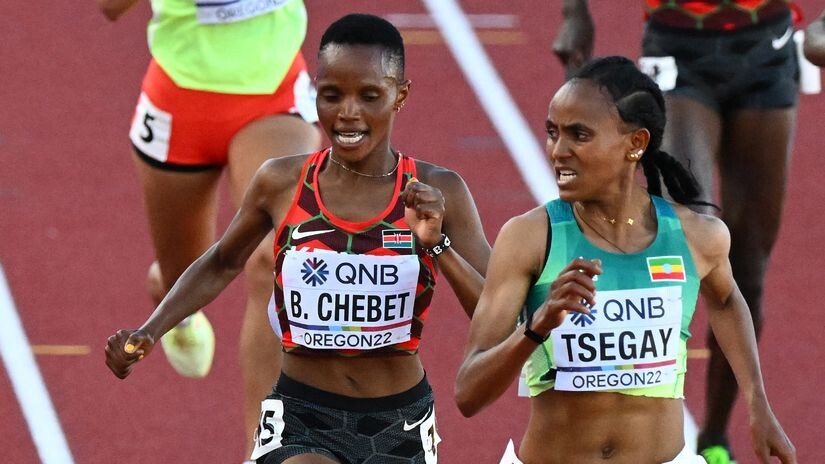
In a post-race interview after setting a world-leading time at the Xiamen Diamond League, she noted that she will be contesting for a gold medal but a podium finish will also be a great thing for her.
“I’m contesting for the gold medal but as long as I finish on the podium I think that will be okay,” she said.
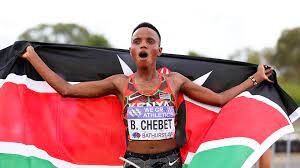
The 23-year-old will be competing alongside compatriot Faith Kipyegon, who is also the current world record holder in the 1500m and 5000m. Kipyegon will be vying to bag double victory in the 1500m and 5000m.
However, before then, Chebet will be seeking to defend her Diamond League Final Trophy when she heads to the Meeting in Eugene, USA.
She won last year’s final which was held in Zurich, Switzerland in style and she will be seeking to bag back-to-back titles.
“I want to finish my season in Eugene, the last Diamond League then maybe I will go for a break then come back for training as I prepare for the Olympics,” Chebet said.
She also reflected on the outing in Budapest, Hungary, and noted that it was not a walk in the park since there were strong athletes on the field. Kipyegon and Dutchwoman Sifan Hassan finished first and second respectively.
“Budapest was not easy because there was a strong field with Faith, Sifan, and the Ethiopians. I’m glad I finished third,” he said.
(09/05/2023) ⚡AMPParis 2024 Olympic Games
For this historic event, the City of Light is thinking big! Visitors will be able to watch events at top sporting venues in Paris and the Paris region, as well as at emblematic monuments in the capital visited by several millions of tourists each year. The promise of exceptional moments to experience in an exceptional setting! A great way to...
more...Sharon Lokedi gearing up to defend her New York City Marathon title
The 2022 New York City Marathon champion Sharon Lokedi is hungry to return to the streets of the Big Apple and defend her title on Sunday, November 5.
As a debutant during last year's edition of the event, Lokedi broke away from the leading pack and sprinted to the finish line to cut the tape in a time of 2:23:23.
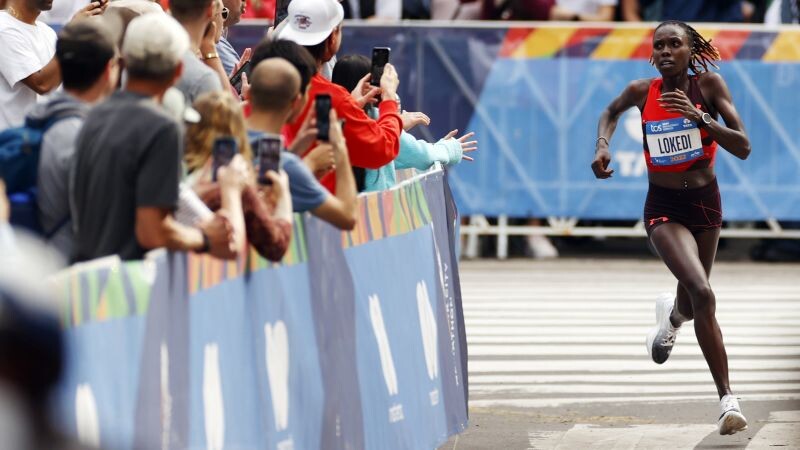
She is plotting a grand return to the streets that gave her a breakthrough in athletics and repeat last year’s remarkable performance.
“Last year, I came into the TCS New York City Marathon with the goal of being in the thick of the race, and the result was better than I could have ever hoped for.
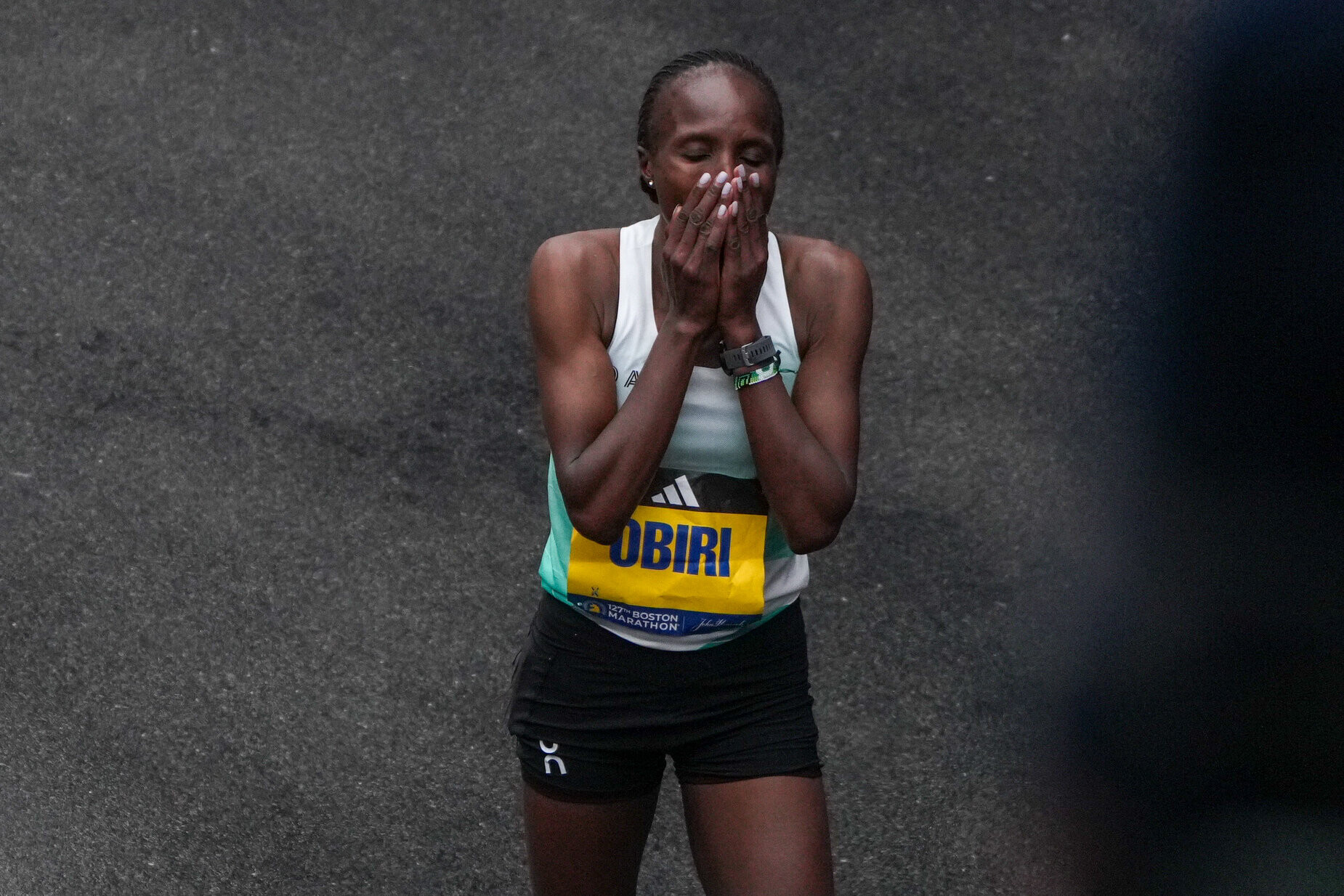
"This year, I’m returning with a different mindset, hungry to defend my title and race against the fastest women in the world,” she said as per the New York City Marathon race organizers.
This year, she intended to open her season at the Boston Marathon but had to pull out due to an injury.
The 29-year-old is yet to compete in any major races so far this year but she is sharpening her talons in preparation for the title defense.
She will not have an easy run since she will be up against some of the greatest marathoners the world has ever witnessed.
Boston Marathon champion Hellen Obiri will be in the race, for the second time after making her marathon debut on the same course last year where she finished sixth.
She has had a great season so far this year, losing only one race out of all the races she has competed in.
Former New York City Marathon champion Peres Jepchirchir will also be in action. She missed out on last year’s event due to an injury but she will be making a return with the hope of reclaiming her title.
(09/05/2023) ⚡AMPby Abigael Wuafula
TCS New York City Marathon
The first New York City Marathon, organized in 1970 by Fred Lebow and Vince Chiappetta, was held entirely in Central Park. Of 127 entrants, only 55 men finished; the sole female entrant dropped out due to illness. Winners were given inexpensive wristwatches and recycled baseball and bowling trophies. The entry fee was $1 and the total event budget...
more...Clayton Young wins 2023 New Haven Road 20K national championship, Emily Sisson wins the women's 20K
The 46th Faxon Law New Haven Road race boasted one of its most impressive fields of runners to date Monday, and it lived up to the hype with a photo finish in the men's 20K national championship race.
Clayton Young was the winner in the 20K, finishing in 59:15, just one second ahead of his training partner and last year's champion, Conner Mantz.

"We both trained in Chicago together, and there was a lot of talk before the race about strategy and what we should do," Young said. "When we were breaking away with about 600 meters to go, I knew I was feeling good and I had a shot, but I also knew that Conner (Mantz) has a deadly kick and he won it last year."
Overall, the road race featured seven Olympians and four past 20K national champions, though this year two new winners were crowned. Emily Sisson won the women's 20K national championship, finishing in 1:06.59.
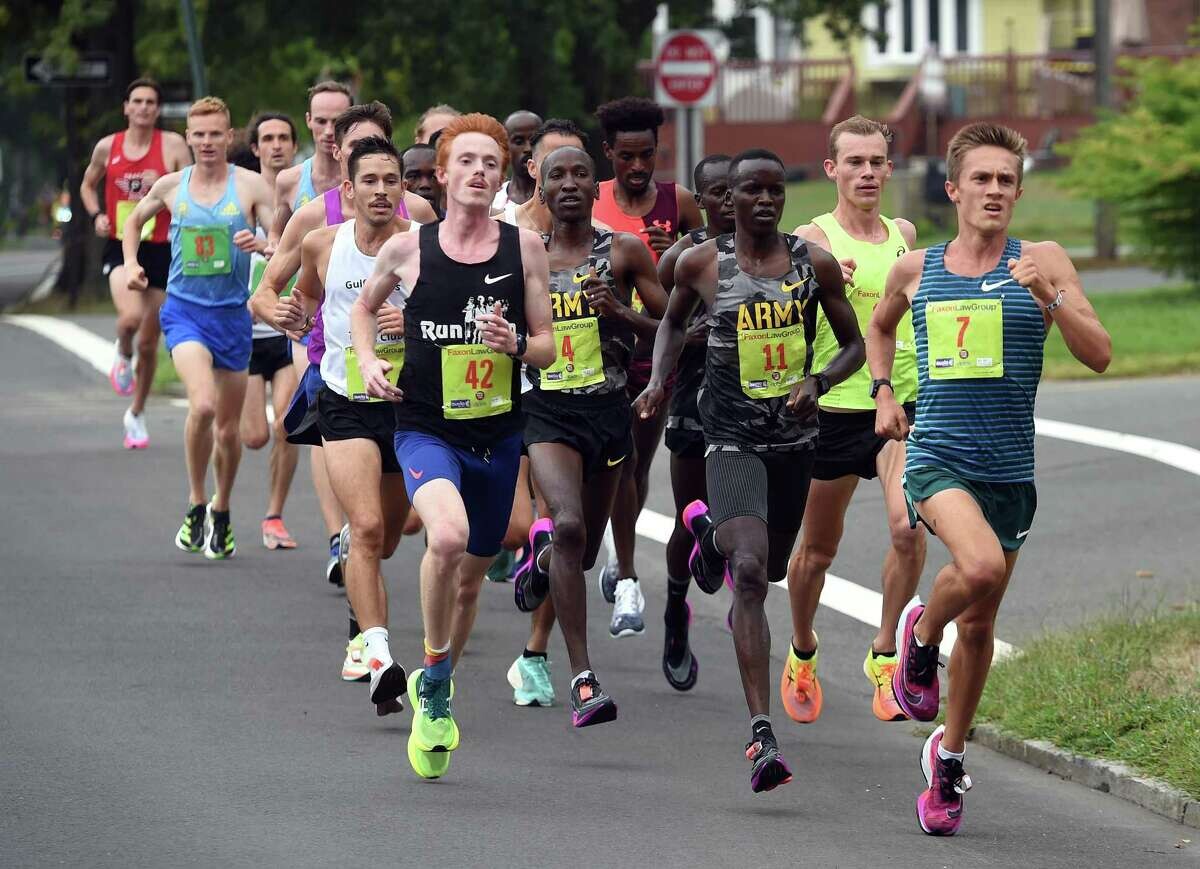
Both runners overcame a confusing segment after the 10 mile mark near East Rock Park as Young started to veer to turn left, leading to Mantz wanting to backtrack.
(09/04/2023) ⚡AMPby Will Aldam
New Haven Road Race
The Faxon Law New Haven Road Race, renowned as the longest-running USATF 20K National Championship, is scheduled for Monday, September 1, 2025 (Labor Day), in New Haven, Connecticut. This event will once again host the Men's and Women's USATF 20K National Championships, attracting elite athletes, including past champions and U.S. Olympians. Participants can choose from various race options, including the...
more...Sir Mo Farah finishes fourth on farewell to London racing at Big Half
Sir Mo Farah bade farewell to racing in London after finishing fourth in his penultimate race at the Big Half on Sunday.
Farah’s last results saw him finish eighth in the Great Manchester Run 10K in May and ninth in the London Marathon the previous month.
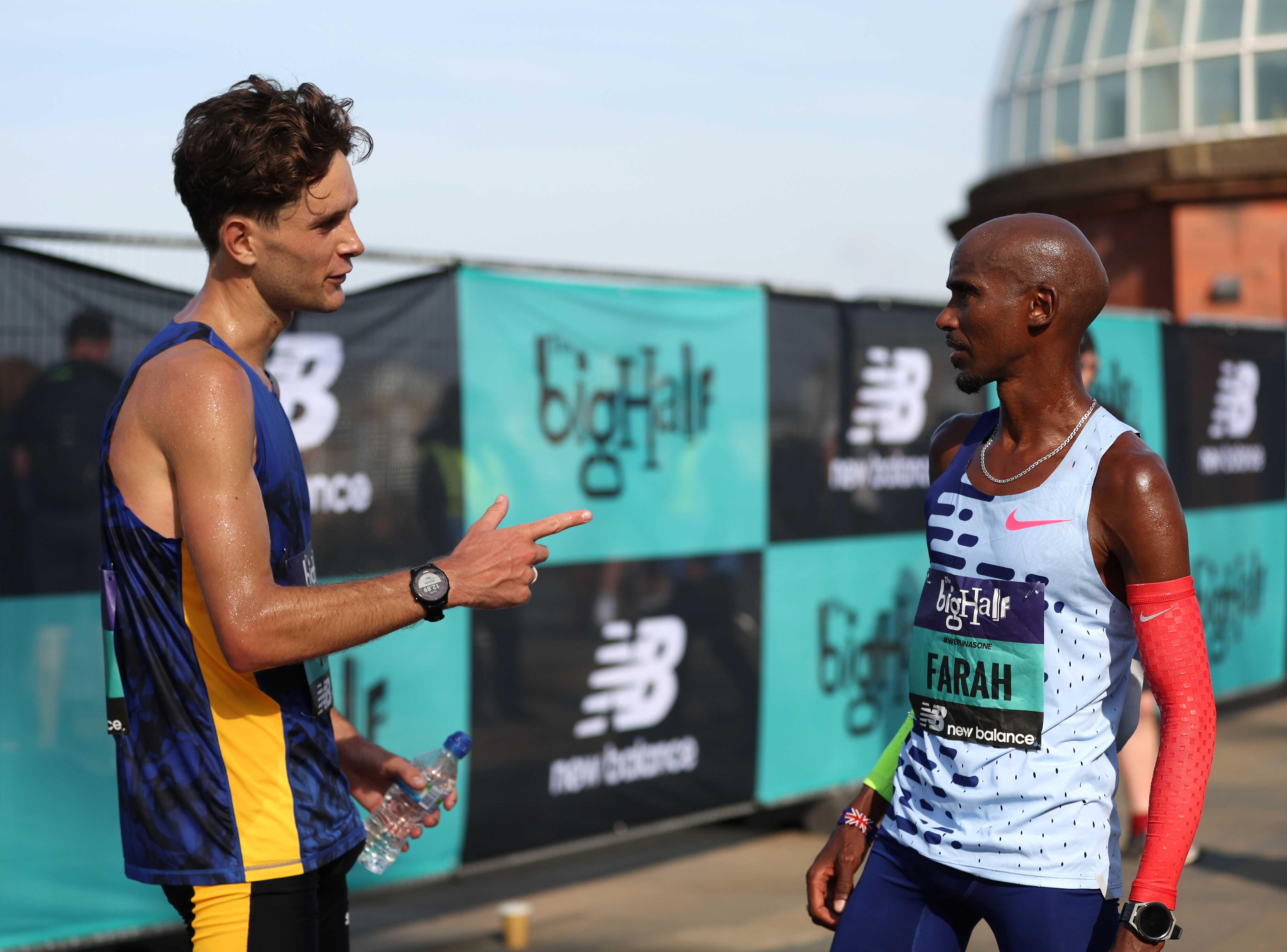
The Big Half was Farah’s last race in London, with the final race of his career taking place at the Great North Run on Tyneside next weekend.
Jack Rowe came first in the elite men’s race with a time of 01:01:08, narrowly edging out fellow Briton Mahamed Mahamed who finished in 01:01:16.
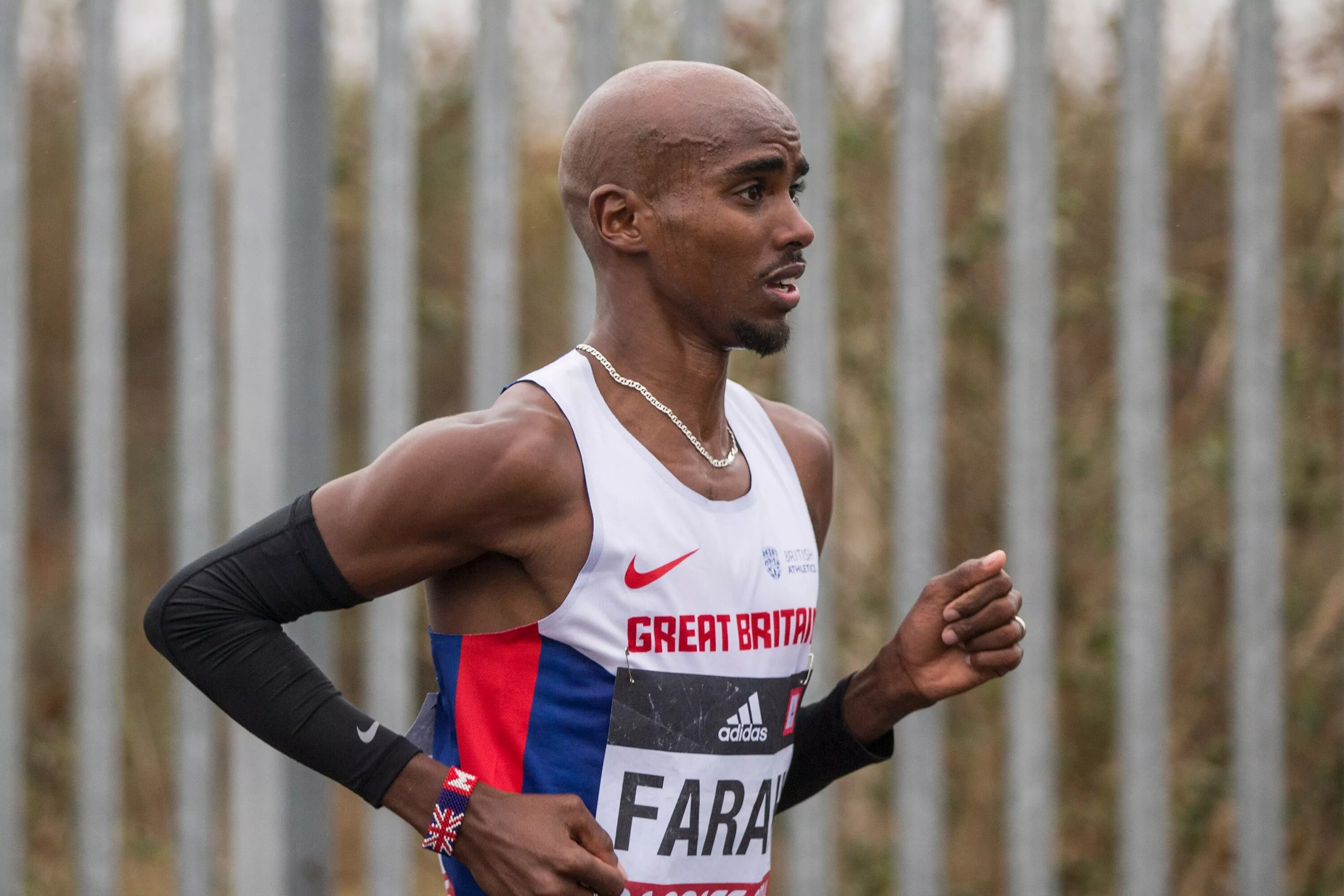
Andrew Butchart was next to cross the line before Farah finished with a time of 01:02:43.
Calli Thackery finished first in the women’s elite race, with David Weir earning the top spot in the wheelchair race.
Farah reflected on an “emotional” day as his career approaches its end next Sunday.
He told BBC Sport: “It was quite emotional today because I haven’t been feeling well this week, I’ve got a bit of a cold.
“I didn’t know if I could do the race, then I was thinking about all the people coming out here and I’m not going to get another chance.
“I came out today, gave it my best but you can’t take anything away from Jack, he’s been working hard for the last three years and he’s deserved that win.
“It’s just nice to see youngsters coming along, grabbing that chance and believing in themselves.
“As I said, when you’ve achieved everything it must come to an end at some point. I’m getting on a bit and I’m kind of just looking forward to taking a break and hopefully being involved in sports, but just spending time with my family.
“Honestly, without the crowd and support I’ve had over the years it wouldn’t be the same.”
(09/04/2023) ⚡AMPThe Vitality Big Half
Created by London Marathon Events Ltd, in partnership with Sported,The Vitality Big Half is a community running festival, taking place in London in March. This one-day event offers a host of running distances, from a challenging half marathon to a free one-mile course, as well as a family-friendly festival of food, music and activities. What’s happening? Take part with friends...
more...Great North Run men's elite runners in full
Elite field of 50 runners includes half-marathon world champion Geoffrey Kamworor, making his Great North Run debut, and 5,000-meter world champ Muktar Edris - who named his son after Sir Mo.
With just days to go before the world-famous Great North Run kicks off from Newcastle, organizers have revealed the full line-up of the elite male athletes from around the world who are set to lead the way.
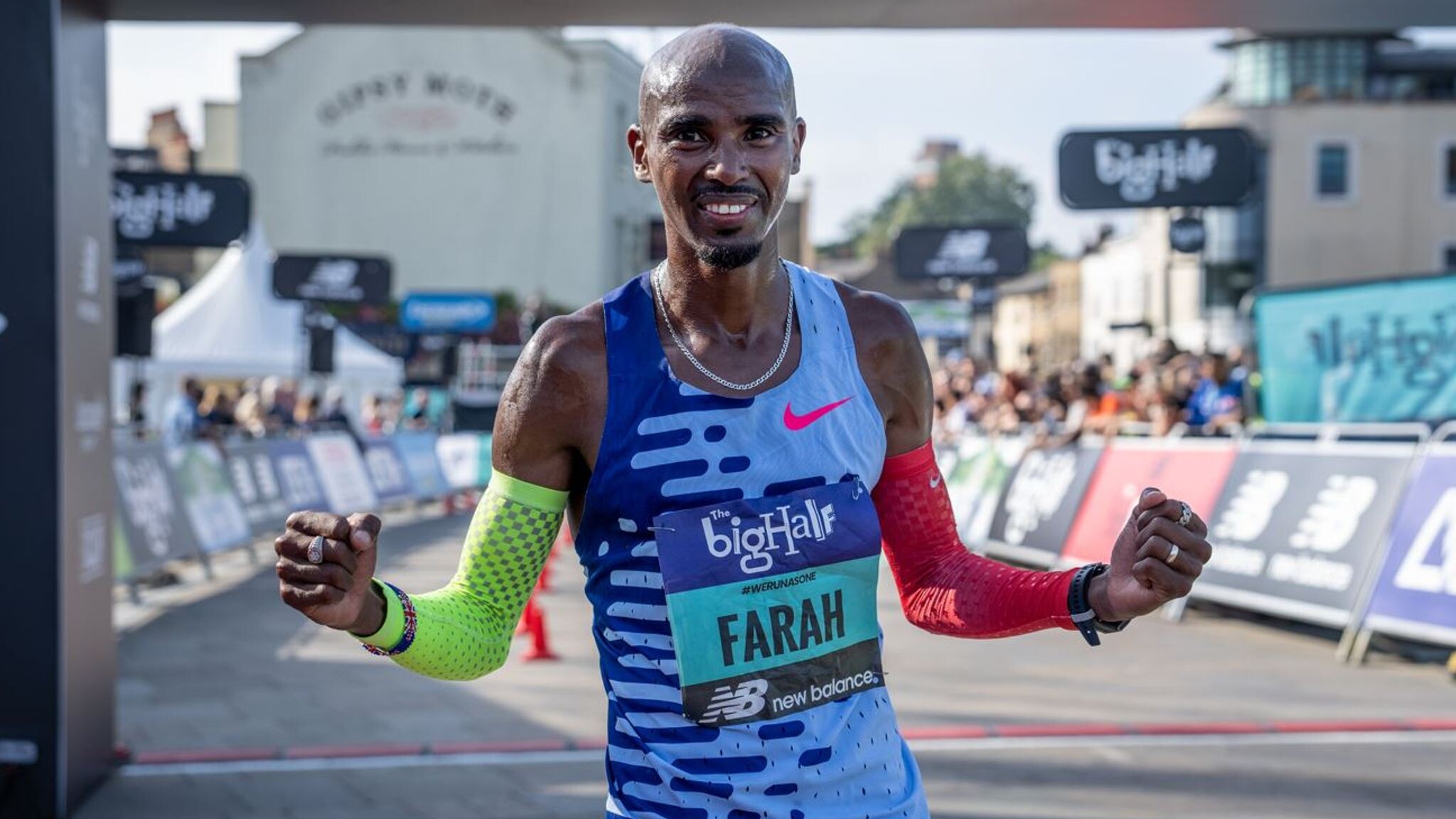
Among the top runners on September 10 will be Sir Mo Farah taking part in his last-ever competitive event. And it's set to prove an emotional occasion for the four-time Olympic gold medalist and six-time World Champion who has won the Great North Run six times.
Sir Mo, who also will be out supporting young runners at Super Saturday events the day before the half-marathon, will be retiring from professional competition once its complete. He said: "It will definitely be emotional but I’m so happy to have the opportunity to celebrate the end of my professional career on that famous finish line.”
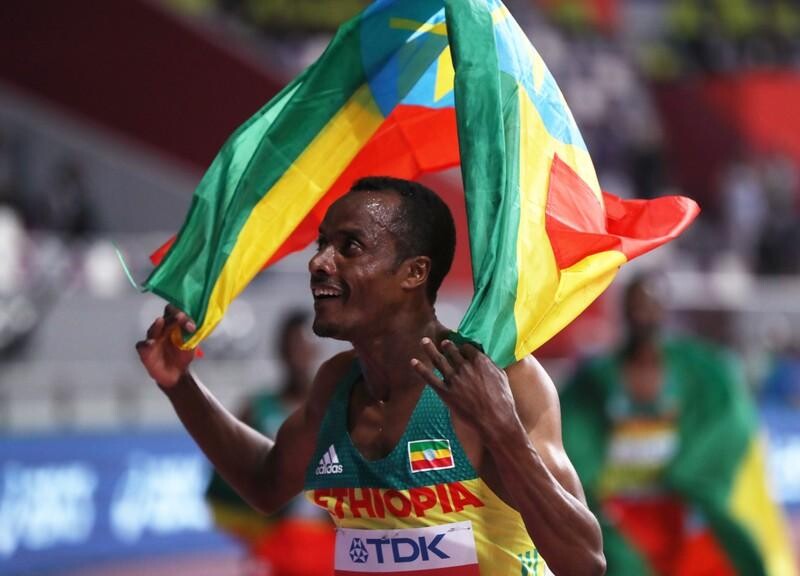
And the event promises to give him a good send-off as he will be in some top company. The line-up for this year's elite men's race now has been revealed and it includes an impressive roster of international athletes.
Among them will be 30-year-old Kenyan Geoffrey Kamworor: a three-time World Half Marathon Champion who has won the New York Marathon twice and came second earlier this year at the London Marathon.
He said: “I’m really looking forward to taking on my first Great North Run in Newcastle - I’ve heard many good things about the event. Sir Mo Farah - he has had such an incredible career, it’s exciting to be a part of his last ever race but I’m obviously here to win and add my name to the list of champions.”
Another big challenger is set to be Muktar Edris from Ethiopia - and he is such an admirer of Sir Mo that he even named his son after the Olympian. Edris is a two-time World Champion over 5,000 meters and has a personal best time of 58.40.
He says: “I’ve raced Mo on the track but this is the first time we have met on the roads. I have great respect for him - after we raced in London 2017 World Championships, I named my son after him."
He adds: "I look forward to renewing our friendship and rivalry." Spectators will be able to watch them in action alongside the other elite runners - and the rest of the 60,000 participants - when the 42nd half-marathon gets under way in Newcastle on September 10, following its traditional route to South Shields where it will be all eyes on the finish line 13.1 miles later.
This year's run, which is due to be broadcast live on BBC1 from 10am until 2pm, is expected to raise around £25m pounds for charity.
(09/04/2023) ⚡AMPby Barbara Hodgson
Great North Run
Great North Run founder Brendan Foster believes Britain is ready to welcome the world with open arms after the launch of the event's most ambitious plan to date. The Great World Run campaign seeks to recruit one runner from every country in the United Nations – 193 in total – to take part in the iconic half marathon in...
more...Three easy steps to more relaxed running form
Ever wish you could run with more ease and smoothness? Whether it’s tight muscles, poor habits or overthinking that leave you feeling stiff and uncomfortable, you too can be gliding effortlessly in three simple steps. Try these a few times on your easy runs, and soon you’ll be doing them naturally. Your friends may start calling you Kipchoge.
1.- Relax your shoulders and arms

Keep your shoulders relaxed and down: tension in your shoulders can lead to neck and upper back discomfort. Keep your hands in a very loose fist (imagine you are holding a delicate potato chip in each hand) and let your arms swing easily and naturally. Once in a while, shake out your arms and shoulders during your run, releasing any tension that has built up and giving yourself a quick reset.
2.- Pay attention to your breath

Notice the rhythm of your breath, and try to keep a steady, relaxed pattern. Taking deep breaths through your nose can help calm your entire body and reduce tension. Notice if you’re breathing erratically or shallowly and try practicing diaphragmatic breathing (or “belly breathing”) to release tension that may be accumulating. Start by inhaling deeply through your nose, expanding your diaphragm, and exhaling fully through your mouth or nose. If this is challenging, try practicing for a few moments before or after your run.
3.- Find your stride
While we all have a natural running stride that we gravitate toward, it’s easy to fall into poor habits when fatigue sets in. Aim for a comfortable and efficient stride length, avoiding overstriding or taking excessively long steps–this can lead to tension and soreness in your legs and lower back. Pay attention to your foot strike, and while this subject seems to be forever in debate, a general consensus is that staying light on your feet with a quick turnover is helpful for most of us. Avoid leaning too far forward or backward.
Relaxed running doesn’t mean slouching or flailing about, rather, it means finding a balance–maintaining proper running mechanics and feeling like you are running with ease. Some days this is more challenging than others. If you check-in with your running form regularly, reminding yourself of this quick three-step shakeout, you’ll soon be doing this by habit and zooming fluidly and lightly through your runs.
(09/04/2023) ⚡AMPby Keeley Milne
Over Sports Drinks? These Fruits Are Naturally Rich in Electrolytes
Find essential electrolytes like sodium, potassium, magnesium in everyday fruits
Many runners are familiar with common electrolytes like sodium, potassium, magnesium, and calcium. These minerals, namely sodium and potassium, play a role in helping to maintain fluid balance while exercising. Essentially, they allow your muscles and nerves to continue contracting optimally. Since we lose electrolytes along with water in our sweat, we need to make sure we are consuming an adequate amount to stay properly hydrated.

Having sufficient electrolytes on board can help prevent dehydration and muscle cramps, as well as aid in cognitive function and performance. Staying properly hydrated is even more important in the summer months, when we tend to lose more water and electrolytes in sweat.
Most runners are more concerned with low sodium levels than with higher ones. It is the electrolyte most lost in sweat, says registered dietitian Kylee Van Horn. “It plays a key role in both muscle contraction, fluid balance, and the bodies’ ability to utilize glucose (sugars) in the small intestine,” she says. “It works alongside chloride and potassium to maintain fluid balance.”
Hyponatremia, a dangerously low concentration of sodium in the blood, usually occurs when there is an excess of water (fluid) in relation to sodium in the body. Exercise-associated hyponatremia (EAH) can develop during or after physical activity (usually in regards to intense or endurance-type activities) and can lead to serious consequences.
Potassium works with sodium and is specifically recognized for its help in aiding muscle contractions, maintaining blood pressure, and preventing muscle cramping. The daily recommendation for potassium intake is about 4700 milligrams.
“Magnesium and calcium play roles in muscle contraction and energy production but are lost in smaller amounts in sweat,” says Van Horn.
While many of us rush to consume electrolytes through sports beverages, gels, tabs, and other supplements, we often forget that many delicious foods contain electrolytes, as well. Furthermore, many of the standard sports drinks and energy bars may contain sodium but lack other important electrolytes, and may also contain unwanted ingredients or added sugars.
(09/03/2023) ⚡AMPby Outside Online
These Expert-Recommended Kinesiology Tapes Could Help Your Running Recovery
To overcome a nagging running injury, just tape yourself back together.
Kinesiology tape, created by Japanese chiropractor Dr. Kenzo Kase in 1973, is a stretchy therapeutic tape made of mostly cotton that uses medical-grade acrylic adhesive to stick to your skin. When stretched tight, the tape pulls the skin away from the tissues beneath, reducing the pressure against the underlying tissues. In theory, this promotes circulation and the removal of waste products through lymphatic drainage.
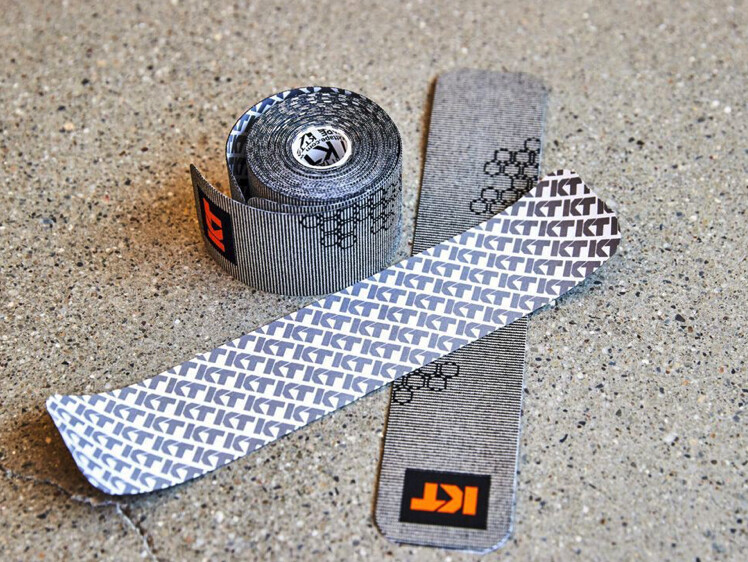
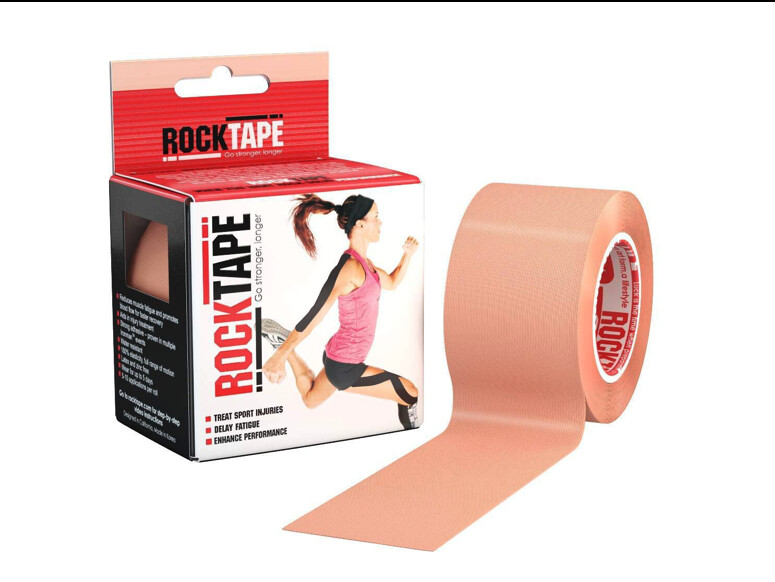
Our experts said that some runners use kinesiology tape to reduce pain. “Once you reduce the perception of pain, you can get an increase in range of motion and an increase in muscle activation,” says Dr. Karena Wu, clinical director of ActiveCare Physical Therapy. Because nerve fibers associated with touch stimulation are larger than pain fibers, the brain receives the touch stimulation faster, reducing your perception of the pain.
The tape can also inhibit certain muscles or facilitate others. Instead of immobilizing muscles and joints like athletic tape, kinesiology tape is stretchy, and runners can use that elasticity to adopt a stronger, healthier stride. “People who have shoulder or trap pain as they’re running tend to hike their shoulders up toward their ears,” says Denise Smith, PT and owner of Smith Physical Therapy + Running Academy. “We’ll tape down their shoulders. As their shoulder creeps up as they fatigue, that triggers a sensation of the tape pulling on the skin, so they relax their shoulders.”
Scientific research confirms some of kinesiology tape’s purported benefits. A 2022 meta-analysis of eight studies conducted by the University of Padova in Italy found that kinesiology tape was able to improve gait function, range of motion, and muscle activation in athletes. However, a 2020 study out of Leeds Beckett University in England found that the tape made no difference in cutaneous blood flow, calling into question some of the tape’s purported benefits for muscle soreness and recovery.
Even without hard science behind all of its claimed benefits, kinesiology tape has been widely adopted by athletes and trainers. At less than $20 per roll on average, it’s a low-cost, low-risk way to at least try to optimize your training regimen.
What to Consider When Picking Out Kinesiology TapeAllergies and Sensitivities
Most kinesiology tapes are made from hypoallergenic materials like cotton and nylon, and specifically avoid using those that commonly trigger allergies, such as latex. Even so, make sure to check the composition of any tape before applying it if you have a skin allergy.
Even if you don’t have a specific, intense allergy, some adhesives may irritate sensitive skin. Several brands offer “gentle” tapes with weaker adhesives that are less likely to cause redness or swelling.
Separately, keep in mind that removing kinesiology tape will likely affect your skin, since the adhesive is very strong. Make sure to read the removal instructions before yanking the tape off—some manufacturers recommend using baby oil to break down the adhesive before removal.
Body Hair
You don’t need to shave your body hair to use kinesiology tape, but you should know that too much body hair will defeat even the stickiest adhesives. If your tape is coming off more quickly than it should on a hairy area, shaving down to a quarter-inch or less may improve the tape’s staying power.
Positioning
Some areas of your body are easier to tape yourself than others, so consider where and how you’ll apply the tape before you buy. Ideally, you should consult a doctor or physical therapist before using kinesiology tape so they can show how to properly cut and apply it in a way that will enhance your performance, instead of harming it. “It is very important to know the anatomy where you are trying to apply the tape,” said Bruce Allen, DC, a chiropractor and certified kinesiology tape practitioner at the San Diego Running Institute. “If taped incorrectly, you could give yourself a separate injury.”
We also have a guide to using kinesiology tape, with expert instructions for taping yourself up to deal with a handful of common running injuries, including plantar fasciitis and shin splints.
If you’re concerned about mis-taping, we recommend looking for pre-cut kinesiology tape strips and patterns, which are made to support specific trouble spots, including knees, shoulders, and the lower back.
How We Selected the Best Kinesiology Tapes
To choose the best kinesiology tape, we consulted eight physical therapists, trainers, and running coaches to find out which ones they use and recommend to their athletes. We also gleaned insight from popular running forums like Slowtwitch, impressions from additional experts, and hundreds of customer reviews at major retailers, such as Amazon and Walmart.Vikash Sharma DPT, OCS, COMT of Perfect Stride Physical Therapy in New York City is a doctor of physical therapy and a certified running coach with the Road Runners Club of America and USA Track and Field. An avid runner, Sharma competes in road races around the Northeast.
Karena Wu, DPT, OCS, COMT, CSCS, CKPT, CPI, FAAOMPT is the owner and clinical director of ActiveCare Physical Therapy in New York and Mumbai. Wu is also the former director of education for Spidertech Kinesiology Tape.
Bruce Allen, DC, CKTP is a doctor of chiropractic medicine and certified kinesiology tape practitioner based in San Diego. Allen received his Bachelor of Science in Kinesiology, specializing in kinesiotherapy, from San Diego State University.
Denise Smith, PT is the owner of Smith Physical Therapy + Running Academy in the Chicago suburbs. A certified running technique specialist, Smith has consulted for the Russian olympic and national triathlon teams and travels the country educating runners on proper form using the Pose Method.
Robyn Pester of Robyn Pester Physical Therapy in Eugene, Oregon has been the lead PT for the 2022 World Athletics Championships, the Olympic Track & Field Trials in 2016 and 2020, and other high-end local track meets. Her manual therapy skills have developed over a 30-year career that has helped hundreds of clients return to active lifestyles.
Ryan Sweeney, DPT earned a doctorate in physical therapy at Duke University in 2013 and now works as an orthopedic clinical specialist and muscle activation technique specialist at Specialists in Sports and Orthopedic Rehabilitation in Overland Park, Kansas.
Matt Silver, DPT at Alpha Project Phyzio and Performance and a certified running gait analyst, helps injured runners regain their stride with athlete-focused physical therapy.
Peter Dills, DPT is the clinical director of Therapeutic Associates Physical Therapy in North Portland, Oregon. A certified therapeutic pain specialist and manual therapy specialist, Dills is particularly passionate about treating runners, especially foot and ankle disorders.
Dan Roe, author of this piece, is a former Runner’s World test manager and a former Division I distance runner at the University of Missouri. Kinesiology tape is a component of many top athletes’ training regimens, and a crucial aid for all kinds of runners who want to relieve soreness and remain cognizant of their form. Kinesiology tape mimics the elasticity of skin and lifts your skin away from tissues beneath, creating space that may help relieve joint pain, improve circulation, stabilize muscles, and reduce muscle soreness. Physical therapists also use it to help runners correct bad habits by helping them focus on activating muscles they may be underutilizing.
At the same time, it’s not a panacea for muscular health. In fact, it isn’t for everyone. We’re here to help you figure out whether kinesiology tape can help you support your muscles, improve circulation or prevent injury. We’ll also point you toward the best kinesiology tapes you can buy right now, from KT and other brands, based on expert advice from physical therapists who recommend the tape to their athletes.Who should avoid using kinesiology tape?
You should avoid kinesiology tape if you have a condition where more blood flow would be bad—deep vein thrombosis, diabetes and active cancers are among conditions that have excluded people from participating in kinesiology tape research. Also avoid taping over open wounds due to the risk of an infection.
If you’re unsure how your skin will react to an acrylic-based adhesive, or any of the components in a specific tape, test it first by applying an inch-long strip and waiting a few minutes to see how you react.
How long should I leave kinesiology tape on?
According to our experts, you should leave your KT tape on until it starts to slide or fall off. “The tape is meant to be a sensory stimuli so it is meant to be worn for the length of the activity and even afterwards,” said Wu. “In rehabilitation, it should be used for a few weeks in order to retrain or support or inhibit tissues during the recovery process.”
In most cases, a piece of tape should last for a few days, up to a week. Most of these tapes are water-resistant so you will be able to shower after a run while wearing your tape, but it will likely weaken the adhesive.
How do I prepare my skin before applying KT tape?
Our experts recommend applying rubbing alcohol to the area to remove natural oils before taping up. Make sure the skin is not red or irritated before putting it on, especially if you are reapplying to a recently taped area. “You never want to take the top layer of skin off or irritate the skin or else you cannot re-tape until the skin has calmed down,” Wu said.
How do I remove KT tape?
Dills advises his clients to remove the tape in the shower using warm, soapy water. To avoid leaving a residue, “don’t pull the tape straight away from your skin,” Dills said. “Gently peel it back a little at a time.” If your tape does leave some adhesive behind, Smith recommends starting with soapy water and a sponge or scrub brush, and graduating to an adhesive remover pad for persistent adhesives.
(09/03/2023) ⚡AMPby DAN ROE Runners World
2023 UTMB Men’s Race
After a history of struggling with UTMB, the American men showed up this year with Jim Walmsley and Zach Miller (pre-race interview) taking the top two-spots on the podium. Two vastly different racers with different approaches to the event, the two were able to push each other from start to end, with Walmsley’s ever-consistent pace finally winning out in the end with a new course-record time of 19:37:43. But with a stacked field, with nine of last year’s top 10 back for another crack at the race, and last year’s champion Kilian Jornet out with injury, it was anyone’s bet throughout most of the race of who would come out on top.
There’s never a non-chaotic start to UTMB, and this year was no different. With nerves and excitement running high, it was France’s Arthur Joyeux-Bouillon (pre-race interview) who led at Saint-Gervais, 21 kilometers in, with the entire rest of the field hot on his heels. But as darkness fell on the race and the kilometers ticked by, several distinct groups began to form. Coming into Les Contamines, 32 kilometers in, it was Zach Miller, Jim Walmsley, and the U.K.’s Tom Evans (pre-race interview) bunched up and running together. It looked like there would be the potential of a repeat of the Miller-Evans bromance from 2022, with the addition of Walmsley as a third. Frenchman Mathieu Blanchard (pre-race interview) and Petter Engdahl (pre-race interview), a Swede who lives in Norway, teamed up just a minute behind the leading trio, and the rest of the top-10 men came in within five minutes of the leaders.

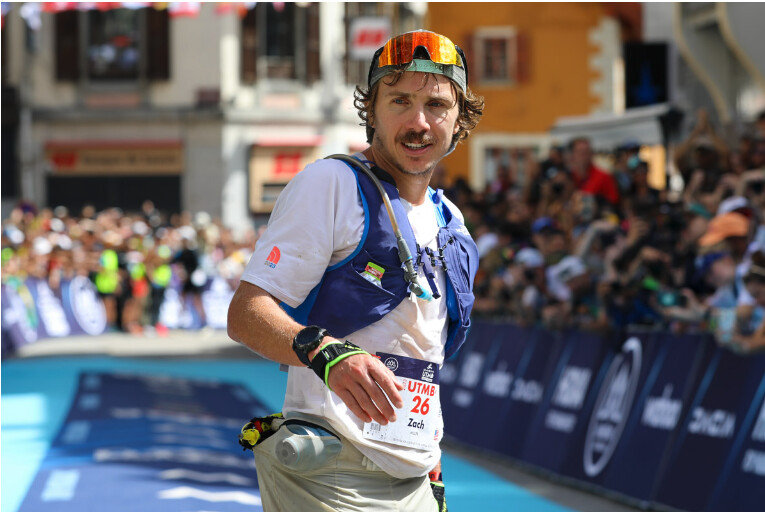
By Col du Bonhomme at 44 kilometers, it was clear that Walmsley was there to put his mark on the race. Miller doggedly hung on 30 seconds back, and Evans came through another 30 seconds in arrears, looking decidedly worse than the two men in front of him. France’s Germain Grangier (pre-race interview), Blanchard, Engdahl, and Joyeux-Bouillon continued to run together just eight minutes off the lead.
The head of the race remained amazingly consistent over the coming kilometers to Courmayeur, 81 kilometers into the race. Walmsley led Miller by a handful of minutes, Engdahl and Grangier followed, running close to each other in third and fourth, at under 20 minutes back after Evans decided to call it a day. Joyeux-Bouillon and Blanchard stayed within half an hour of the leader in fifth and sixth.
Ever the aggressive racer, Miller made his move before Arnouvaz, 99 kilometers in. He came through the checkpoint leading a fatigued-looking Walmsley by two-and-a-half minutes. Many wondered if this was just another instance of Walmsley taking the early race out too hard and paying for it later. Grangier, Joyeux-Bouillon, and Engdahl all came through the checkpoint within 30 minutes of Miller, still well within striking distance if either of the two Americans fell back. The rest of the top-10 men also remained close, with a large group containing New Zeakland’s Scotty Hawker, France’s Thibaut Garrivier, Blanchard, Switzerland’s Jean-Philippe Tschumi, and Germany’s Hannes Namberger coming in hot and fast.
Coming over a dark and foggy Grand Col Ferret at 103 kilometers, Miller extended his lead to nearly four minutes, but Walmsley looked determined and seemed to have found a second wind. Grangier continued to hold strong just 12 minutes behind the leader, and the chase pack of the rest of the top 10 remained relatively unchanged with several of the men teaming up to run the final kilometers to daybreak together.
It’s always a question of when the actual racing at UTMB starts. That is, when do runners make their move and hope that it sticks? Coming into Champex-Lac at kilometer 126 on Saturday morning, it was starting to seem like perhaps Miller’s early move might be the one that worked for the American. With an 11-minute gap over Grangier and Walmsley, who were now running together, Miller looked strong and focused. But there was still a lot of racing to do, and a lot of mountains between him and the finish.
Whether Walmsley was actually in a spot of bother in the later hours of the night, or if it was all part of his strategy to hold back until daylight, everything changed when the sunlight lit up the Alps. By kilometer 139 at La Giète, he’d whittled his gap to Miller down to two minutes, and by Trient six kilometers later, he’d moved back into the lead of the race, a position he wouldn’t relinquish. Grangier continued to run in third, with fourth, fifth, and sixth place, Joyeux-Bouillon, Blanchard, and France’s Ludovic Pommeret, all moving together 44 minutes back from the battle up front.
With the kilometers ticking by, Walmsley’s lead only continued to grow. At kilometer 154 at Vallorcine, he was more than 13 minutes ahead of a struggling Miller. Seven kilometers later at Tête de Béchar, the gap was up to 16 minutes. From here, it would be just one more climb up to La Flégère before the course tipped downward to Chamonix. Grangier maintained his third place up the final climb, with Blanchard in fourth and Pommeret in fifth, more than an hour back on the leader. Garrivier ran in sixth, while Hawker and Joyeux-Bouillon were seventh and eighth, 92 minutes back from the lead.
Once on the final descent, there was no touching Walmsley, and one can only imagine the thoughts and emotions that must have been going through his head. After five attempts at the race, the ultimate student of the course had finally figured out how to put together the race everyone thought he was capable of. He crossed the finish line to huge cheers from the crowd with a time of 19:37:43, breaking Kilian Jornet’s course record of 19:49:30. Wiping away tears while receiving congratulations from past UTMB champion François D’Haene, it was clear how much this victory meant to him.
Fellow American Miller came across the line in second with a time of 19:58:58, looking completely spent. This was his best finish during what can only be called an extended relationship with UTMB starting in 2016. Granger completed the podium with a 20:10:52.
Blanchard, last year’s second-place UTMB finisher, ended just off the podium in fourth. Maybe one of the more impressive results of this years race was of Pommeret in fifth. The 48-year-old masters athlete, who was the 2016 UTMB champion and 2022 TDS winner, showed that age really is just a number. The other surprise in the top 10 has to be Tyler Green, the American who made a late race move to finish in seventh. He didn’t move into the top 10 until Tête de Béchar, 161 kilometers in.
Race favorite Petter Engdahl withdrew at Champex-Lac, 126 kilometers into the race.
(09/03/2023) ⚡AMPby Eszter Horanyi I run far
North Face Ultra Trail du Tour du Mont-Blanc
Mountain race, with numerous passages in high altitude (>2500m), in difficult weather conditions (night, wind, cold, rain or snow), that needs a very good training, adapted equipment and a real capacity of personal autonomy. It is 6:00pm and we are more or less 2300 people sharing the same dream carefully prepared over many months. Despite the incredible difficulty, we feel...
more...2023 UTMB Women’s Race
Was there actually any doubt that American Courtney Dauwalter (pre-race interview) would actually win UTMB? If her performances throughout the summer were any indication, it would have been foolish to bet against her. After winning and setting course records at both Western States 100 and Hardrock 100 earlier this summer, this win might just be the cherry on the cake, or the cerise sur la gateau, as the French would have it.
The legend of the sport led from the early miles, and in typical Courtney fashion, smiled and joked her way to the win with a time of 23:29:14.While Emma Pooley, of Switzerland, led for the initial kilometers of the race, it didn’t take long for Dauwalter to move to the front. Sporting her trademark smile and happily interacting with volunteers at aid stations whenever the opportunity presented itself, Dauwalter simply makes it look good.
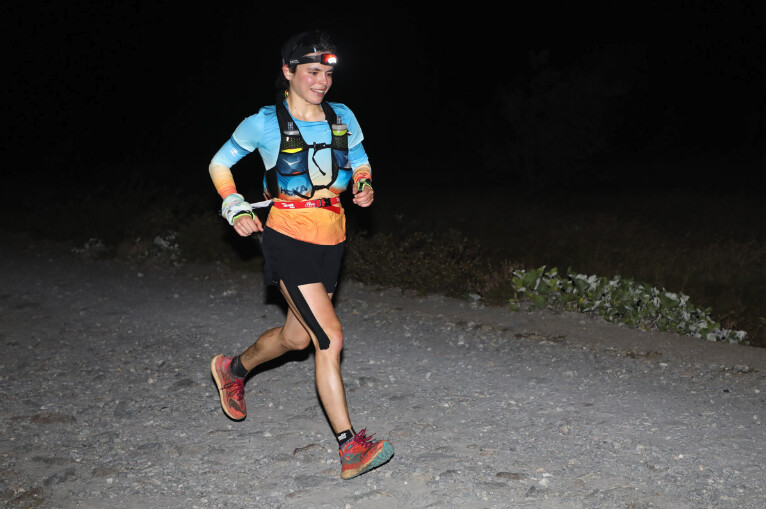
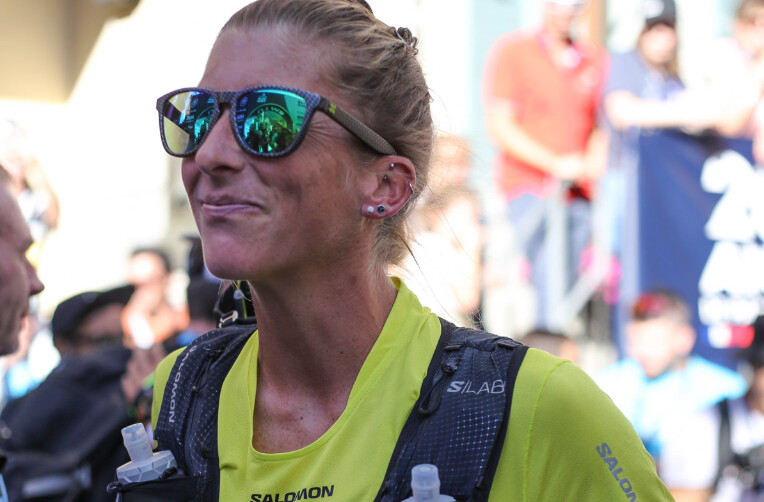
The top three women, Dauwalter, Pooley, and France’s Blandine L’Hirondel, came into Les Contamines, 32 kilometers into the race, within seconds of each other. It would be the last time we would see the front of the race together, as by Col du Bonhomme, 12 kilometers later, the gap between Dauwalter and second-place Manon Bohard Cailler, of France, was nearly 10 minutes. L’Hirondel and Chiina’s Fu-Zhao Xiang (pre-race interview) came through another two minutes later. Germany’s Katharina Hartmuth (pre-race interview) came over the dark col another five minutes in arrears. The situation remained essentially unchanged through Les Chapieux at 51 kilometers and Lac Combal at 69 kilometers, except the gaps were growing.
Nearly 10 hours into the race, Dauwalter came through Courmayeur at 81 kilometers, not even bothering to stop at the aid station. Bohard continued to keep the gap manageable at 18 minutes, but it was really starting to look like another runaway victory for the American for the top step of the podium. But the race for the rest of the top spots was just starting to get interesting. L’Hirondel and Xiang remained close in third and fourth, just a few minutes back of Bohard, and Hartmuth continued to lurk another 20 minutes back. This early in the race, there were still many within striking distance. Coming through Refuge Bertone at 86 kilometers, the top five remained unchanged and Canada’s Ailsa McDonald, Poland’s Katarzyna Solińska, the U.S.’s Sabrina Stanley and Leah Yingling, and Claudia Tremps of Spain filled out the top 10.
Somewhere before Arnouvaz at kilometer 99, Bohard took a fall that would ultimately take her out of the race. She entered the aid station walking gingerly, but was determined to keep going. This development opened up podium possibilities even further, and Xiang and L’Hirondel continued to run together at Grand Col Ferret, 50 minutes behind the ever-steady, smiling, and happy Dauwalter. Hartmuth was just 15 minutes off a podium position.
With the arrival of Saturday morning came renewed spirits for many. Dauwalter arrived to sun at La Fouly running 26 minutes under her own course-record pace. L’Hirondel and Xiang came in just under 50 minutes back, but now there was daylight, in the form of a couple of minutes, between the women. Hartmuth remained in fourth, 65 minutes down, Solińska in sixth, Yingling in seventh, and Spain’s Maite Maiora came through in eighth looking relaxed and focused. Stanley remained in the top 10. Bohard finally succumbed to injuries from her fall and would withdraw from the race.
By La Giète, 130 kilometers in, the gap between Dauwalter and second place was over an hour, but the fight between the rest of the top five remained tight. Xiang moved into second and Hartmuth third, just minutes apart, as L’Hirondel began to feel the distance and time in her legs and dropped back. Solińska and MacDonald continued in fourth and fifth, running together almost two hours behind Dauwalter and nearly 50 minutes behind second and third places. Things remained relatively unchanged at Trient at 144 kilometers. Dauwalter looked good, Xiang was 66 minutes back, and Hartmuth was a mere minute behind her. Solińska and MacDonald followed another 50 minutes back, with Maiora trailing them by 15 minutes.
With victory seemingly all but assured for the American, the battle for the other two podium spots started to get heated on the closing climbs and kilometers. Through Vallorcine at the base of the final major series of climbs, Hartmuth moved up into second after biding her time the entire race, now seven minutes ahead of third-place Xiang and fourth-place L’Hirondel, a further nine minutes back. Maiora led Solińska in fifth and sixth just under two hours behind the leader.
Near the top of the final climb at Tête de Béchar, 161 kilometers in, it was Hartmuth in second, 56 minutes down. L’Hirondel moved into third 15 minutes back and Xiang kept the pressure on for the final podium spot, trailing by just four minutes. The next gap to Maiora remained about 30 minutes.
Meanwhile, Dauwalter made short work of the final descent to the finish line in Chamonix, finishing in 23:29:14 and completing the ultimate trifecta of ultrarunning, winning the Western States 100, Hardrock 100, and UTMB all in one year. “Anytime you have a chance to take on a crazy challenge, I think we should,” she said afterward.The battle for the final two podium spots didn’t let up until the very end. Coming through La Floria, just four kilometers from the finish, Hartmuth led L’Hirondel by a mere nine minutes, and both women looked strong all the way to the finish. They would finish just over 40 minutes behind Dauwalter, Hartmuth in second at 24:10:52. L’Hirondel, the multi-time trail world champion, finished in third at 24:22:50 for her debut 100 miler.Xiang would fade away from podium contention in the final kilometers but held on for an incredible fourth-place finish, improving on her seventh place in 2022. But really, the excitement of her race finish was only added by receiving a marriage proposal on the finish line. Having met her now-fiancé — she said yes! — four years ago at UTMB, the proposal really was a perfect ending to her race.
Maiora finished fifth, an impressive result after her DNF in the race in 2021.
(09/03/2023) ⚡AMPby Eszter Horanyi I run far
North Face Ultra Trail du Tour du Mont-Blanc
Mountain race, with numerous passages in high altitude (>2500m), in difficult weather conditions (night, wind, cold, rain or snow), that needs a very good training, adapted equipment and a real capacity of personal autonomy. It is 6:00pm and we are more or less 2300 people sharing the same dream carefully prepared over many months. Despite the incredible difficulty, we feel...
more...Great North Run: 102-year-old walker set to be oldest entrant
At 102-years-old, Bill Cooksey hopes to become the oldest person to finish the Great North Run.
The centenarian, who walks about two miles a day to keep fit, will tackle the half marathon route from Newcastle to South Shields on 10 September.
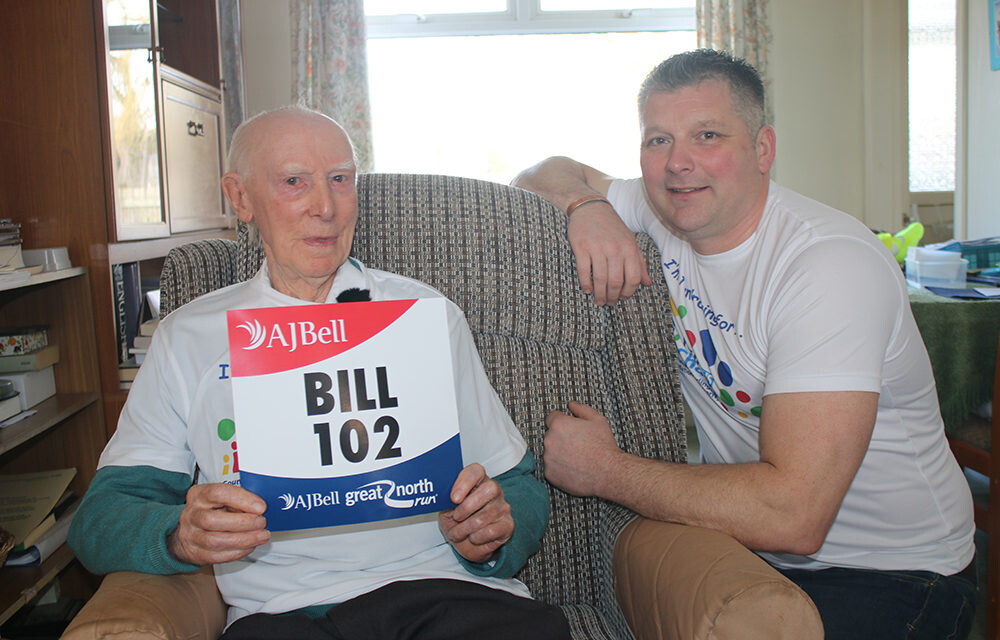
Mr Cooksey, from Newton Aycliffe, County Durham, is raising funds to support his local NHS Trust charity and will be accompanied by two others.
"I hope it will encourage other people to try the same thing," he said.
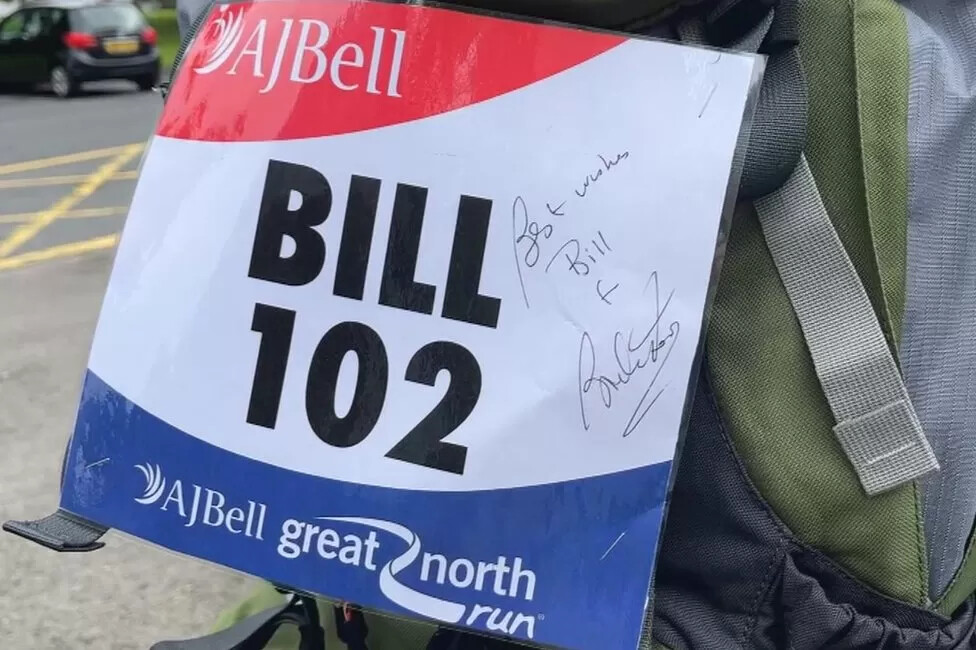
Due to his age, Mr Cooksey will be accompanied by his friend Gavin Hasting and Sue Jacques, chief executive of County Durham and Darlington NHS Trust.
The RAF veteran set himself a challenge of walking 100 miles (161km) when he turned 100 years old, trekking 10 miles a day for 10 days along the Locomotion Way between Newton Aycliffe and Shildon stations.
Not stopping there, the retired teacher clocked up 1,000 miles (1609km) on his tricycle to celebrate his 101st birthday.
He has been given a special Great North Run 102 number, signed by the half marathon's founder Sir Brendan Foster.
"Very often you get to the the same age and say 'that's it, I'm not supposed to be able to do this' but I just carried on as normal and I shall continue to do so until I am forced to stop," Mr Cooksey told BBC Radio Newcastle.
"I don't think that record will stand for long - there will be people out there who are much fitter than I am, and they will decide, 'well if he can do it, I can do it' - and good luck to them," he added.
Mr Cooksey, who was born in Wales, has enjoyed walking since his retirement in 1980.
He recently walked 12 miles (19km) between Seaton Carew and Hartlepool to test his fitness in terms of being able to do the 13.1 mile (21km) course.
The father-of-three encouraged everybody to walk at least two miles a day and has completed all the long-distance paths in Northern England.
"When I am doing an ordinary walk I don't make any attempt of hurrying, I just saunter along," he said, adding: "You go out to walk for solitude and to think about things."
He said he put his good health down to keeping active, as well as a good diet and lifestyle.
"The only thing I regret is having to give up dancing, I think that's another secret to good health," he added.
(09/02/2023) ⚡AMPby Andy Watson and Chris Robinson
Great North Run
Great North Run founder Brendan Foster believes Britain is ready to welcome the world with open arms after the launch of the event's most ambitious plan to date. The Great World Run campaign seeks to recruit one runner from every country in the United Nations – 193 in total – to take part in the iconic half marathon in...
more...Fast times at the third annual KATA Double 15k in Thika Kenya
The third edition of the kenya double road race was held today 2nd September 2023 at kenya athletics training academy (KATA) in Thika kenya. This also replaced the monthly KATA Time Trial for September.
On the chilly morning, the weather was perfect for a great race, runners started arriving at the academy as early as 6am for this mind blowing and challenging event.
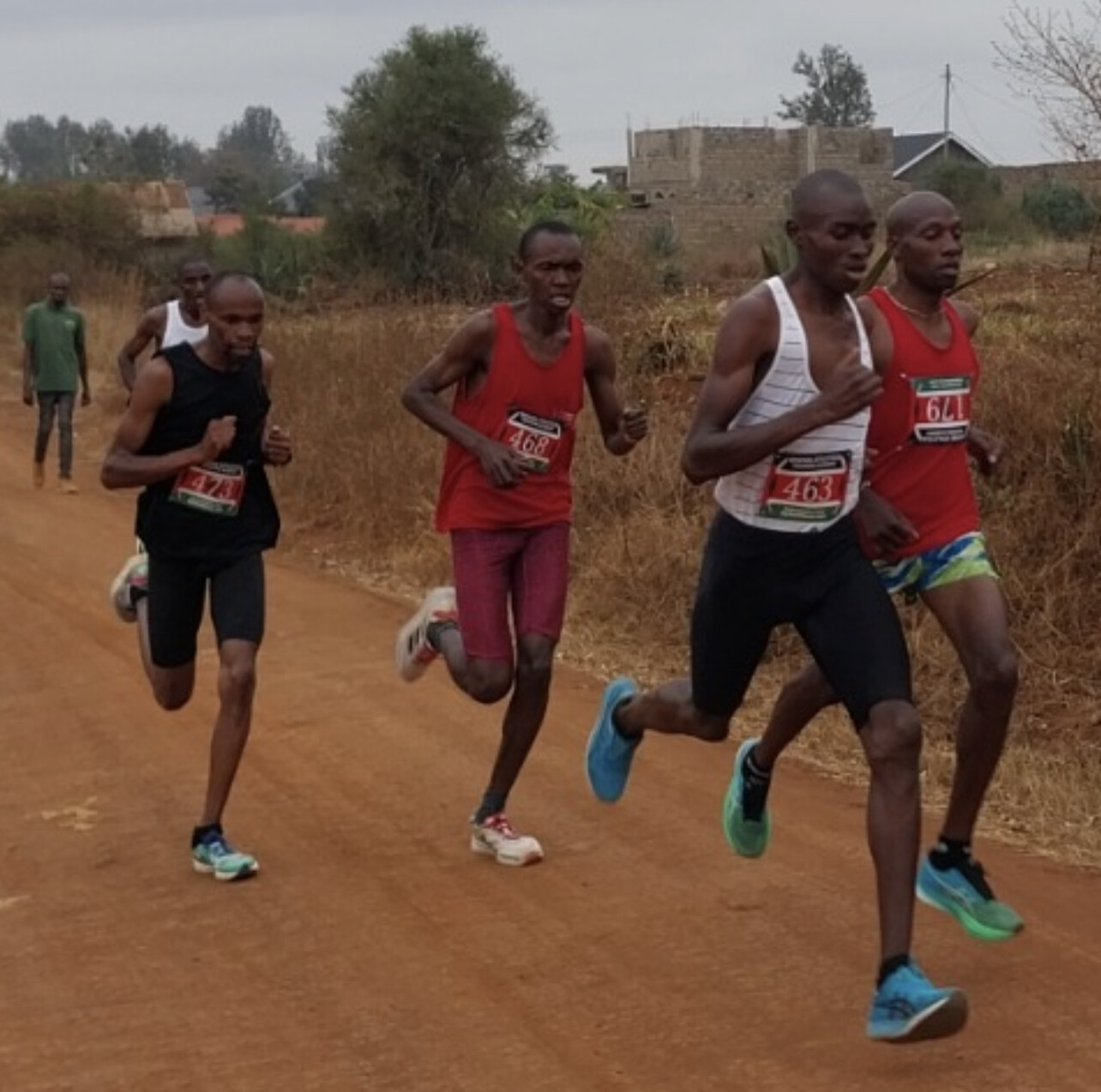
Our race organizers had worked tirelessly to make sure that the event was ready on time under the eye of the race director and academy manager Florence Kimiti. and the kata team working hand in hand.
At 9.am Kenyan time the race started, and all the favorite runners were on the leading group making sure that they have an eye of what’s going on, race Favorite Bernard Musau took charge after the 3rd kilometer and went ahead to win the first leg in 29:44, Nahshon Ndegwa come in second in 30:26 and job Kamonde run 30:27 to finish 3rd.
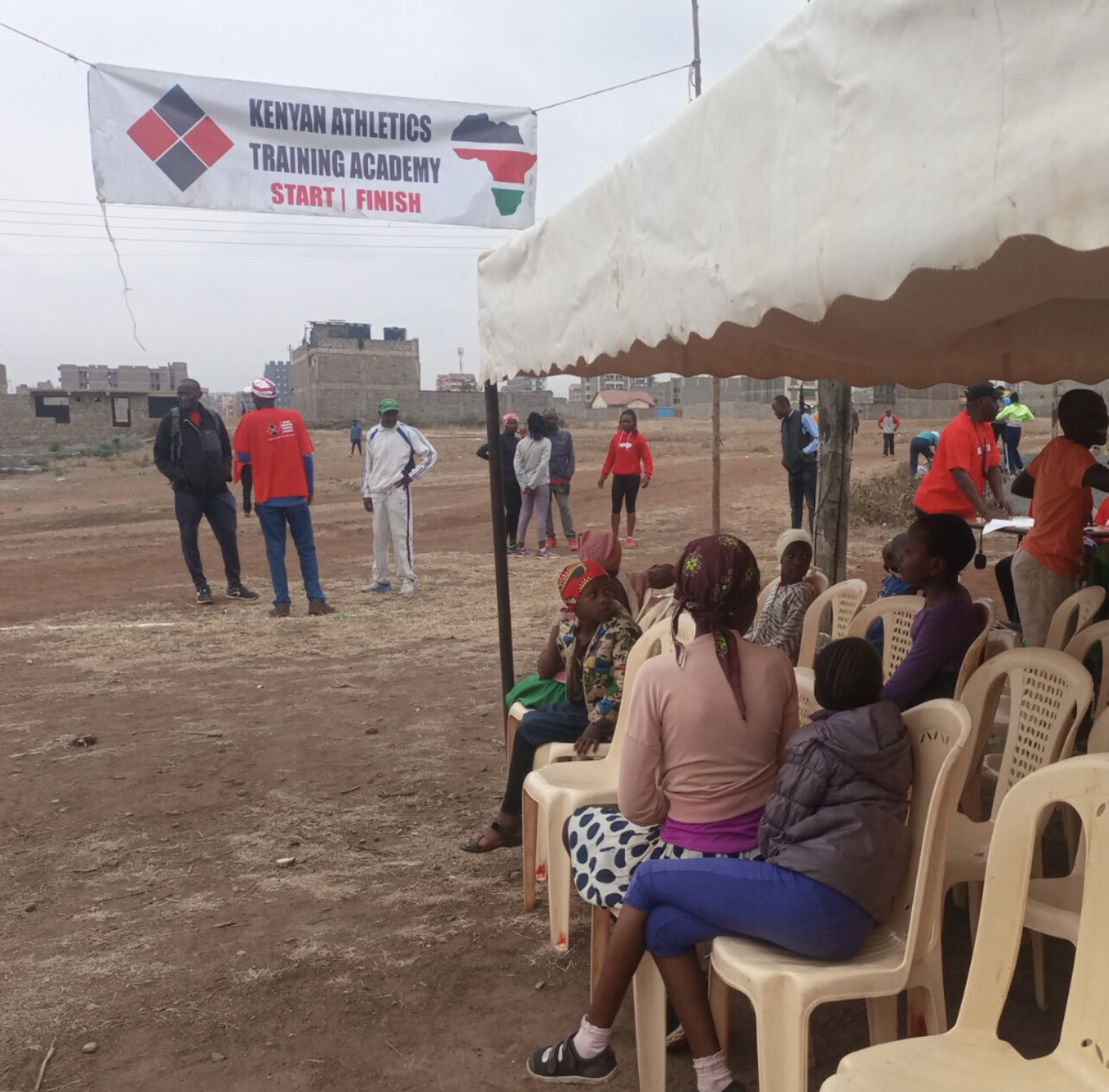
In the women race, it was similar to men race, the one horse race saw Miriam Chepkemoi 34:35 dominated the race from gun to tape, Kellen Waithira came in 2nd in 35:37 and Karen Chepkemoi hold on to the 3rd in 37:14.
During the halftime break, it was the time for bob Andersons kid cup mile which saw amazing talent from the upcoming kids, in the boys race Davis Wanjihia won the race in 6:46, Benjamin Ndaro was 2nd in 6:55 while Lewis Mburu sealed the podium in 7:03. The girls was won by 11yrs old purity Wambui took the honors I 6:33, Emma Elianah was 2nd in 7:30 and Abigail Imali came 3rd in 7:39 to seal the podium.
After the break , it was time for second leg and saw Bernard fired up as he destroyed the field from the gun and won easily in 14:48 (his total time of 44:32 ties the 3rd best time time ever) his opponent job Kamonde run 15:02 and Raphael Gacheru ran 15:08 to third place after fifth place in 10km.
Miriam Chepkemoi final time was 51:33 which is the 5th best female tine ever. 40-year-old Gabriel Kahura clocked 47:06 which is the best time ever for 40 years plus.
The race had a huge success and runners loved the new challenge in the double racing.
(09/02/2023) ⚡AMP
KATA Double Road Race 15K
5th Annual KATA Double Road Race 15K Set for September 20, 2025, at KATA Thika The 5th Annual KATA Double Road Race 15K will be held on September 20, 2025, at the Kenyan Athletics Training Academy (KATA) in Thika, Kenya. The event includes a 10K leg, a break, followed by a 5K leg — a format designed to challenge runners...
more...Hoping to get faster this fall? This interval workout will do the trick
Summer is coming to a close, and as the temperatures begin to drop, it’s time to turn up the heat in your workouts. Speedwork is important, whether you’re training for your first 5K or your 10th marathon, so give this 90/60/30 workout a try.
It may look easy on the surface, but it’s an opportunity to really push yourself and turn the speedometer up a notch.
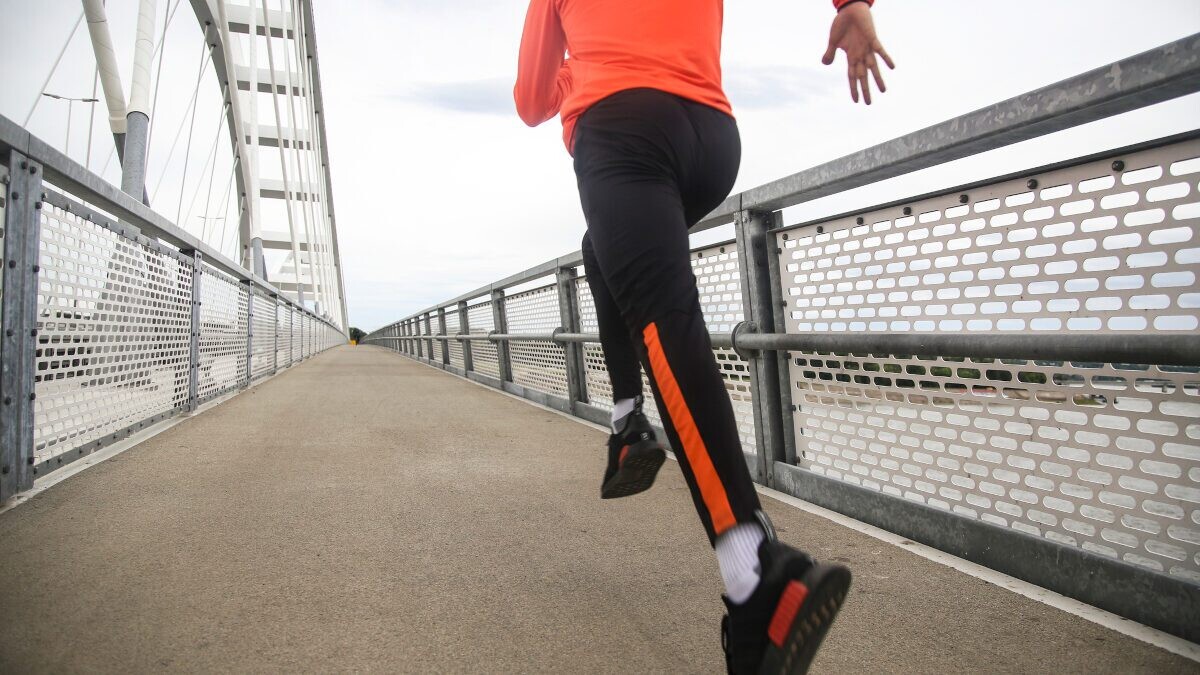
The idea behind this workout is to get faster as the intervals get shorter. That doesn’t mean you start off slow (the longest interval is only 90 seconds, after all), but you should pace yourself so you have something left in the tank and really pour it on for the 30-second interval.
This is a timed workout, but for those of you who aren’t ready to give up your summer track sessions, you can easily turn this into a 400m/200m/100m workout.
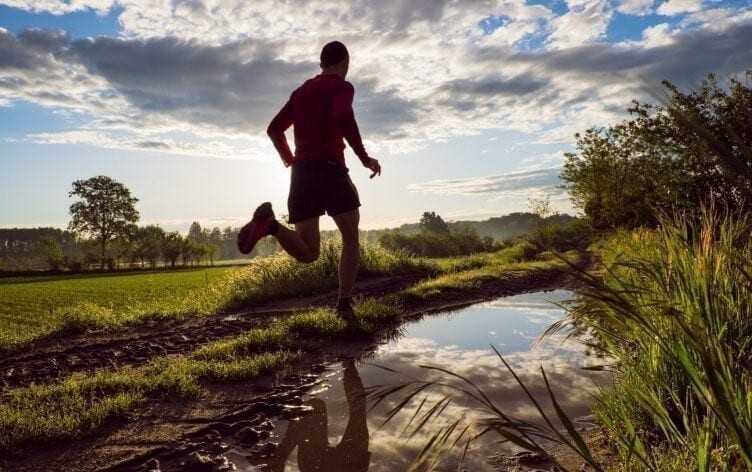
The workout
Warmup: 15-20 minute easy jog
Workout: three or four sets of: 90 seconds hard/90 seconds easy/60 seconds hard/60 seconds easy/30 seconds hard/90 seconds easy)
Cooldown: 10-15 minute easy jog, followed by light stretching.
(09/02/2023) ⚡AMPby Brittany Hambleton
How to Set Your Heart Rate Zones
Your physiology is beautifully unique. I sound like John Mayer if he was a physical therapist. Our bodies are wonderlands, even if our glutes are unmaintained landfills.
The individual uniqueness of athletes creates a problem, though. How can we understand our physiology in the broader context of training theory when every variable is a bell curve across the population? General equations work if you're smack-dab in the middle of the bell curve thiccness, but can be actively wrong and counterproductive as you venture into the standard deviation hinterlands.
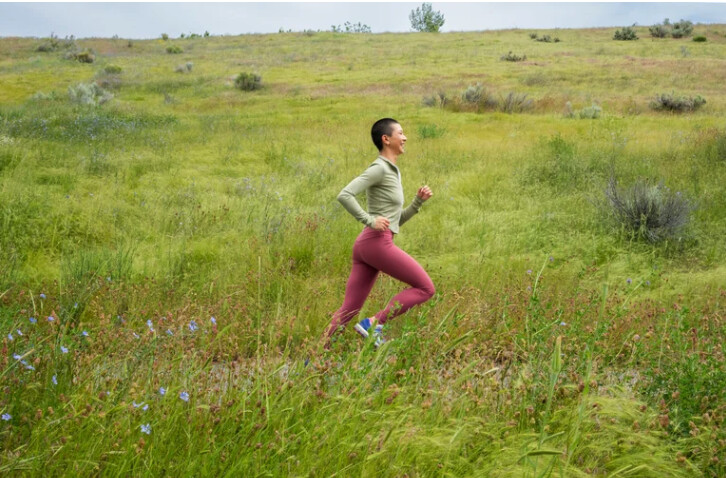
Consider the equation that many of you might have heard about heart rate: 180 beats per minute minus age = approximately aerobic threshold, or the intensity level that serves as a top-end barrier for easy/steady running that should encompass around 80% of your training volume. While that equation is generally useful, it can be actively useless for individuals, especially aging athletes who are highly trained and have a much higher aerobic threshold than the equation would predict.
For me, the equation caps my easy runs at 145 heart rate. My actual aerobic threshold is 152 beats per minute in running (and 150 beats per minute in biking). In practice, that's almost a one-minute-per-mile difference in output. Training from a general equation would prevent me from accruing benefits from steadier paces, and I'd probably be slower at everything.
Training zones from your watch can also be atrocious. In the last few months, I have helped a few hundred listeners of our podcast calculate their heart rate zones (our episode on heart rate zones is here). And a lesson I learned is that some of the watch brands use algorithms that are less accurate than U2 in Spanish class. Zone Uno, Zone Dos, Zone Tres, Zone Catorce, Zone Biblioteca, etc. Some of the watch zones are set so low that I have no idea what they could possibly be measuring.
So today, let's look at one simple way to calculate your heart rate zones to help you calibrate your training intensity. Knowing your intensity ranges is helpful because it optimizes your metabolic fitness, allowing the body to burn more fat at higher outputs, while supporting mitochondrial proliferation and efficiency, allowing both higher and lower intensities to take less energy. Disclaimer: exercise physiology terminology is always subject to evolving debate, particularly on Twitter (the world's town square, if the square was also where the town put the raw sewage). Here is my favorite infographic ever on the overlap of these principles, from Fluid Athletics (follow them on Instagram here).
What Are Heart Rate Zones?
We'll be using the traditional Five-Zone model, contrasted with the Three-Zone model used in most training research, but it helps to understand both and how they interact. Heart rate is best thought of as a proxy for lactate concentrations. To simplify it a ton, lactate is produced as our bodies use glucose to fuel ATP production during glycolysis. Lactate is a fuel source for cells, and it's accompanied by a hydrogen ion that changes muscle pH and contributes to fatigue. A 2018 review in Cell Metabolism described the lactate shuttle where the cells use lactate for energy. If this shuttling mechanism is overstressed, lactate levels and fatigue rise and exercise becomes less sustainable. A great overview by Dr. Howard Luks is here.
When lactate concentrations begin to rise, intensity switches from easy to moderate, an inflection point known as LT1, broadly overlapping with aerobic threshold where athletes go from primarily burning fat to primarily burning glycogen. And when lactate levels rise more steeply at higher intensities, intensity transitions from moderate to hard, an inflection point known as LT2, broadly overlapping with traditional lactate threshold (or critical velocity, depending on the method of calculation). That encompasses the 3-Zone model used in research:
Those zones are used in research to determine intensity distribution. While these breakdowns are gross approximations, it can help to put some numbers on paper to get your bearings (all of these numbers have big error bars).
So if we're using heart rate to approximate lactate and the associated physiological impacts of fatigue, why don't we just use lactate? Good question, you article-ruining jerk. In a perfect world, athletes may decide to prick themselves for blood lactate readings with every interval like they're Norwegian vampires. Practically, though, there's a lactate learning curve in the best of times that can lead to inaccurate data, and in the worst of times it can take some of the spontaneous artistry out of daily training. You can probably tell I'm scared of blood, needles, and vampires (whether traditional or sexy).
For an easy way to scrub complex data files with HR variation, you can use the Strava Sauce browser plug-in, highlight the area you want to examine, and it will give averages without ever lapping the watch. When I calculate zones for athletes, I have found that you can also approximate LTHR from almost any hard workout with intervals 3 minutes or over by looking for spots in the file where heart rate stabilizes for 15-30 seconds before rising to less sustainable levels (and sometimes falling back toward that baseline in longer efforts). Be careful about using data from very hot days or long races over 90 minutes, when heart rate can sometimes be sustained above Friel's LTHR in ways that are not mirrored by the underlying physiology.
A big key here: the data needs to be accurate. Chest-straps are ideal for these purposes, and if you are doing a workout to set heart rate zones, it's worth using the chest strap even if it feels like you're getting the heimlich maneuver from a weak octopus. While wrist-straps are rapidly improving in accuracy, there is extreme variation among athletes/watch brands. For example, my Garmin 745 seems to work really well in most circumstances (see this beautiful graph of a threshold workout). But other athletes don't have that success, and sometimes they send me heart rate files that look like Bitcoin price graphs (we are not sure why it's going up and down, but we can be pretty sure it's nefarious).
How to Set Your Heart Rate Zones
Once you have the LTHR number, it's time to set those elusive zones. We're at another controversial point where the exact percentages are subject to extreme debate. The problem: when you validate heart rate data with lab tests, individual physiology varies substantially. LTHR narrows down that physiological variation to get an idea of zones, but the exact delineation depends on training history, muscle fiber typology, metabolic context, astrological sign, etc. Don't even get me started on Scorpios.
Here are the percentages that Megan and I like to use:
Let's dig into an example from my data. In February, I did a virtual bike race up a mountain. Using the Strava Sauce plug-in and highlighting the final 20 minutes of that hard effort, my LTHR was 172. While there is variance across sports and my heart rate is higher with running, that means my current zones for biking are approximately:
Your LTHR may increase with training and it will drop with age. Athletes are often between 165 and 175, though in professional athletes, I have seen numbers as high as 189 and as low as 152. You can see why dialing in your unique physiology is so important. An athlete with an LTHR of 160 needs to cap most of their easy runs at 140 heart rate (top end of Zone 2). Meanwhile, an athlete with an LTHR of 180 can go all the way up to 157! Often, everything about those athletes can look the same from the outside-same age, same PRs, same training, same potential. But they have very different hearts.
How To Use Your Heart Rate Zones
There are two places where having a general feel for your personal heart rate zones can be most helpful: understanding your Zone 2 (with LT1 as a cap) and determining the sustainability of longer efforts. First, let's break down how to think about each of the zones:
Knowing that Zone two cutoff can help calibrate an athlete's effort so they understand what terms like "easy," "steady," and "moderate" actually mean. Spot-checking heart rate periodically on harder efforts can ensure that athletes aren't going too hard, pushing everything into Zone five and reducing aerobic adaptations. I love athletes to get a feel for how high their heart rate gets on uphills especially, since excessive effort on ups can lead to reduced endurance and race performance. Zone 3 is your friend, in moderation. Zone four is your acquaintance. And spending too much time with Zone five will end with you folded up in a car trunk somewhere outside Las Vegas.
Takeaway
The big takeaway is that heart rate is just a proxy for fatigue processes, especially when calculated outside of a lab. The numbers can vary by the day, and they change across training blocks. Temperature, stress, caffeine, and political news all impact the numbers enough that caring too much about a few beats per minute is unhelpful. The day I first heard the nickname "Meatball Ron," I was in Zone three while sitting on the couch.
Instead, view heart rate as a way to calibrate your physiology in a general way, spot-checking your perceived exertion so that you know what you think your body is doing generally aligns with what your body is actually doing. Once an athlete dials in heart rate, I like them to look at it once every couple weeks during a run, and solely after-the-fact on other runs (if at all), never investing too much in small changes. Heart rate sometimes takes a while to respond, so I find it's rarely useful on shorter intervals.
If you train within the correct general range of intensities, whether guided by heart rate, lactate, and/or perceived exertion, you can improve output at Zone two and Zone three heart rates in particular, and because those efforts are more sustainable metabolically, you'll excel in races. You definitely don't need to have a heart rate monitor to achieve those goals. But you do need to have a good feel for your unique physiology.
All of our bodies can be well-calibrated wonderlands. We sometimes just need a little bit of the sexiest thing of all: data.
But have blood-free hope! Using the method in the article, I have approximated zones for professional athletes that have later been validated in lab tests with small enough margins of error to be useful. However, it's key to get a full lab test for truly accurate data. Heart rate without lactate, metabolic, and/or ventilatory lab tests is like determining the time from where the sun is in the sky. With context clues, you can be close, but you wouldn't want to use it to cook a turkey.
Five-Zone Training Model
Now, let's finally get to the Five-Zone heart rate model that is used in most training approaches. The Three-Zone model is overlaid with green, yellow, and red (again, there is debate around the exact breakdown, particularly with the Zone three/Zone four delineation).
There are a few ways to set the zones, but I see the most repeatability and accuracy with the Lactate Threshold Heart Rate method pioneered by legendary coach Joe Friel. As outlined in Training Peaks, he suggests that athletes "do a 30-minute time trial all by yourself (no training partners and not in a race). Again, it should be done as if it was a race for the entire 30 minutes. But at 10 minutes into the test, click the lap button on your heart rate monitor. When done, look to see what your average heart rate was for the last 20 minutes."
I like athletes to do the test on uphills, where they won't be limited by neuromuscular and biomechanical factors if they don't have a ton of speed training. If it wasn't a truly hard effort or your heart rate takes a lot of time to increase across an effort, you can take the average heart rate from a section as short as 10 minutes. Because this isn't an exact measurement like in a lab test, think of it as an art that is useful in understanding your body, rather than attempting to find a correct answer like high school algebra.
(09/02/2023) ⚡AMPby DAVID ROCHE
Des Linden and Kara Goucher Demystify Drug Testing Requirements in Pro Running
Specifically, how the “whereabouts” policy really works.
Drug testing in professional running has made plenty of headlines over the years—even as the process itself has remained somewhat mysterious to spectators of the sport. But on this week’s episode of Nobody Asked Us, Des Linden and Kara Goucher pulled back the curtain and offered a rare peek inside anti-doping practices, including the scoop on “whereabouts” policy.

Linden began the conversation by recalling that she’d been drug tested in the early morning of the previous weekend. “We could demystify the process because I think… people don’t hear too much about it except as just a quick tweet or [via] somebody who hasn’t really been through it or has a story that is uninformed because they heard it from someone who heard it from someone,” said Linden. “We’ve been through this a number of times so I thought we could talk about the process a little bit.”
According to the World Anti-Doping Agency, athletes who are part of the Registered Testing Pool (those operating at the highest level of their sport) must submit to regular drug testing year-round. To accommodate the testing, these athletes must offer up their home address (or address for their overnight accommodations), competition schedules, and any alternative locations where they may be found. They also must provide a 60-minute time slot for each day where they will be available for testing.
“You have one hour where they will not inform you that you’re there or that they’re looking for you. They will just knock and you have to be where you put your whereabouts for the day,” said Linden. The WADA stipulates that those who miss the test may be liable for, you guessed it, a ‘missed test,’ and infraction that can lead to bans.
Linden shared that her hour window is first thing in the morning when she knows she’ll have to pee. “Five to six a.m. is my hour window usually at home, and then they wake me up and I have to go to the bathroom right away,” she said. Goucher shared that she also opted for a morning slot for drug testing until her son was born. “After I had Colt, I did change it to the afternoon—just because there were many a time where he got woken up… so I did change it to like two because I was always home by then and just napping or playing with him,” she shared.
The WADA also reserves the right to test athletes directly post-race. Goucher and Linden said this process often involves waiting around after you’ve crossed the finish line until you have to go. In this case, drug testers follow athletes into the bathroom. The process can be awkward—especially if it’s a numbers one and two kind of situation. “They’re like tuck your shirt up into your bra and pull your pants down, I’m going to watch,” explained Kara. “At first it feels weird, but later in life you’re like ‘Pfff, whatever. Here we go.’”
Once, athletes had to fax their schedules to the governing bodies for drug testing, according to Linden and Goucher. But nowadays, the test scheduling happens via an app. “If you’re in a certain pool… then you have to put in one hour where you’re going to be and they can’t inform you,” said Linden. “And then you have the rest of the day where you sort of give them an idea of where you are and how they can get a hold of you.” They may choose to test runners outside their chosen hour; however, they must work with the athlete to find a location that works, per the two runners’ conversation. Goucher said that a drug tester once met her at a preschool orientation, for example.
“[The calendar] is really easy to change if your life changes. It’s not like you’re married to the calendar or anything,” said Goucher. “You have up to one minute prior,” agreed Linden, adding that she updated it last minute on a recent vacation. “It’s not impossible, and for me, what I get frustrated with is that this should be a priority in your life,” said Goucher. “This is what you do for a living. You’re trying to achieve all your goals.”
Linden and Goucher also shared personal stories about their testing experience, so make sure to check out the full episode.
(09/02/2023) ⚡AMPby Runner’s World
3 Years After a Car Accident Put Him in a Coma, This Runner Finished an Ironman
Now he runs for his young son with an incurable heart disease.Whether it’s one mile or 100 miles, running is my time to reflect, and appreciate every breath, heartbeat, and mile along the journey, and to celebrate the gift of life.
I’ve always enjoyed running and I started competing in 6th grade on the track and field team for my middle school. I loved being a part of a team atmosphere, and as I entered high school, I still wanted to run, but my coaches preferred that I throw shot put and discus because I was doing a lot of strength training and some powerlifting at the time. I enjoyed the throwing events, but had an interest in running over the years, and would ask my coach to put me in a sprint relay or two throughout the season. Outside of track, I also started swimming competitively when I was 15, and when I wasn’t at swim practice, I was usually jogging.

Growing up, I also had a dream of wanting to complete an Ironman triathlon. I saw the Hawaii Ironman on television when I was 5 years old and was inspired by the athleticism and inspirational stories of the athletes.
Unfortunately, one month after I graduated high school in July 2004, I was involved in a near-fatal car accident. The injuries were catastrophic: my heart went across my chest, I sustained shattered ribs, pelvis, left clavicle, and severe nerve damage to my left shoulder. Nearly every major organ in my body was damaged, failed, or lacerated. I also had a concussion from the impact of the crash and experienced 60 percent blood loss.
The EMS and rescue workers who got me out of the vehicle were later given awards for their work. I was then flown by a medevac to the hospital, and my trauma team explained to my parents that it would be a miracle if I survived the first 24 hours. Well, I did and I would spend the next two months in a coma, on life support. I was brought back to life eight times during the 14 major operations I had over that time.
When I came out of the coma, I had lost 100 pounds, and had to learn how to talk, eat, drink, tie my shoes, comb my hair, and brush my teeth all over again. The thought of walking was just that—only a thought—due to the damage to my crushed pelvis.
However, with help from my medical team, I was slowly able to stand, with restraint belts around my waist while being held up by physical therapists on each side. I then progressed to standing on my own with a walker, then a cane, and then shuffling my feet a few inches at a time across the floor to learn how to walk again.
After months of intense physical therapy, I was able to walk around my local high school track, which was a triumphant day. A few months after that, I was able to jog a mile around the track, and I kept progressing from there.
A year after leaving the ICU in 2005, I finally started college, and joined the swim team (even though I was just doggy paddling or doing light kicking with the kick board once or twice a week for 30-minute sessions.) Then two years later, in 2007, I was able to live my dream of crossing the finish line of the Hawaii Ironman triathlon, and also complete my healing process.
It was a team effort to save my life that terrible day and help me heal 100 percent from the EMTs, medevac team, pilots, surgeons, nurses, and physical therapists. So crossing the finish line at Ironman was my way of saying thank you to everyone who was a part of my journey and encouraging me every single step along the way.
Completing that race inspired me to continue racing, and eventually get into trail running, which I love.
Today, though, I run for my son, Liam. My wife, Pam, and I have two amazing children, Clara, who is 6 years old, and Liam, who is 4 years old. My children are my absolute world and they inspire me on a daily basis. My son, Liam, has a very critical form of congenital heart disease (CHD). CHD is a defect in the heart’s structure that’s present at birth, affecting nearly 40,000 babies each year in the U.S alone. His oxygen levels will always be lower than normal, so he gets dusky in color when he gets upset or cries.
Since birth, he’s undergone four major open heart surgeries, and other related procedures. His surgeries are palliative—not cures. He also has heterotaxy, which is when the organs are not in the correct location of the body, which can affect their ability to properly function. Liam’s lungs and liver are impacted, and he does not have a spleen so he is at higher risk for infections.
As Liam grows, he will require more cardiac operations. There is currently no cure for his type of congenital heart disease, and due to the cardiac defects that he has, there is an increased risk to liver dysfunction in the future.
We have been prepared that in Liam’s 20s or 30s, there’s a possibility he will need a heart transplant. This thought is very difficult for us as a family, but we hold onto the hope that medicine and surgical innovation will continue to advance over the next few years.
In Liam’s honor, I will be running the Grindstone 100K this year in Virginia. It is also my hope to raise awareness of congenital heart disease.
It’s been nine months since Liam’s most recent open heart surgery, and he is getting stronger each month. Seeing his improvement, and watching what he’s overcome has inspired and filled my heart with such gratitude. I’m going to get to that finish line for my son to celebrate his recovery!
I’m grateful for my family, and the second chance at life I was given after my near-fatal car accident, so having the opportunity to make it to the starting line of these events is a gift.
With Liam’s operations, running has been therapeutic for me—it’s a time for quiet reflection, and observing what my son has been able to overcome in his young life. It’s also a time to find inspiration on how I can help him, my family, and other families who are going through this journey.
Anxiety, depression, and PTSD can become overwhelming leading up to my son’s open-heart surgeries, but running allows me a physical and mental release from the stress.
When I get out there on the trails, I’m able to confront the concerns and worries that I have. Running has always been joyful, and these days it’s also my way to reduce stress, and inspire my children to see that when you work hard and set goals, you can achieve anything. Running is also my way to raise awareness on congenital heart disease and do all I can to help find a cure for the type of cardiac defects that my son, and many other heart warriors have. These tips have made my running journey a success:
1. Stay consistent
Each week I strive to hit a certain mileage that safely builds off the previous weeks, which then helps build a solid foundation for future training. The more consistent I am with mileage, nutrition, and pace, the better I feel at the starting line. I break larger goals into smaller, more achievable goals that over time help build confidence in my training. Over time, small goals can become big wins during the season!2. Rest and recover
In my first few years of running, I felt inspired to get out the door and train as much as possible each week. However, as I’ve been running more over the years, I have come to realize how important rest and recovery are after each training session. Having high mileage weeks is certainly an integral part of the training plan, but after every three to four weeks, I’ve found that taking the time to decrease the mileage during that “recovery” week helps keep me healthy and well rested.
3. Mix up your training and racing
I’m a bit of a hybrid endurance athlete, and I love to race in a variety of long-distance events, from marathons, to 100 mile ultramarathons. I have multiple goals in each discipline, and depending on the time of year and overall goals for the season, I’ll specifically focus on the upcoming race and how I can best prepare for it. This keeps it interesting! My weekly training plan includes swimming, biking, running, and strength training. The variety of the training and different goals has kept me feeling fresh and motivated.
Brian’s Must-Have Gear
→ PowerGel Green Apple: I’ve included Powerbar products in my training and racing since I started competing in sports in middle school, and they are a training staple of mine that I use every single day. During a training run or in the middle of a 100-miler, this is a delicious way to get much needed energy to keep running strong.
→ Nike Kiger 9 Men’s Running Shoe: These are my favorite trail running shoes because they are just the right amount of weight with optimum cushion. The way the shoe is designed, my feet feel secure, mile after mile, and I’m able to get an efficient and smooth foot strike with quick turnover. I also love the style and color range of this shoe, and they have the right amount of grip on technical terrain.
→Inner Armour Sports Nutrition Whey Protein Matrix: With the amount of training I do each week, recovery is essential in order to make the most of the next training session right around the corner. I’ve found great success in this protein formula because it tastes great, it helps hold onto the lean muscle mass when training, and aids the recovery process so I feel refreshed the next day when I get back out on the trails.
(09/02/2023) ⚡AMP
by Runner’s World


